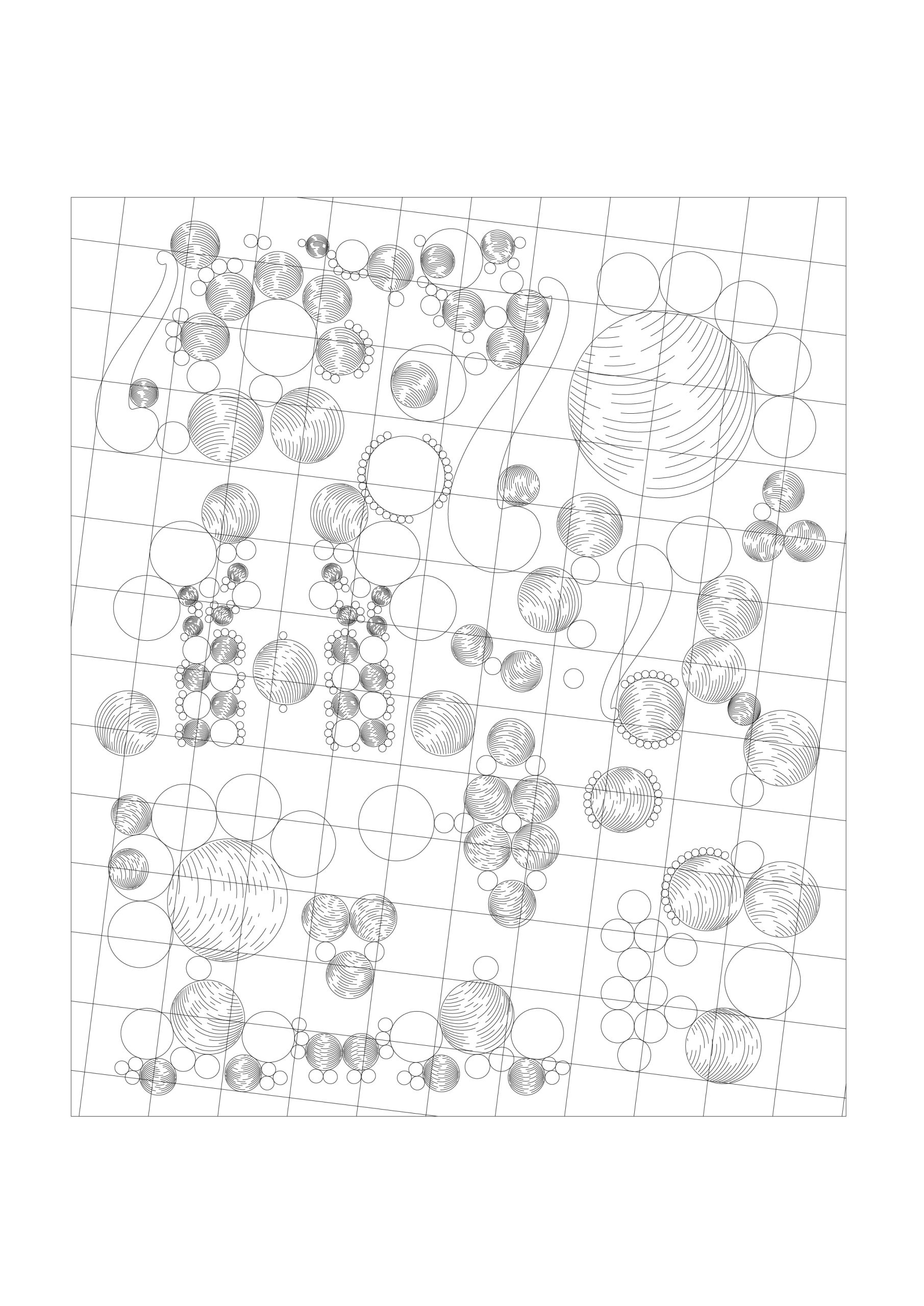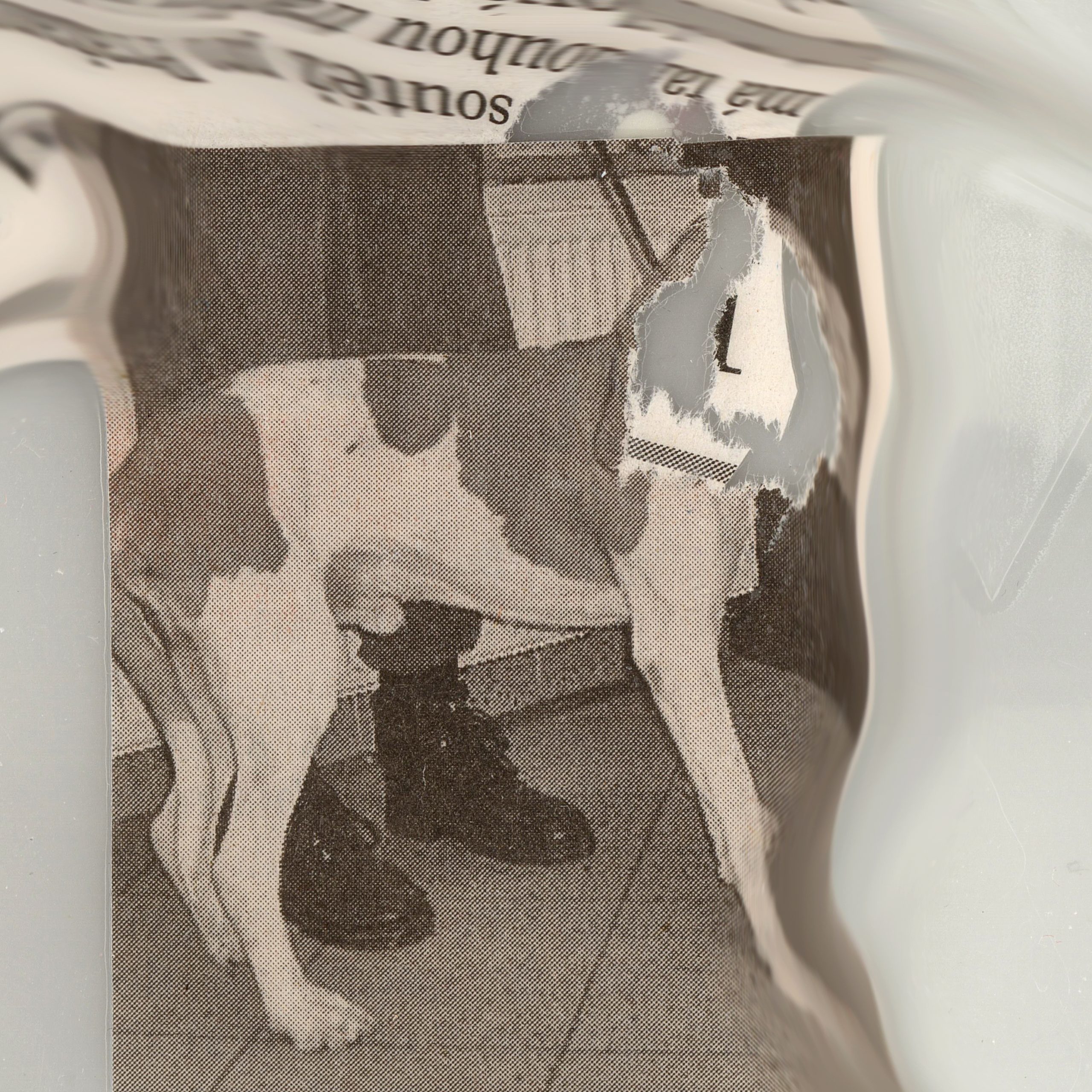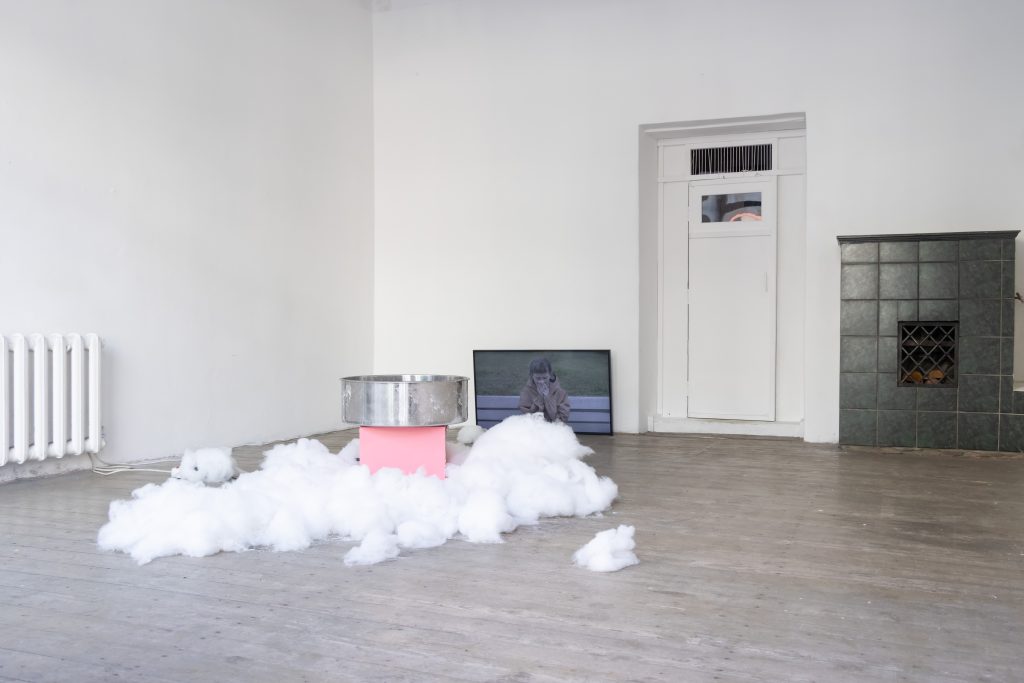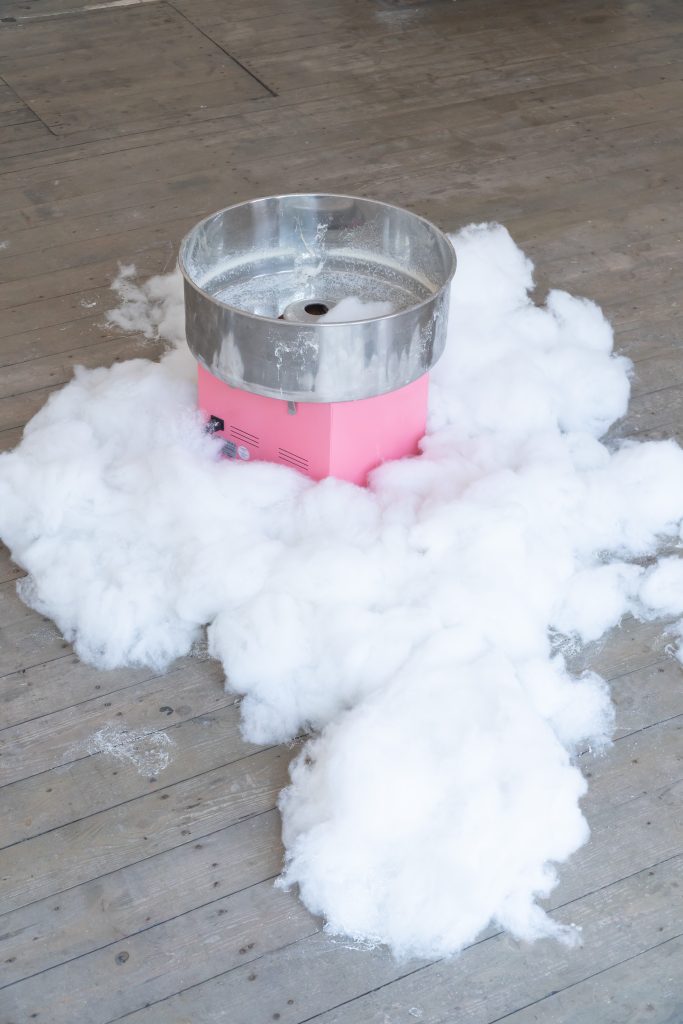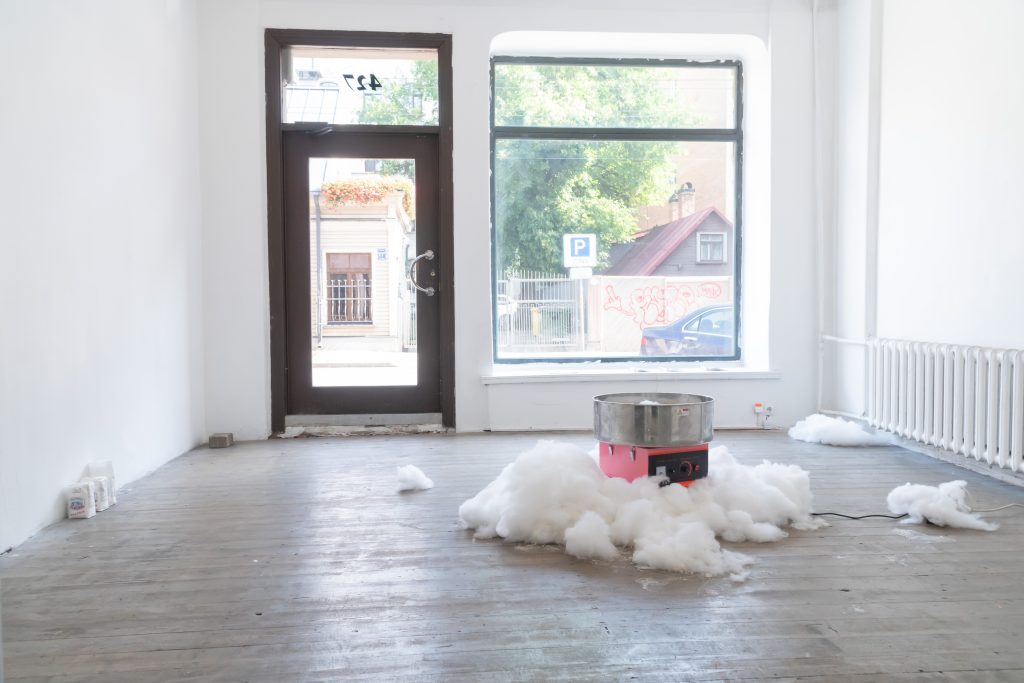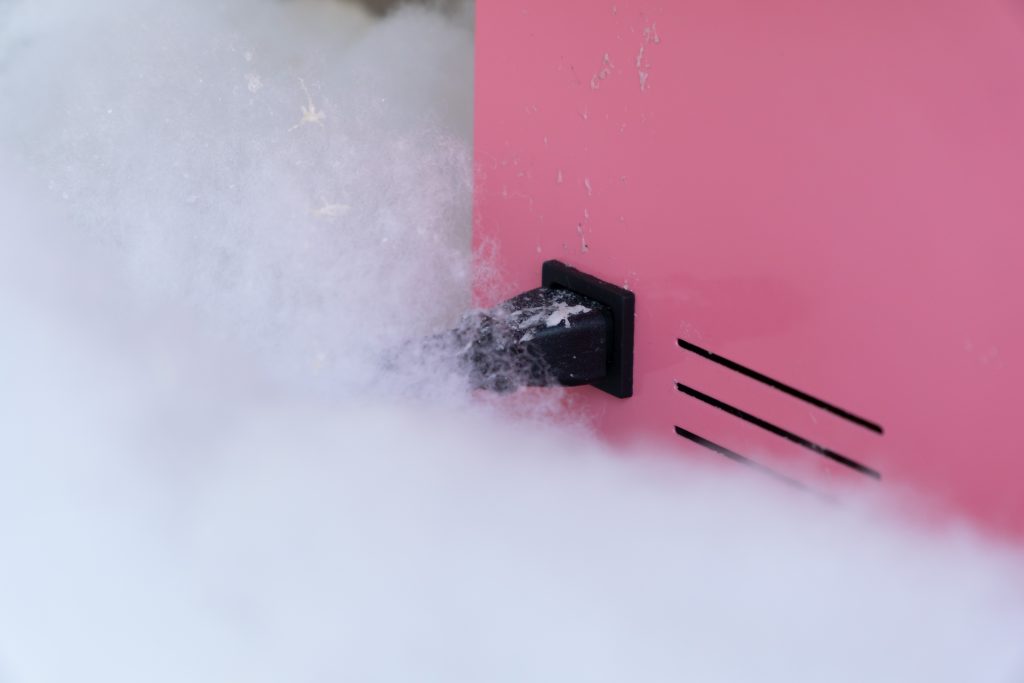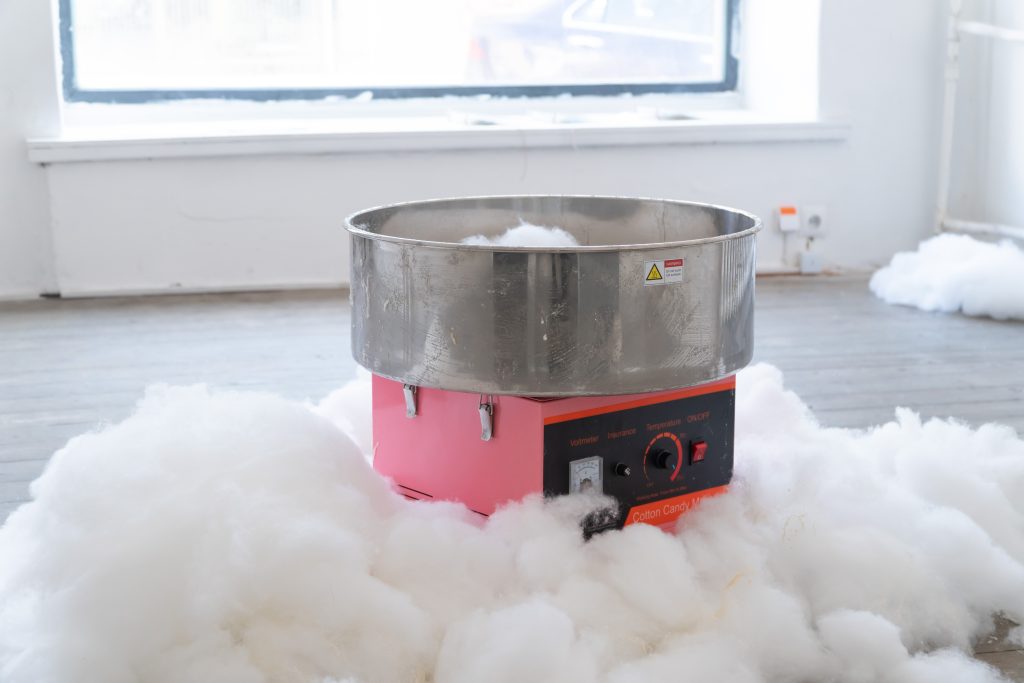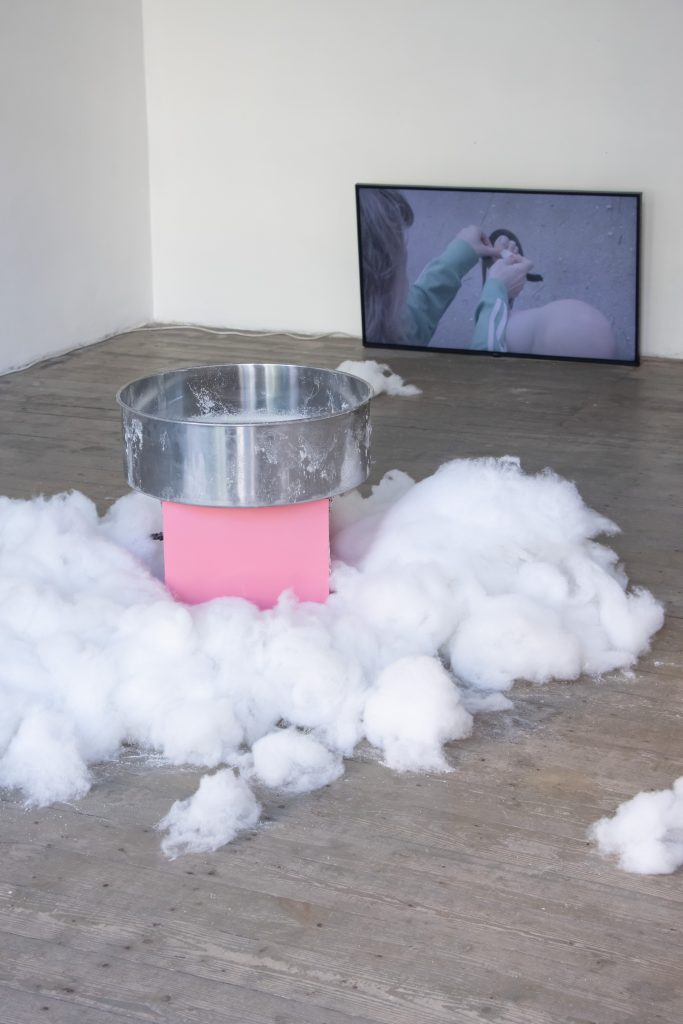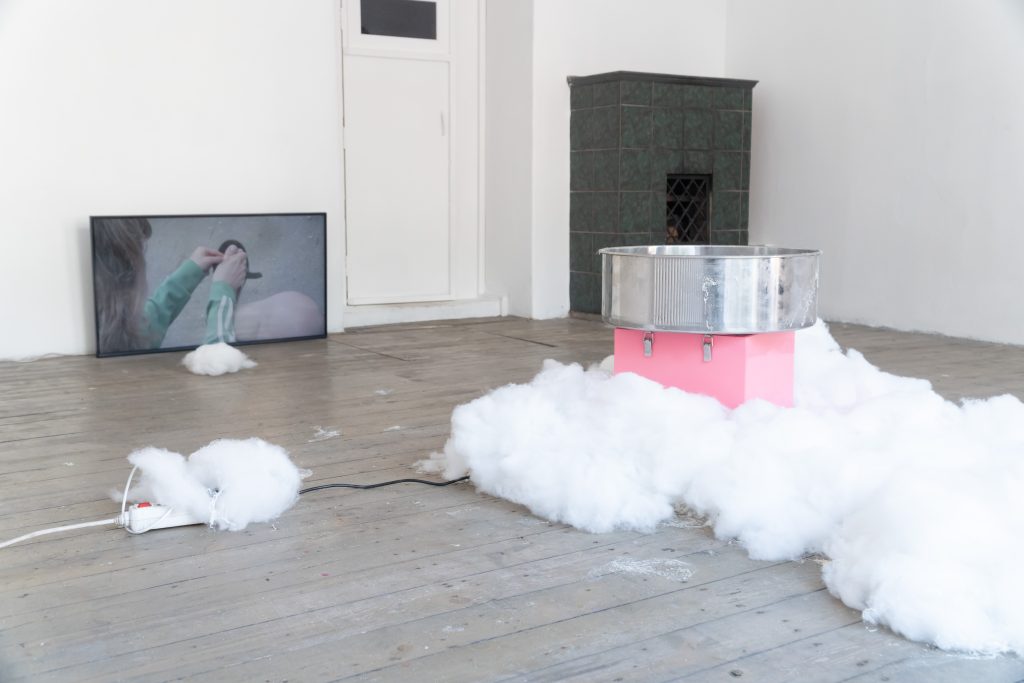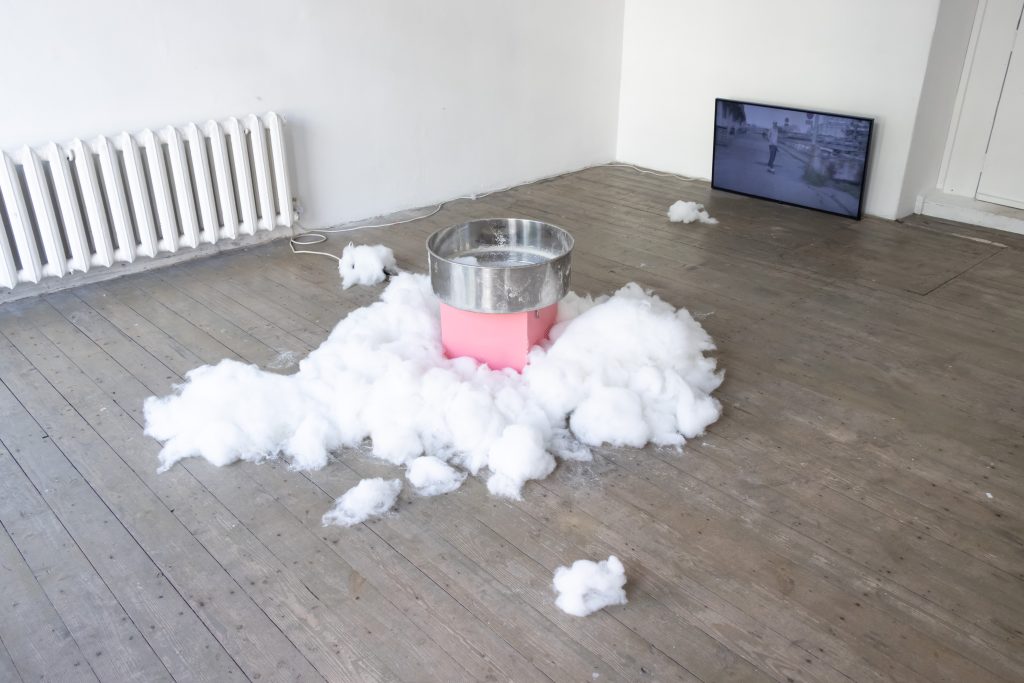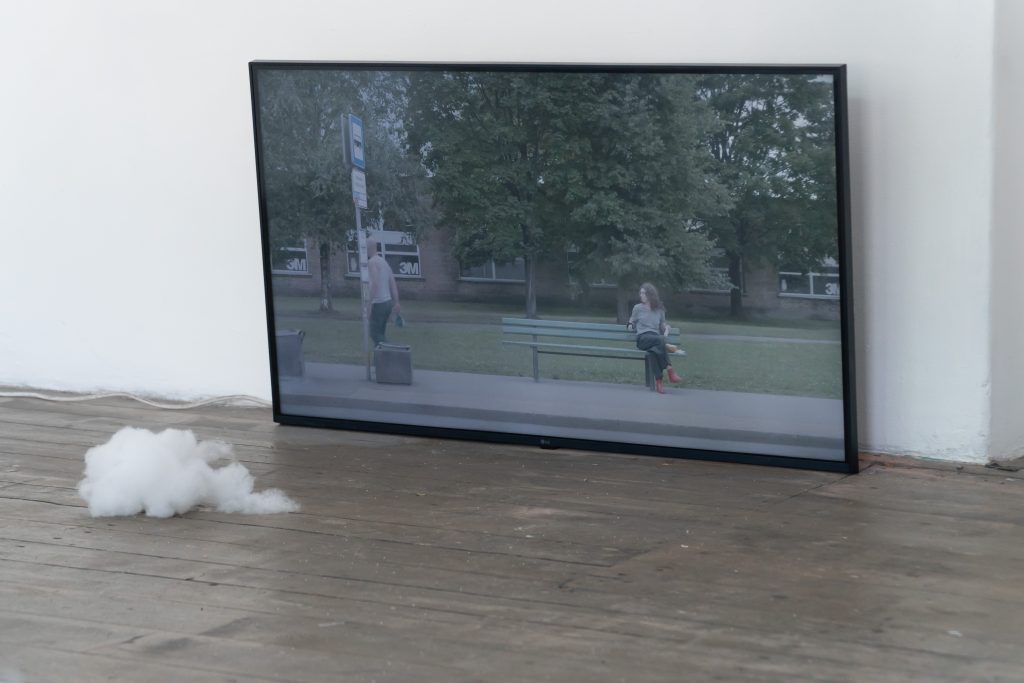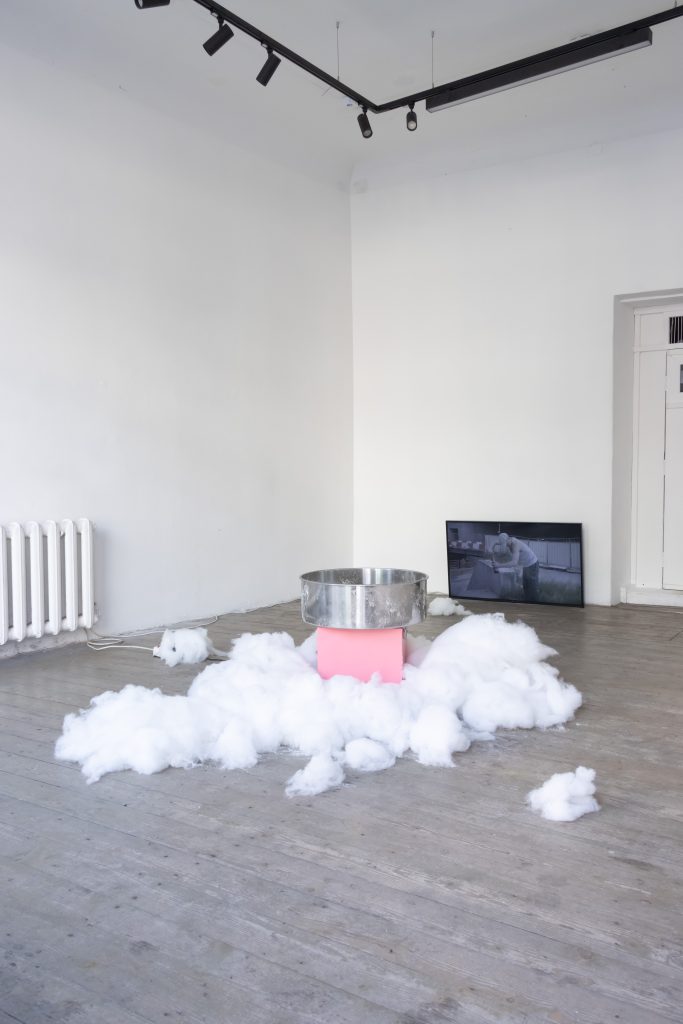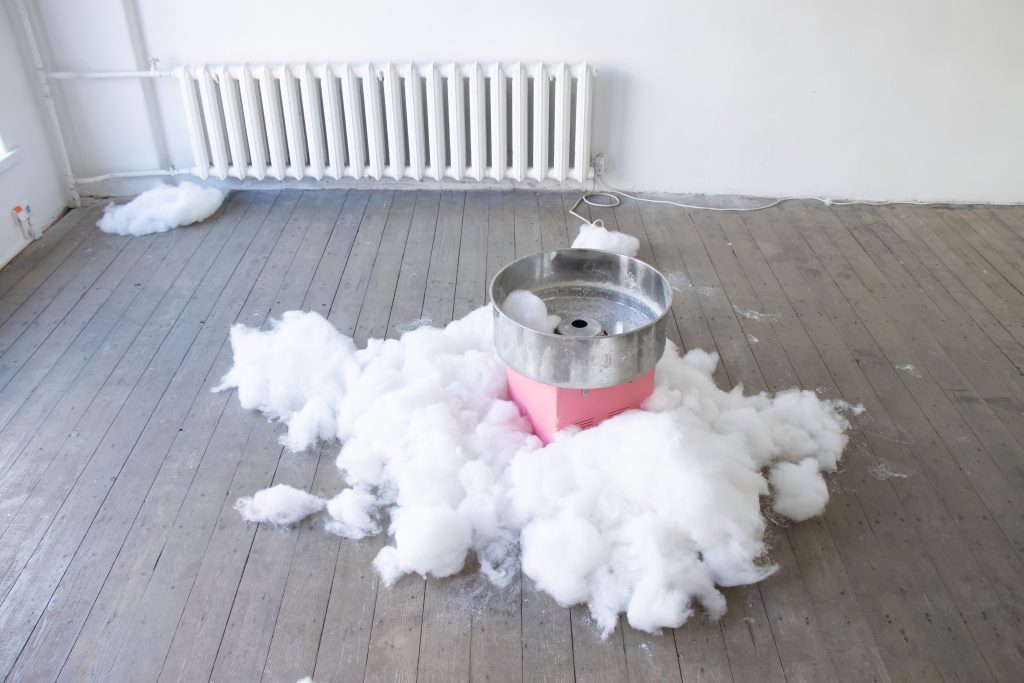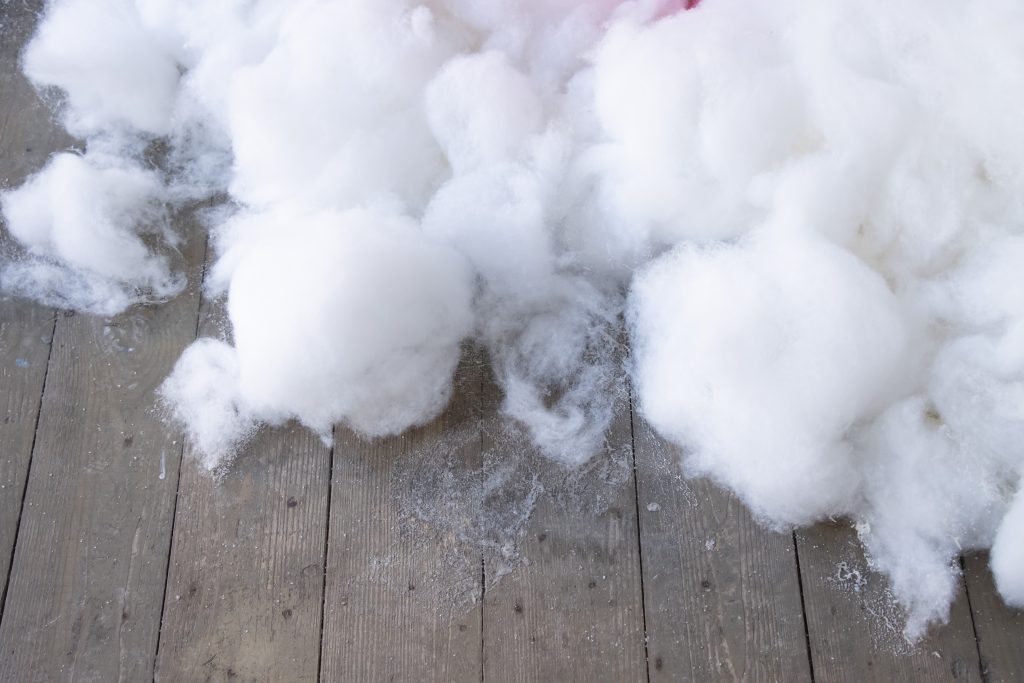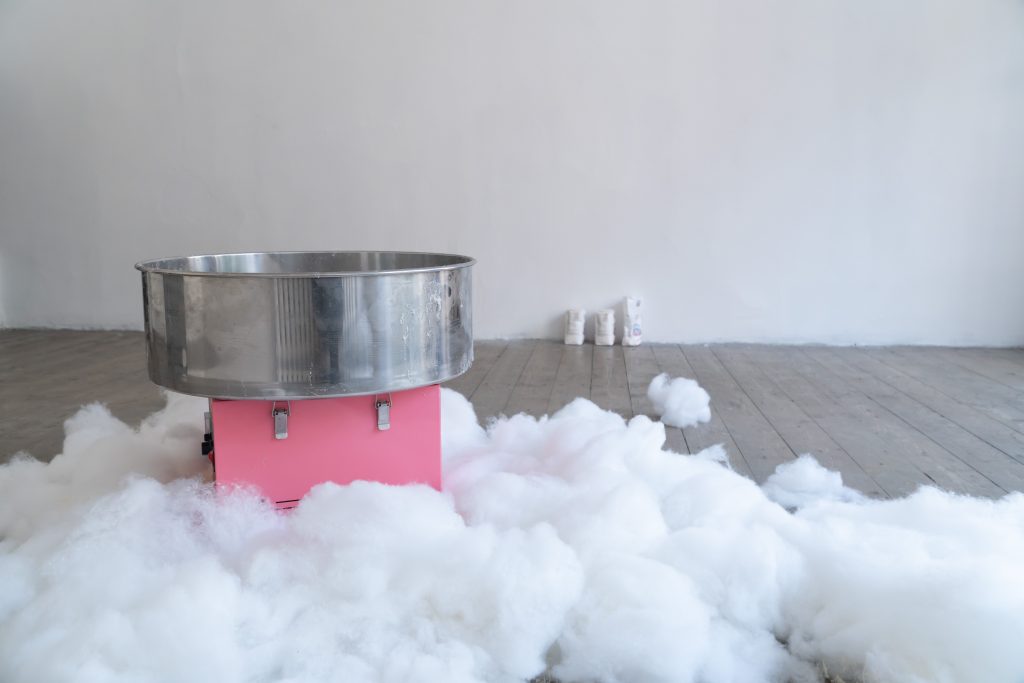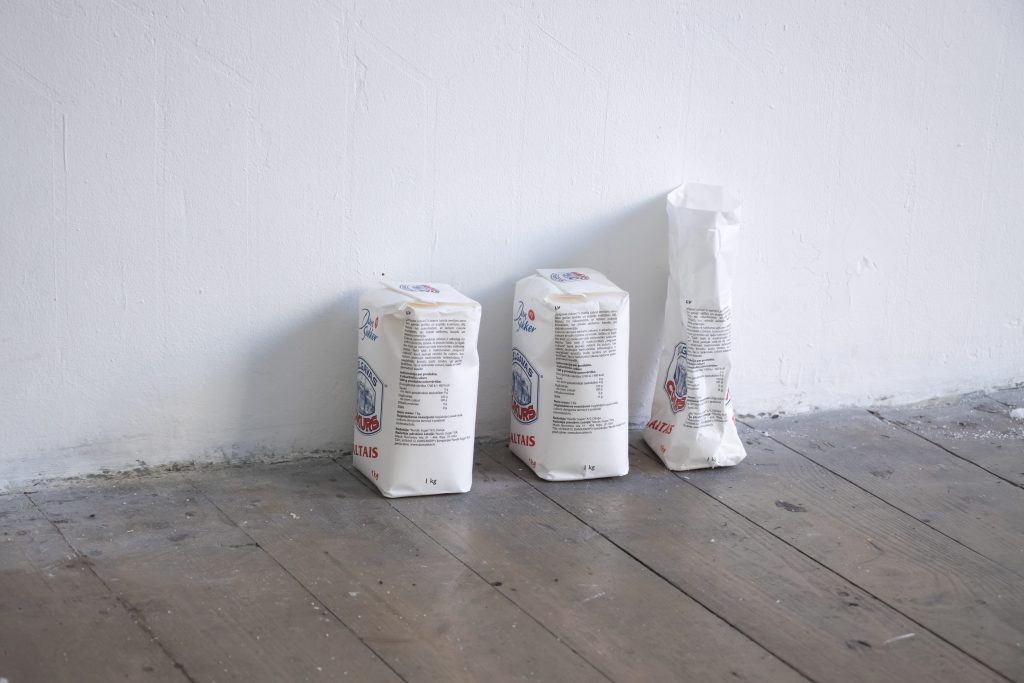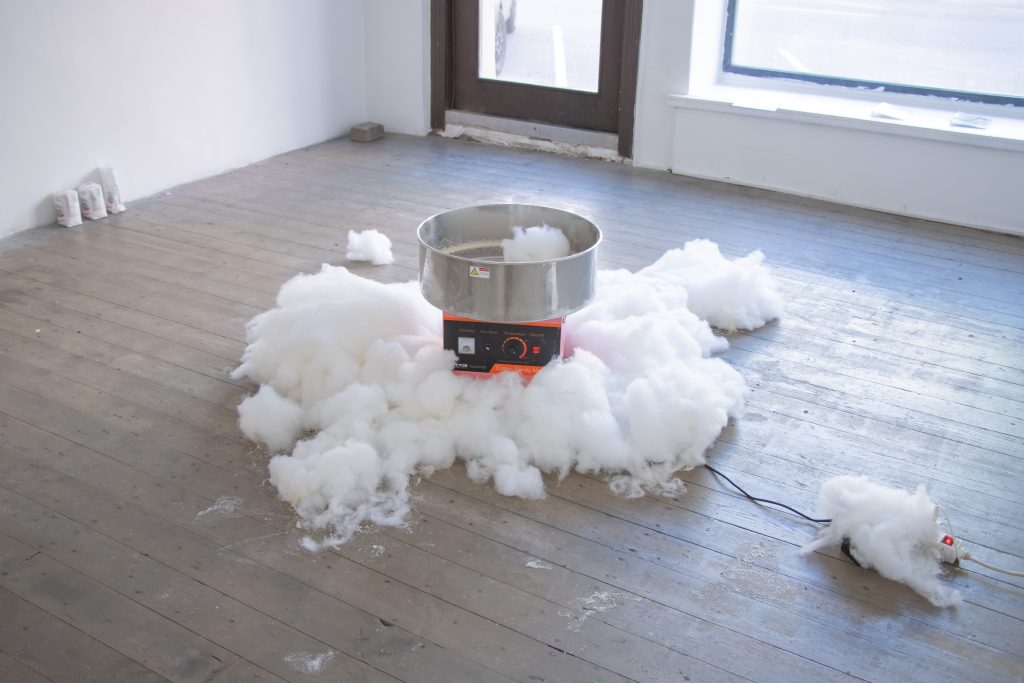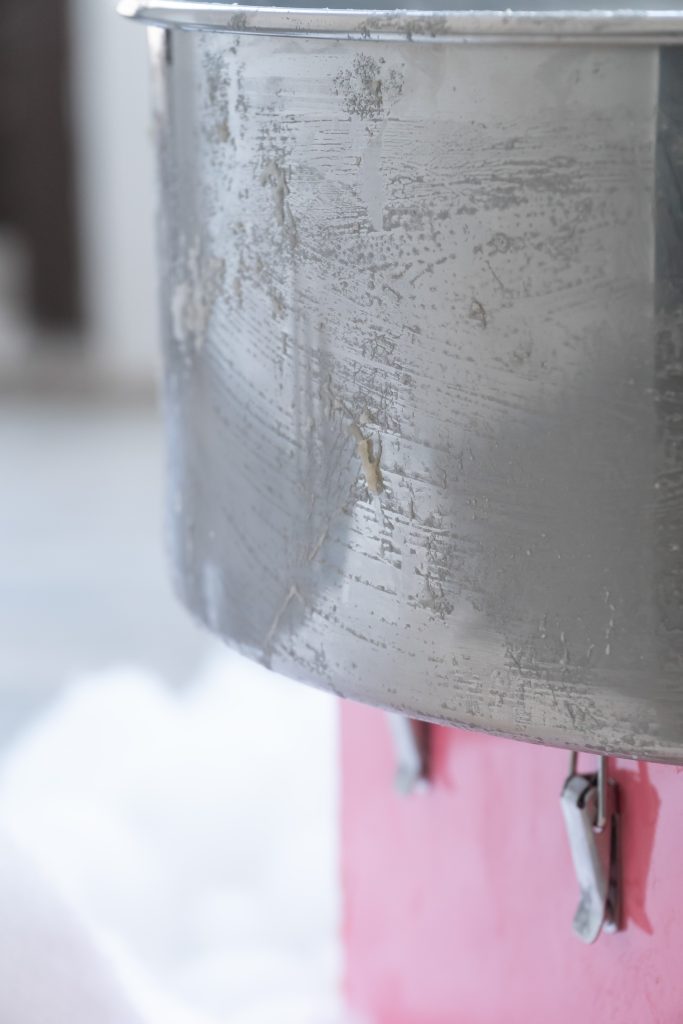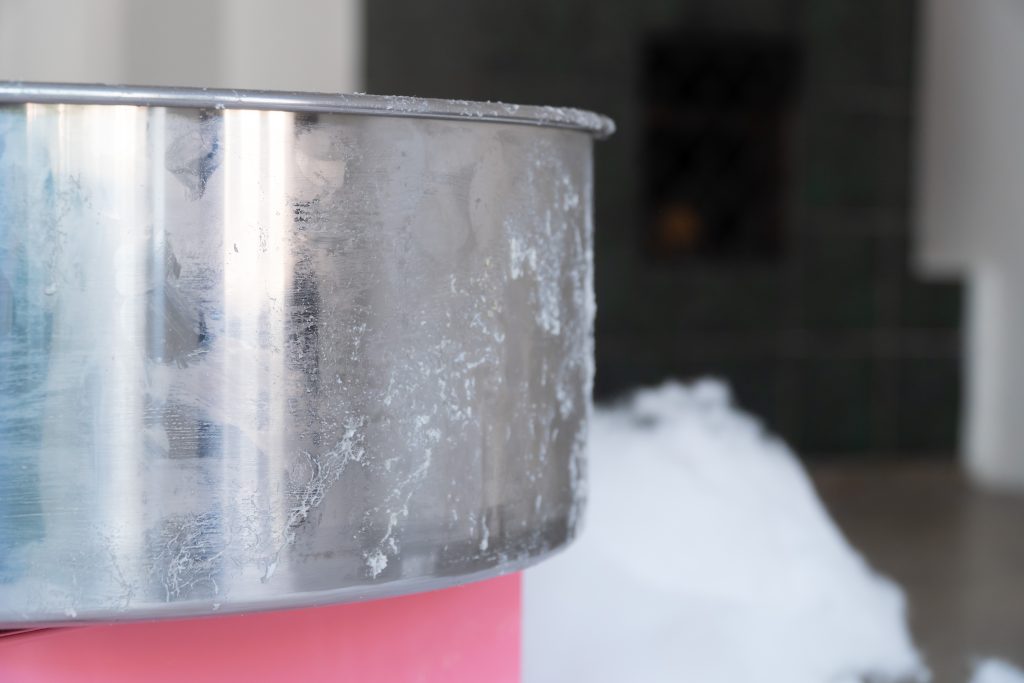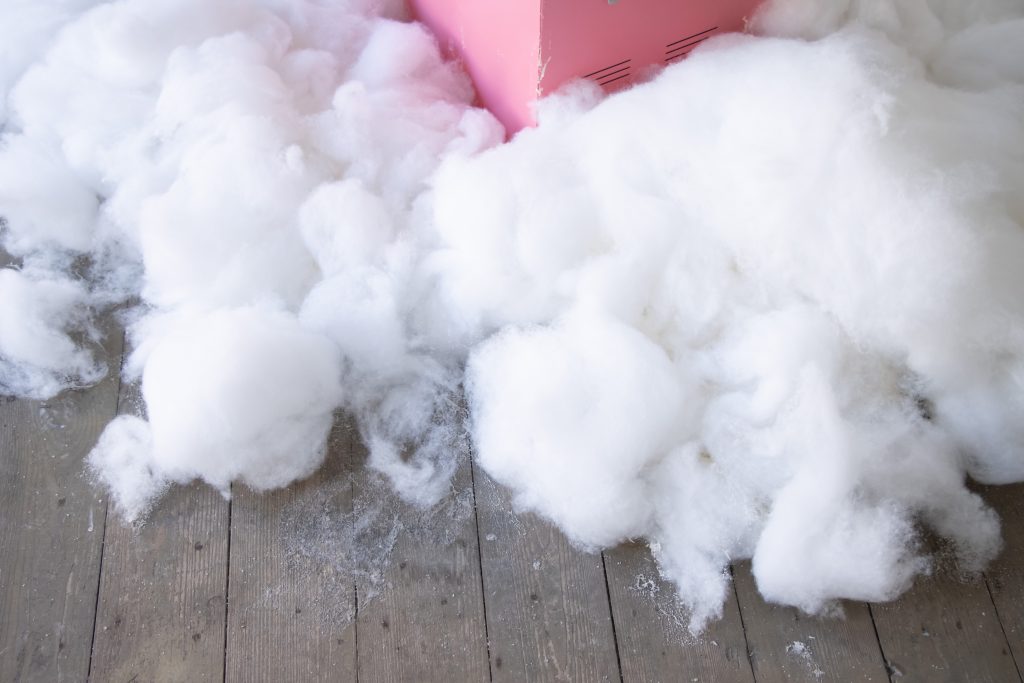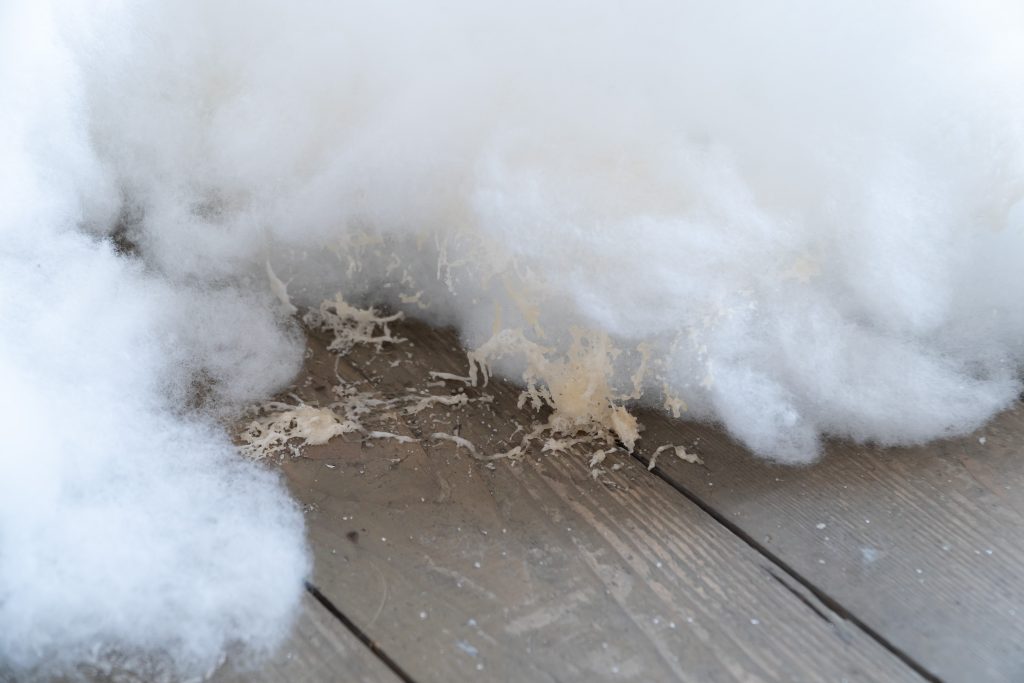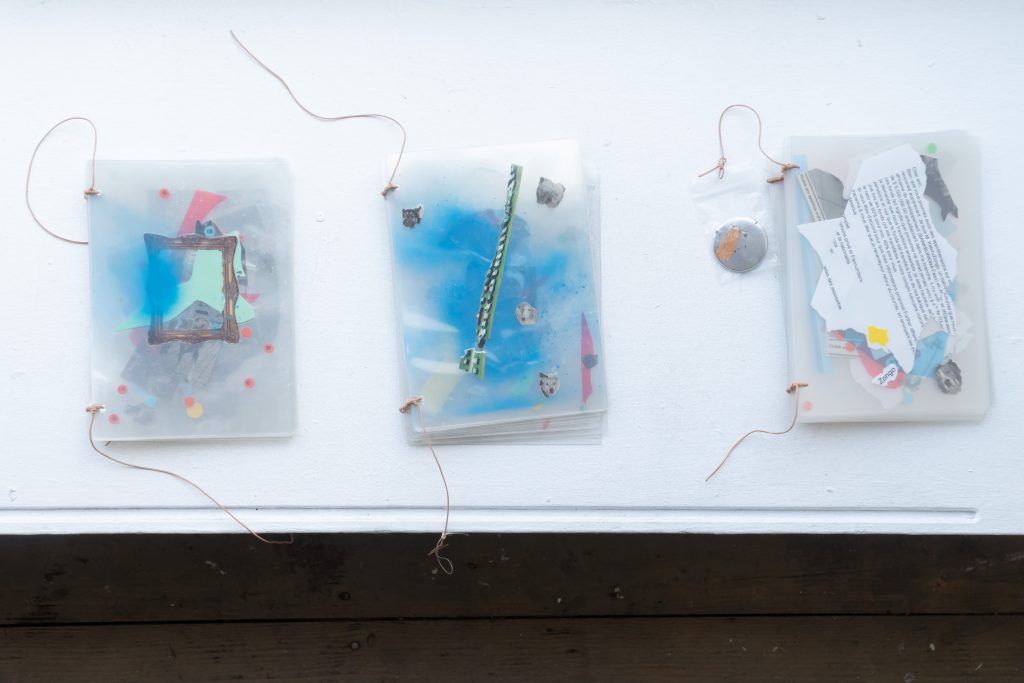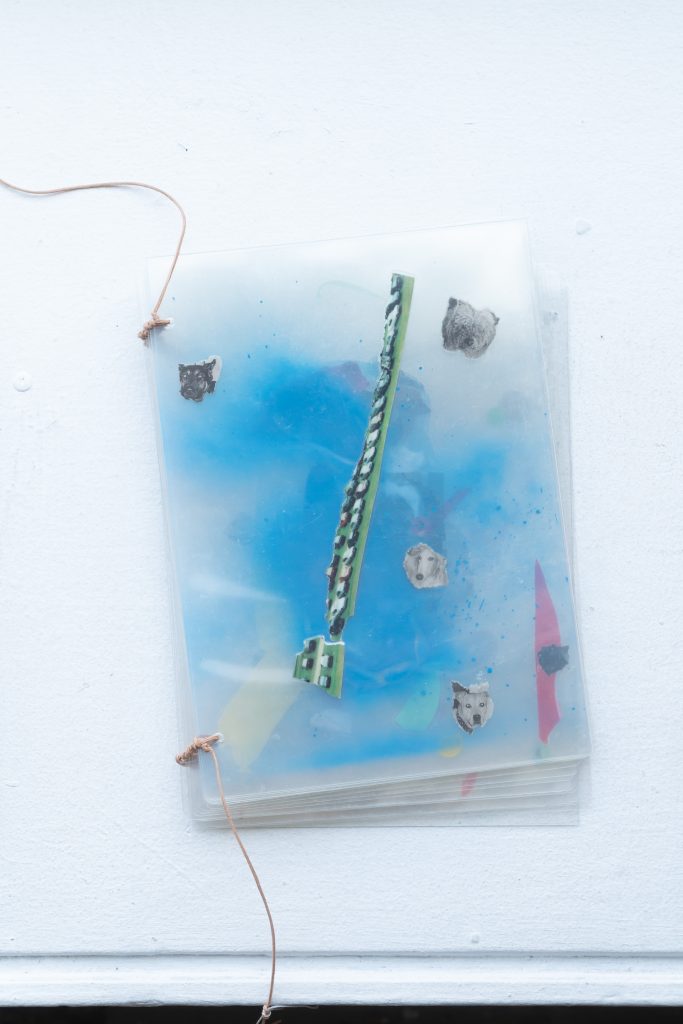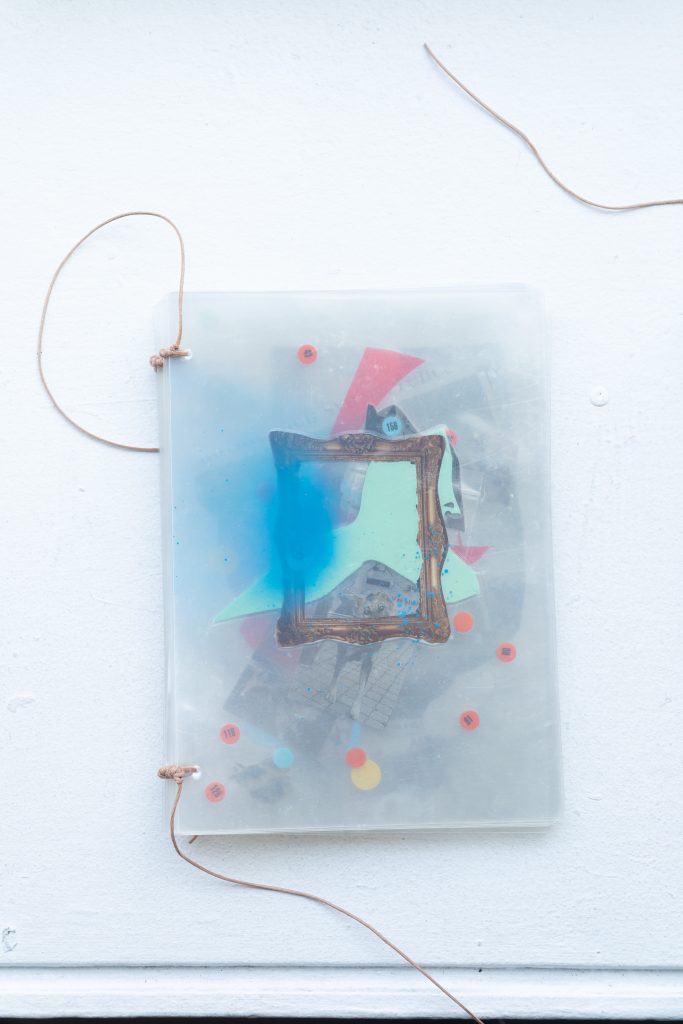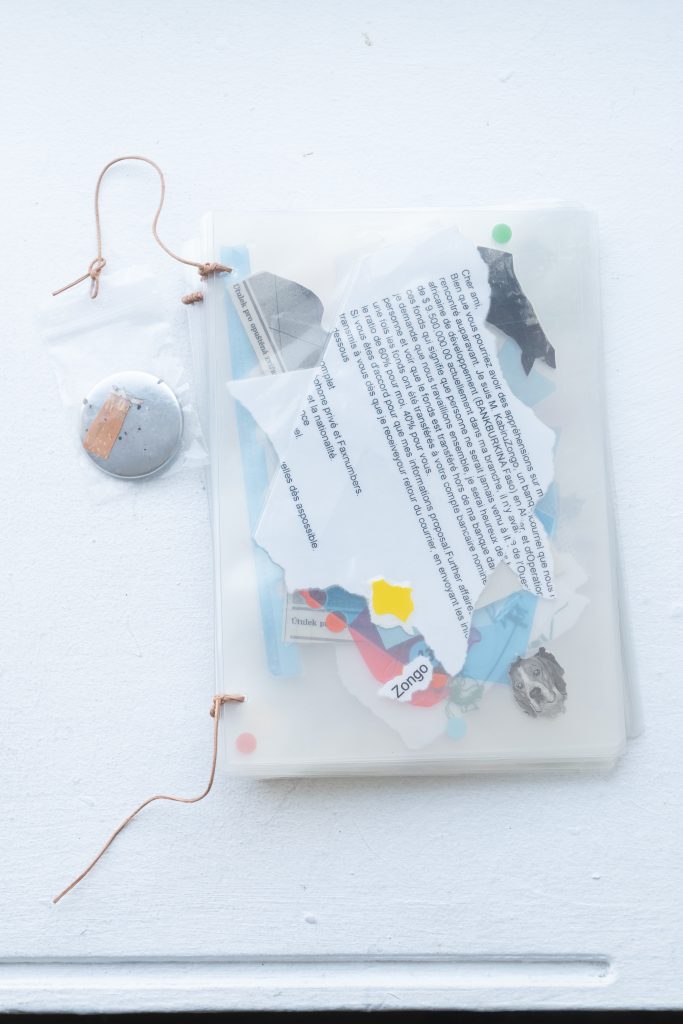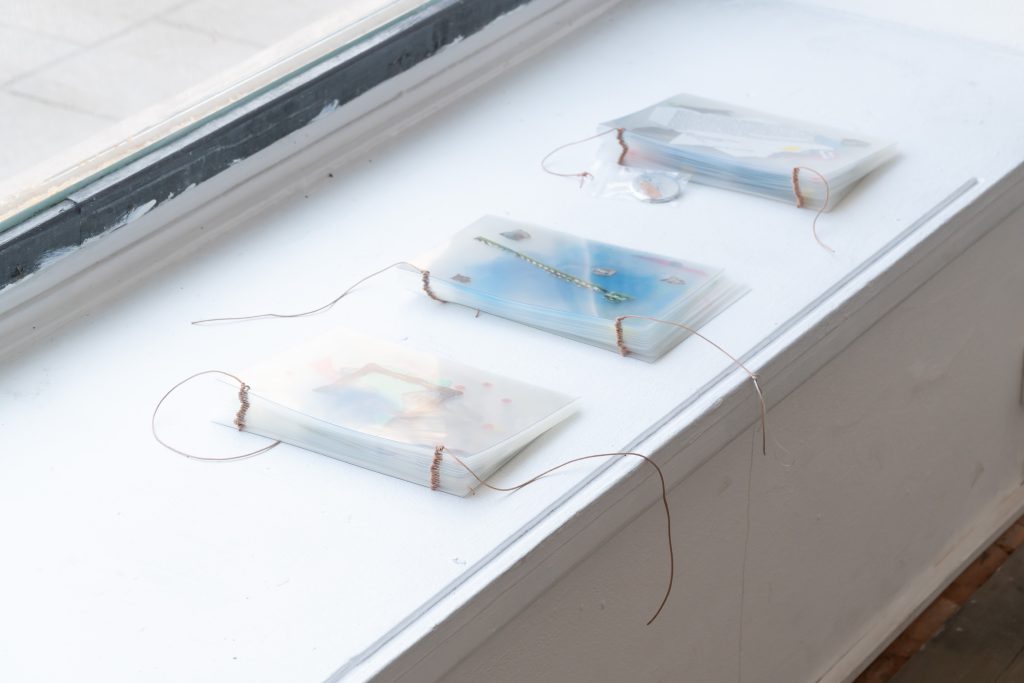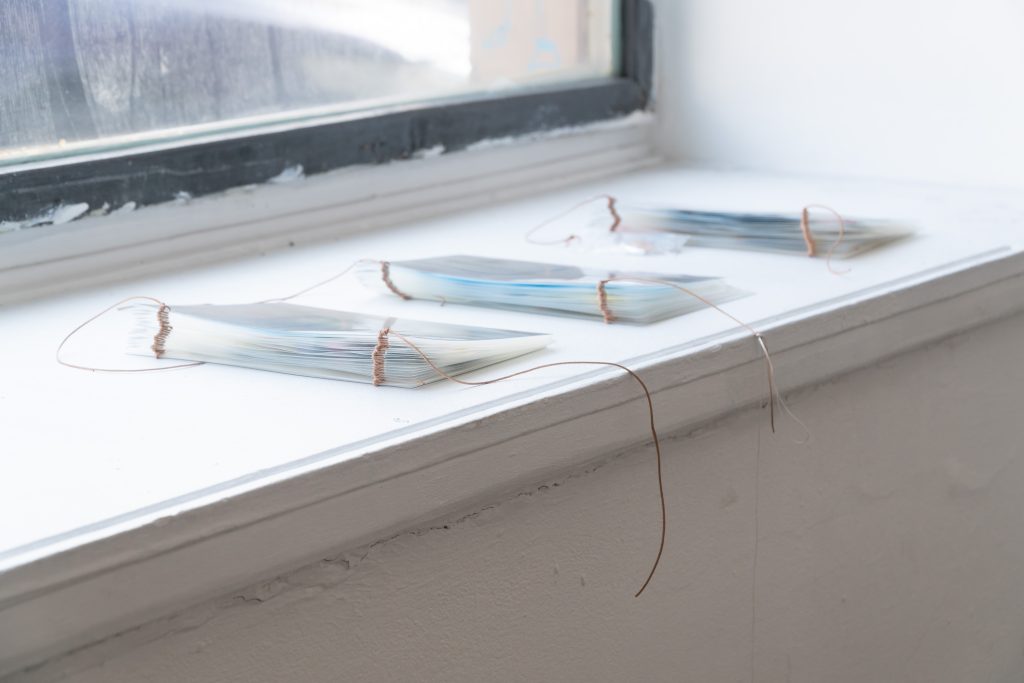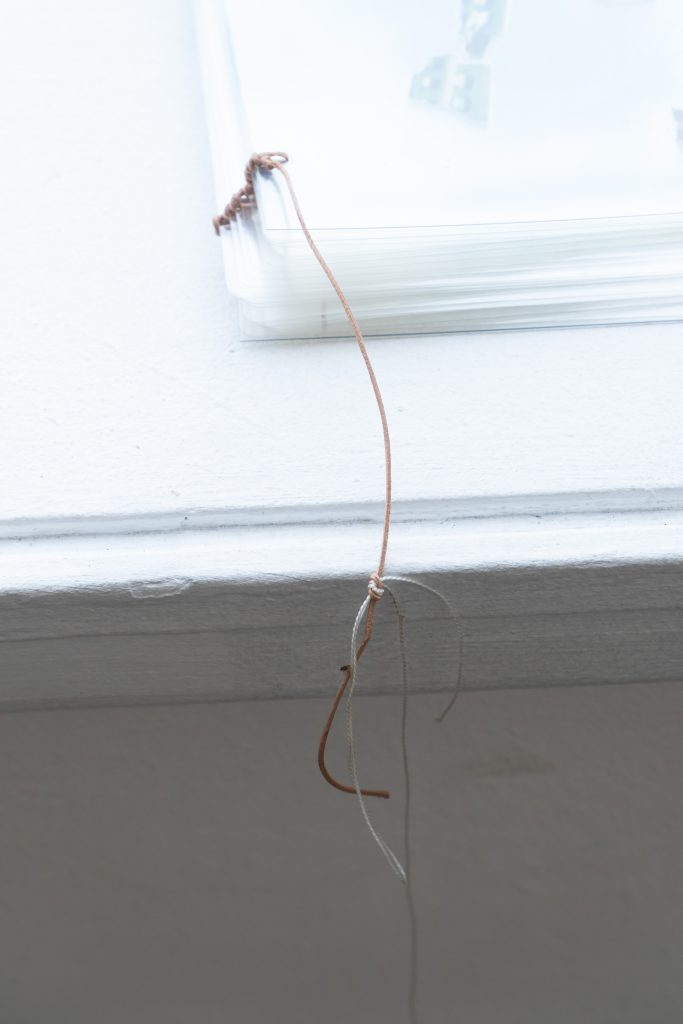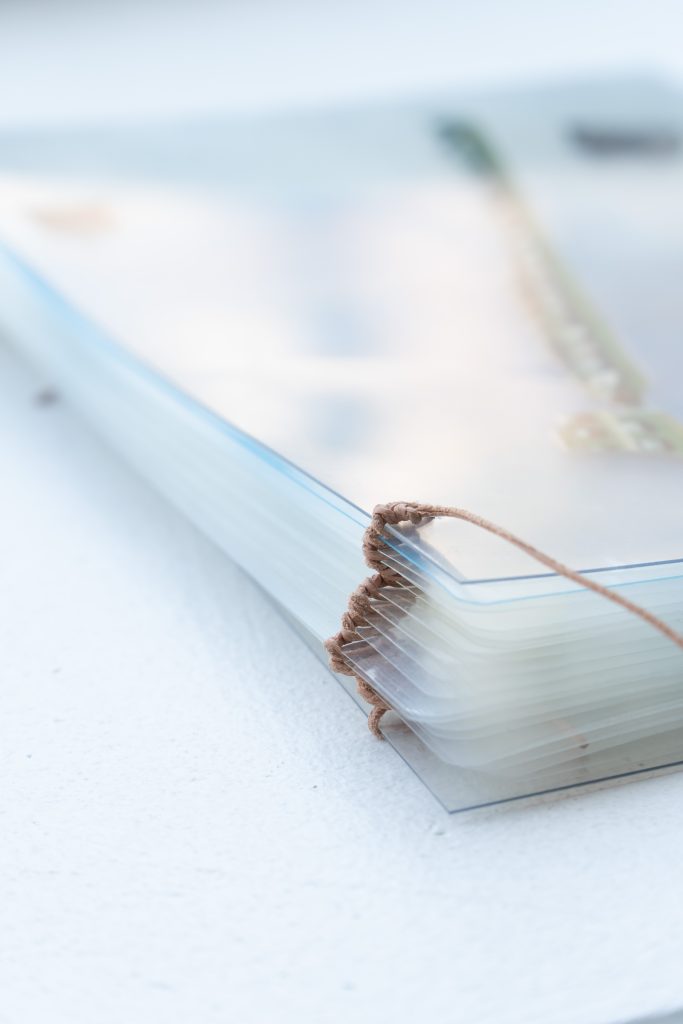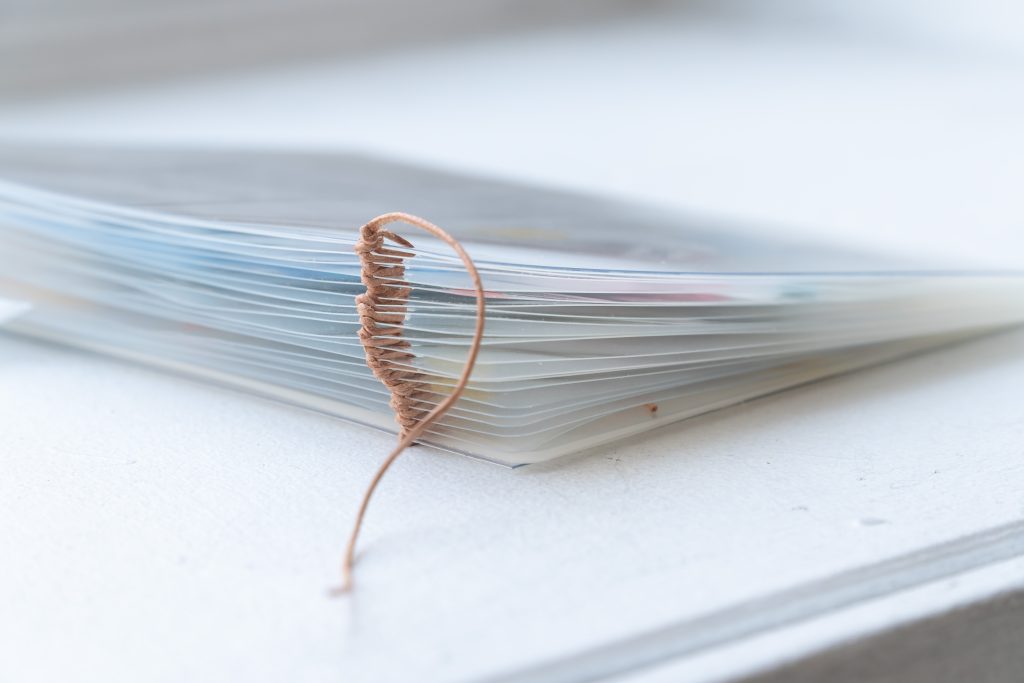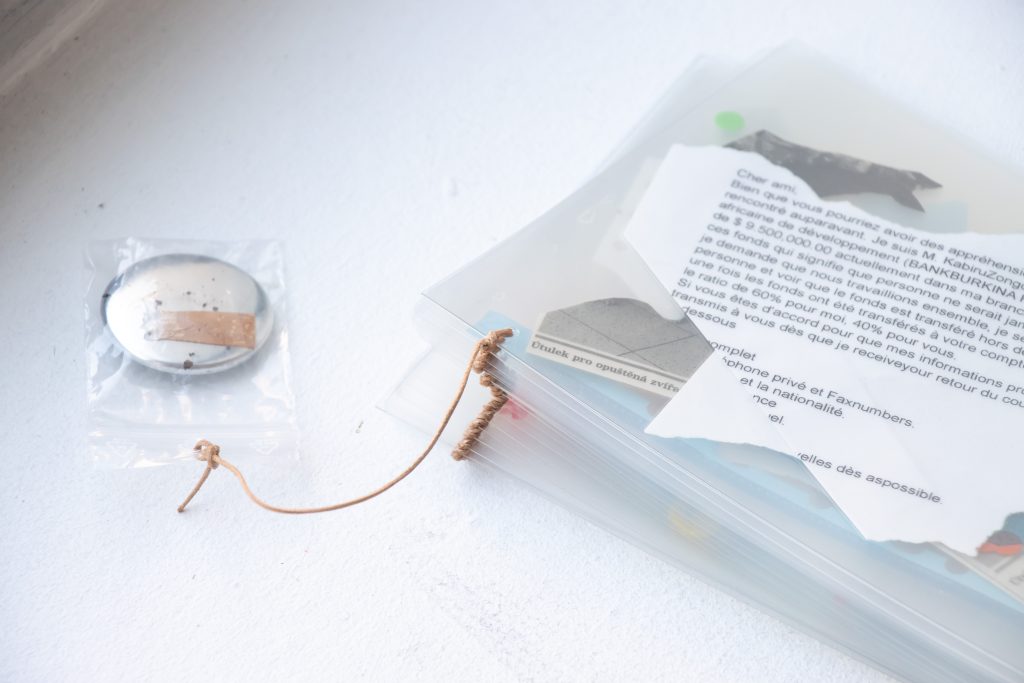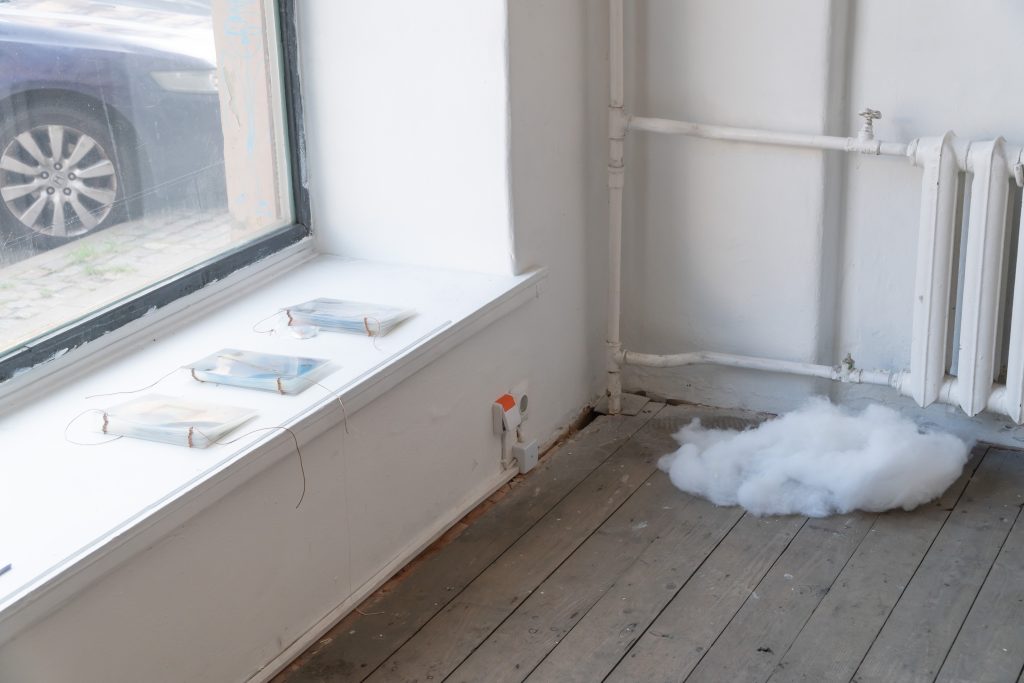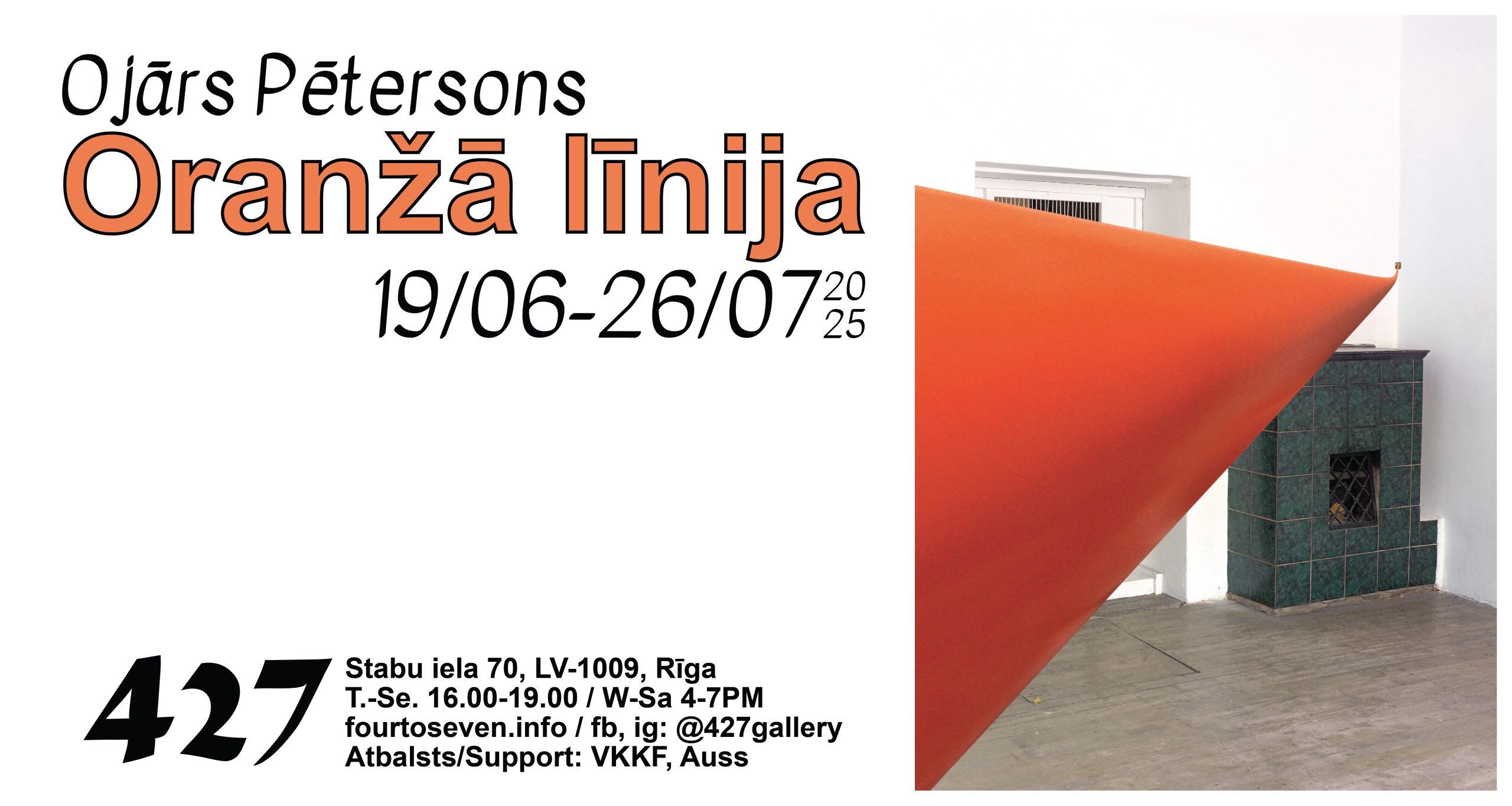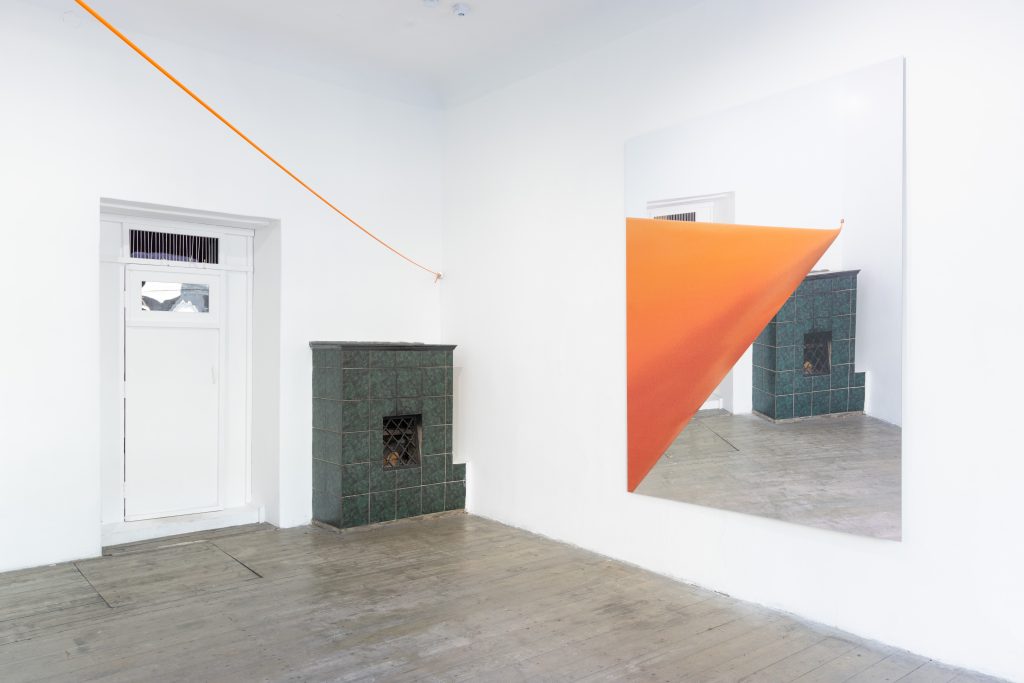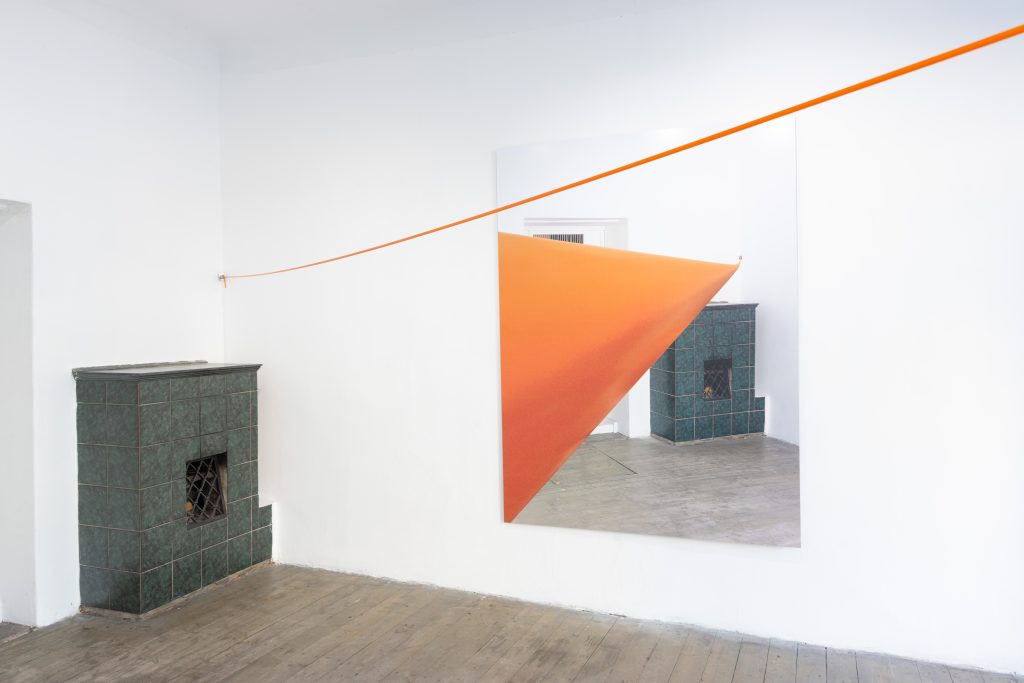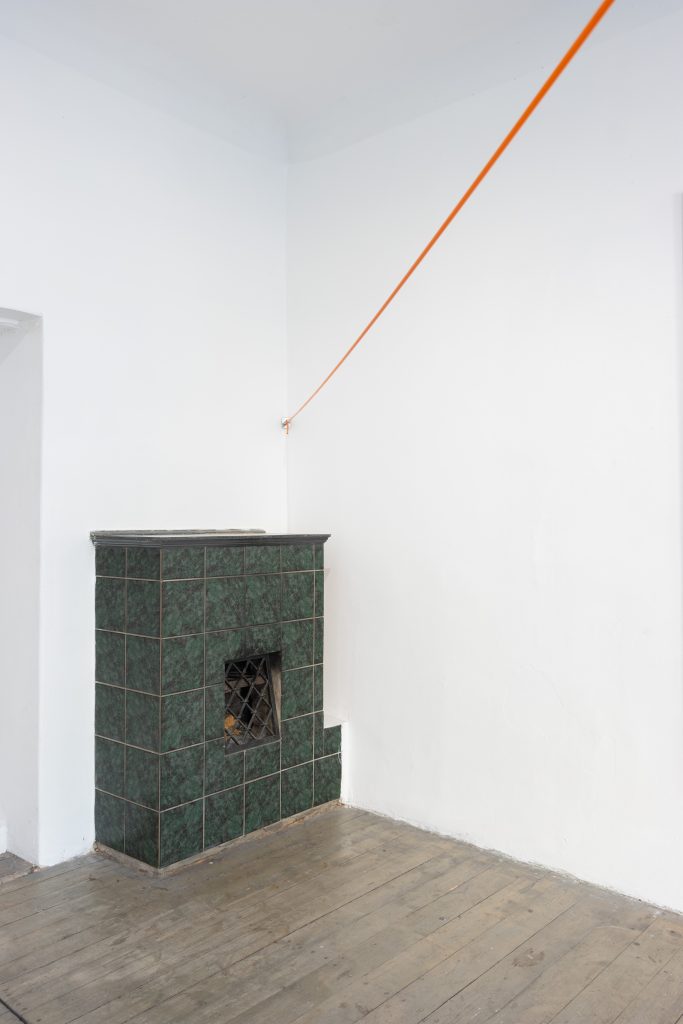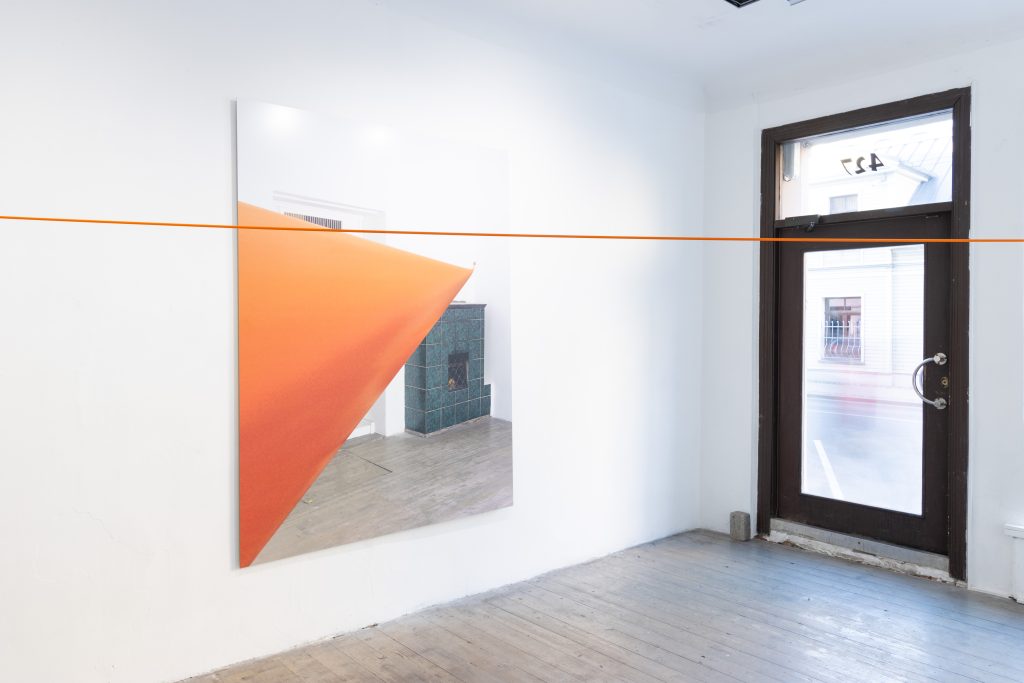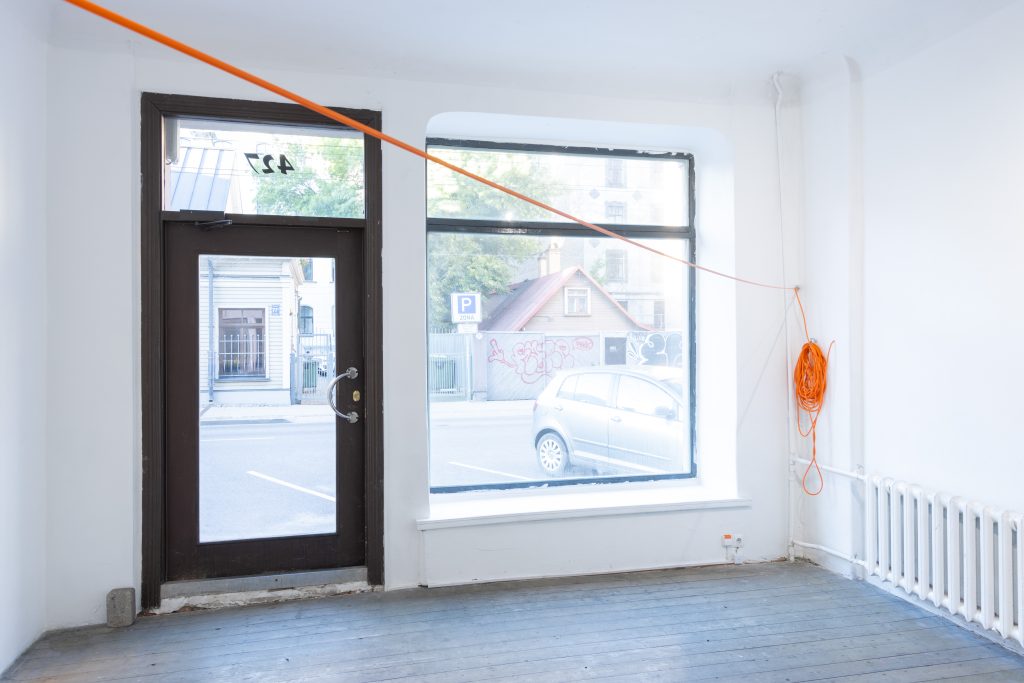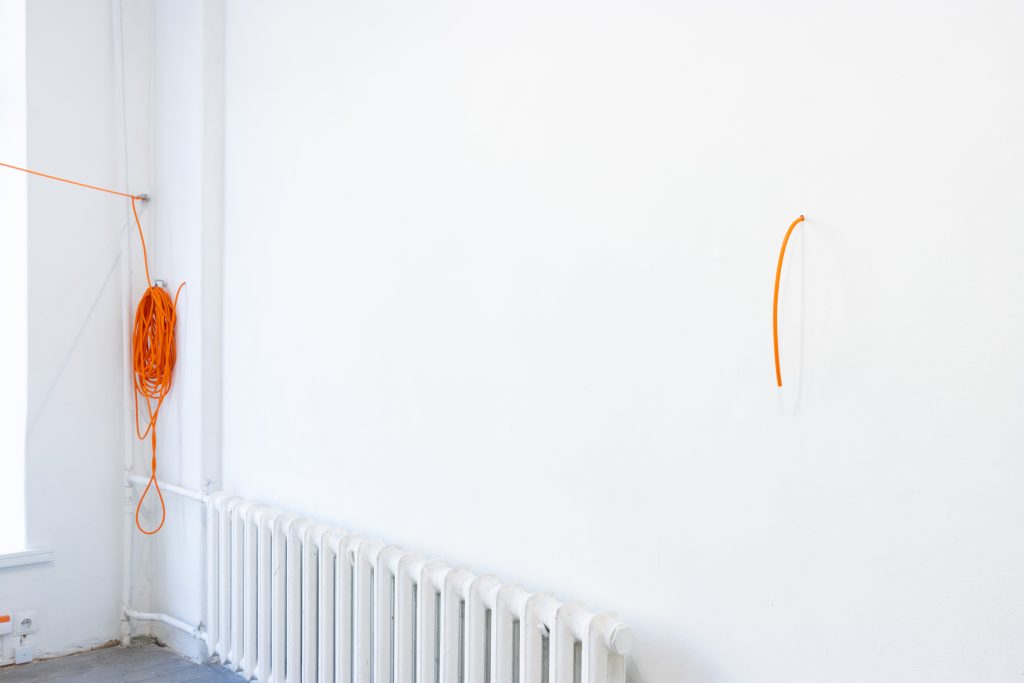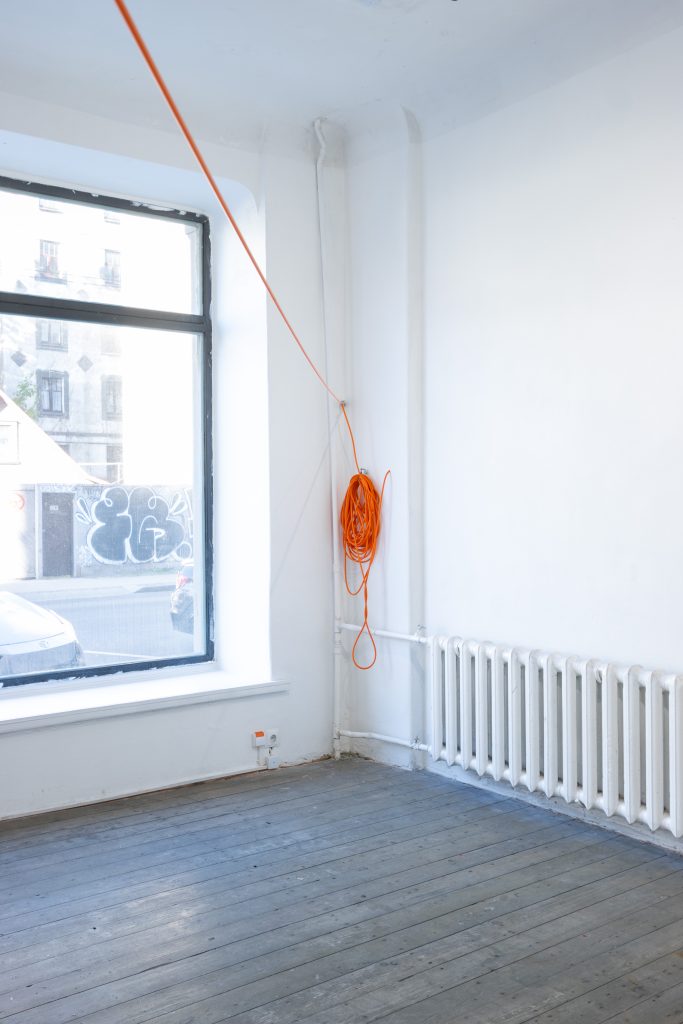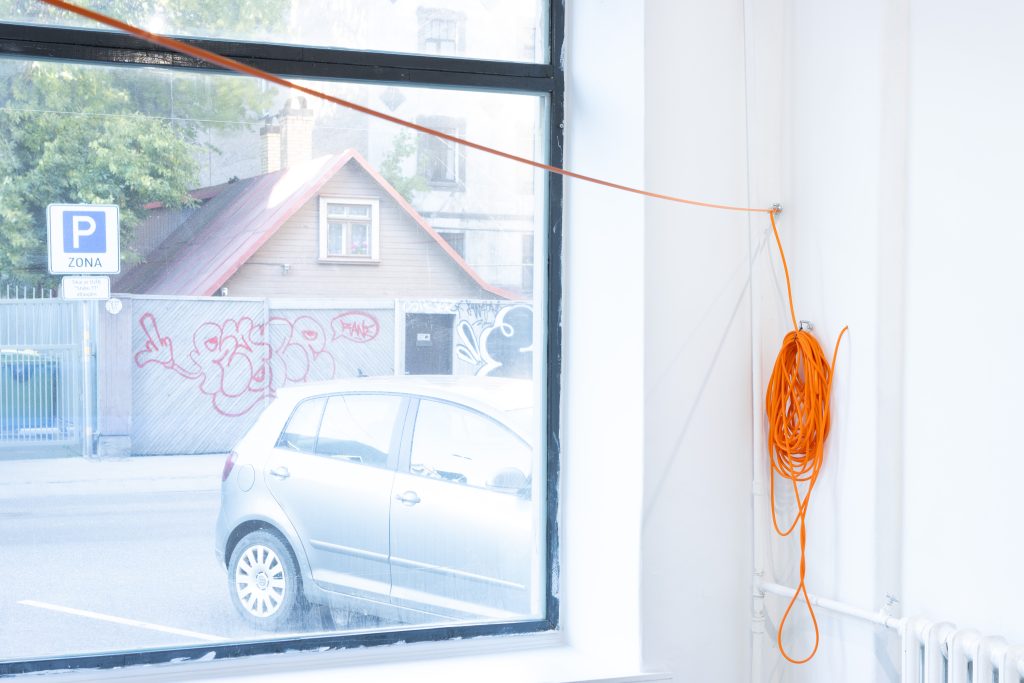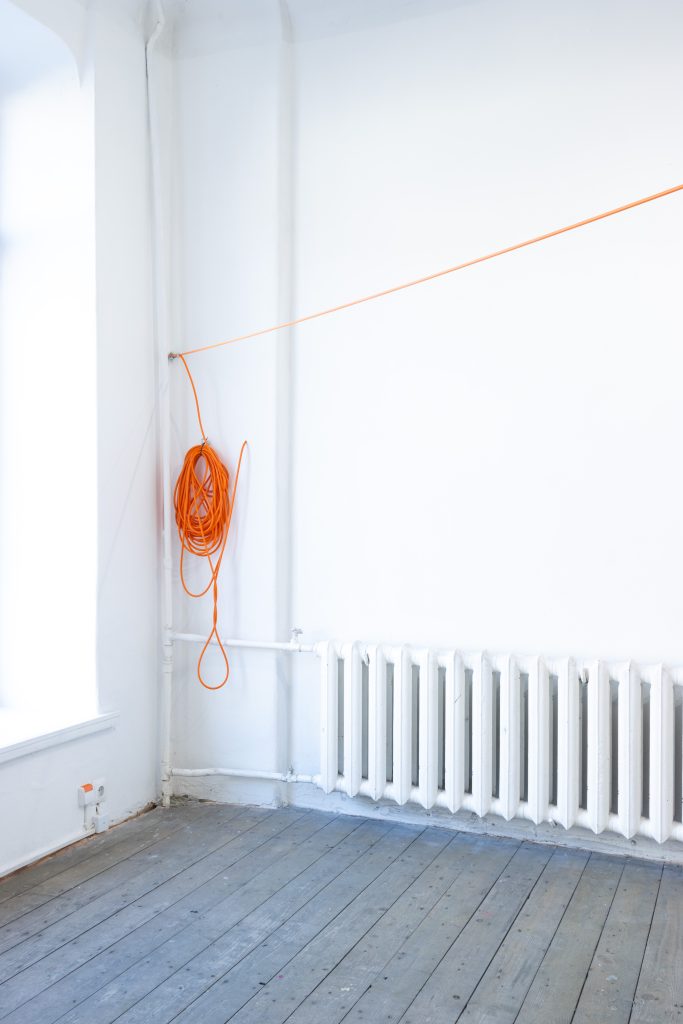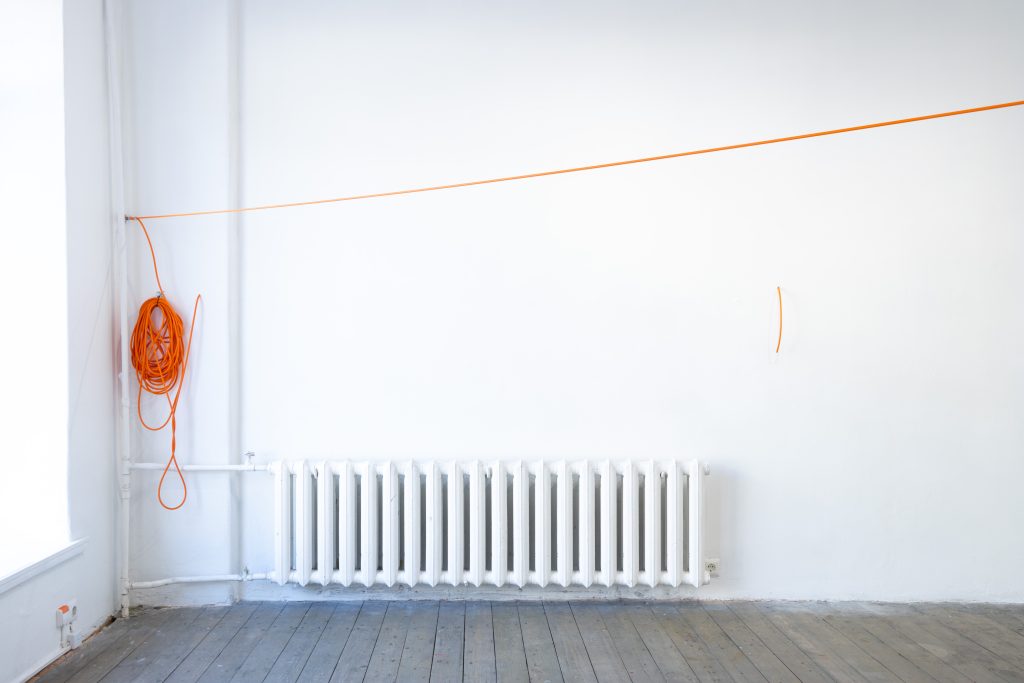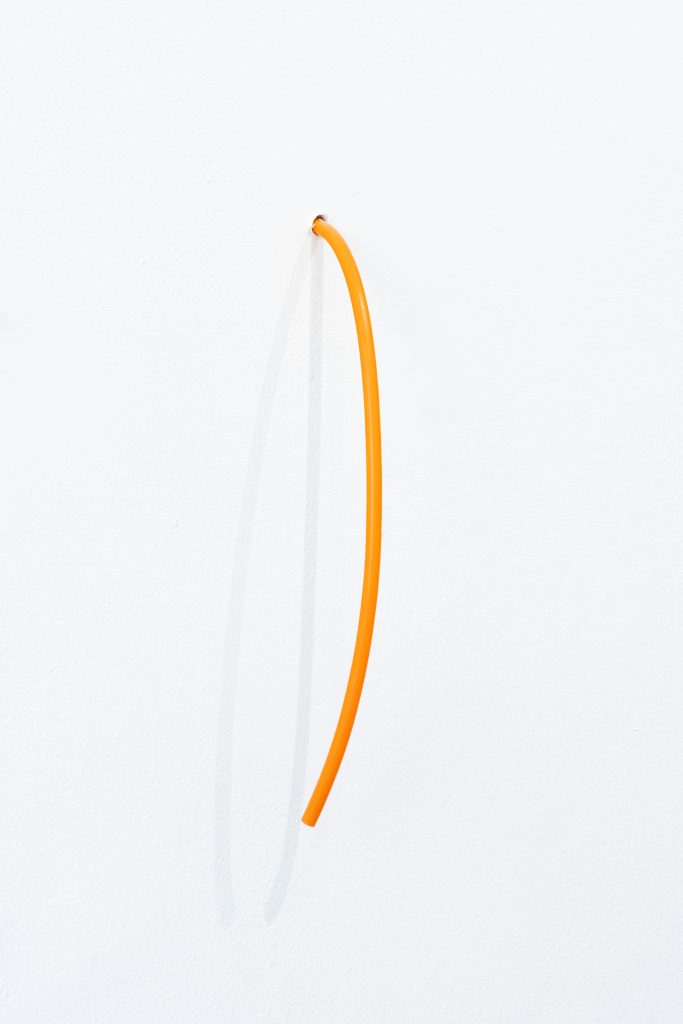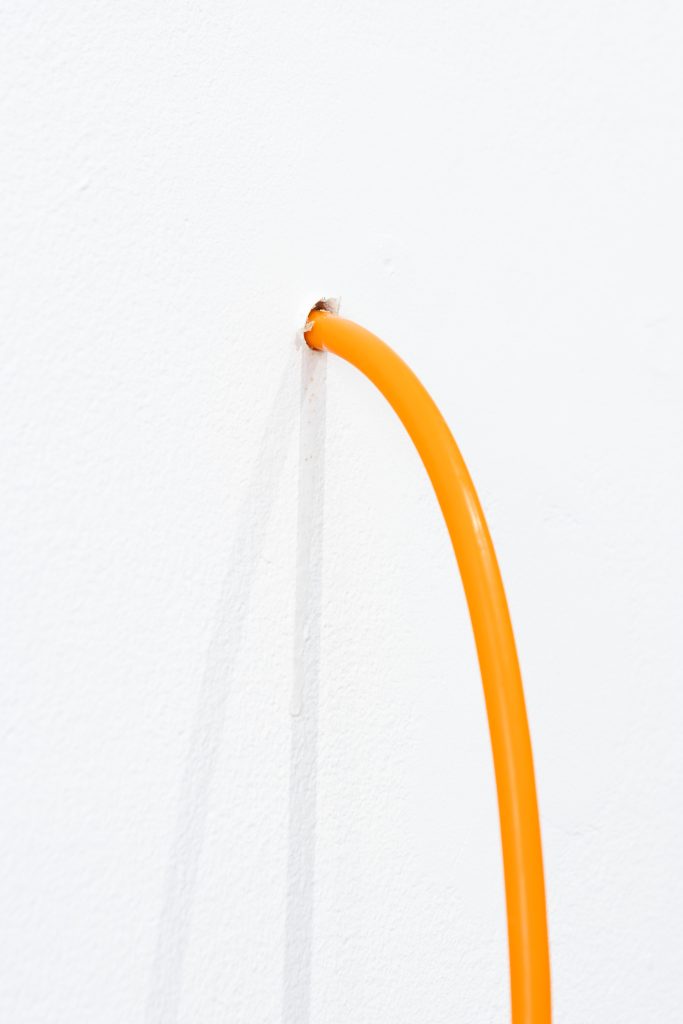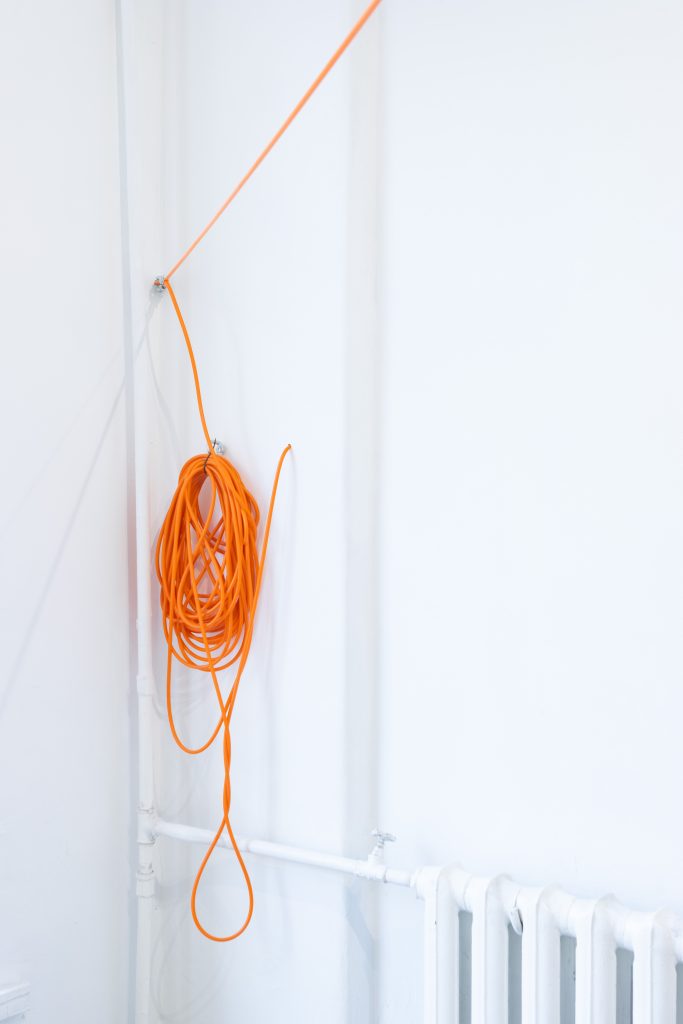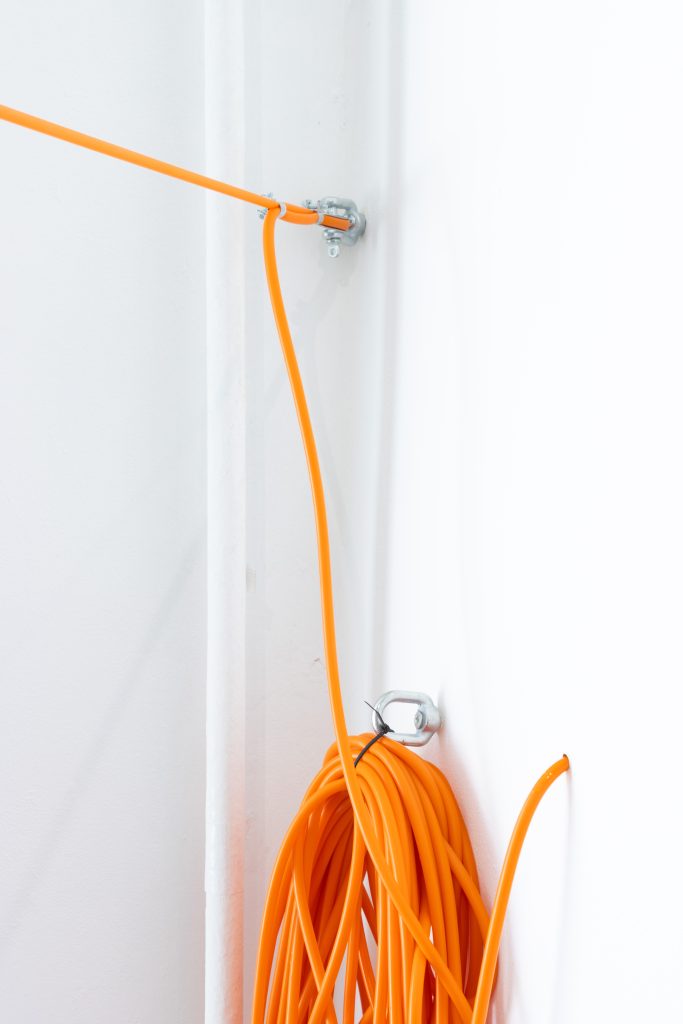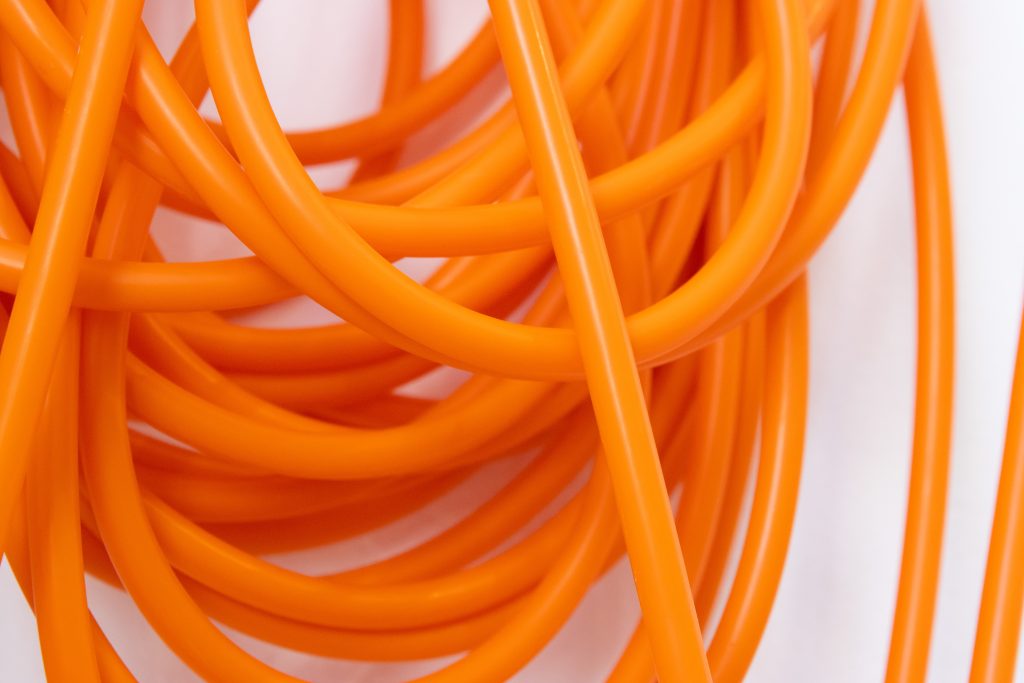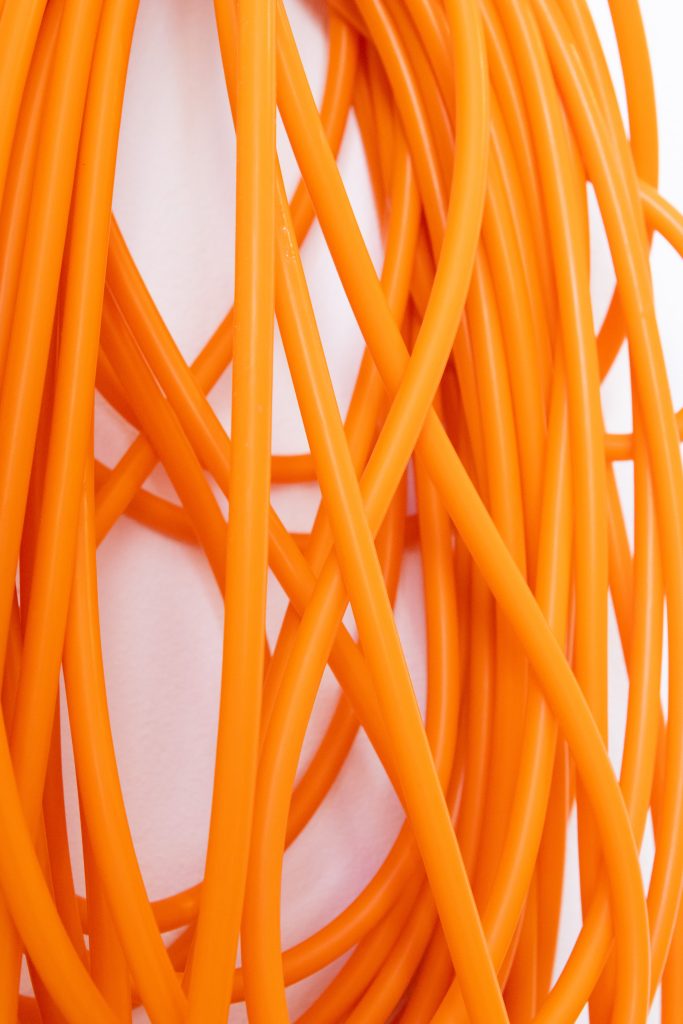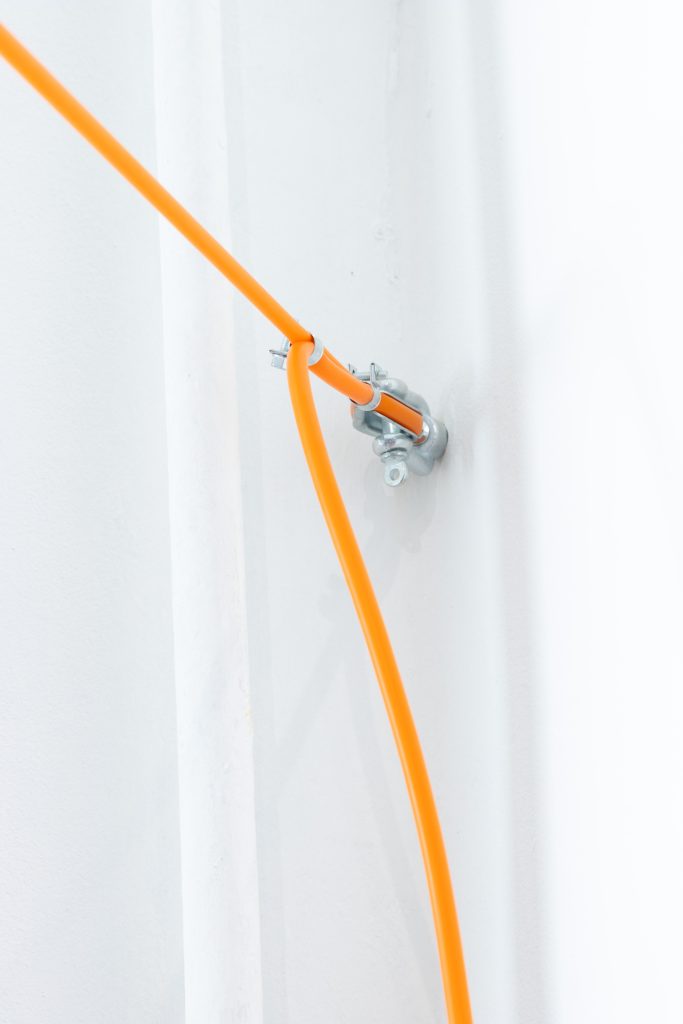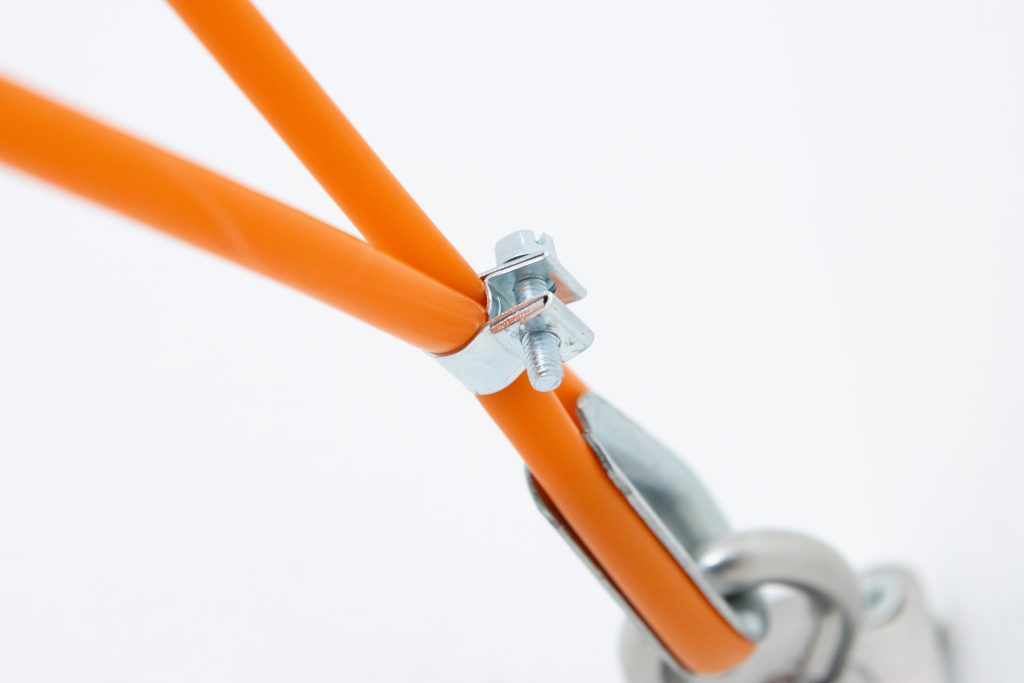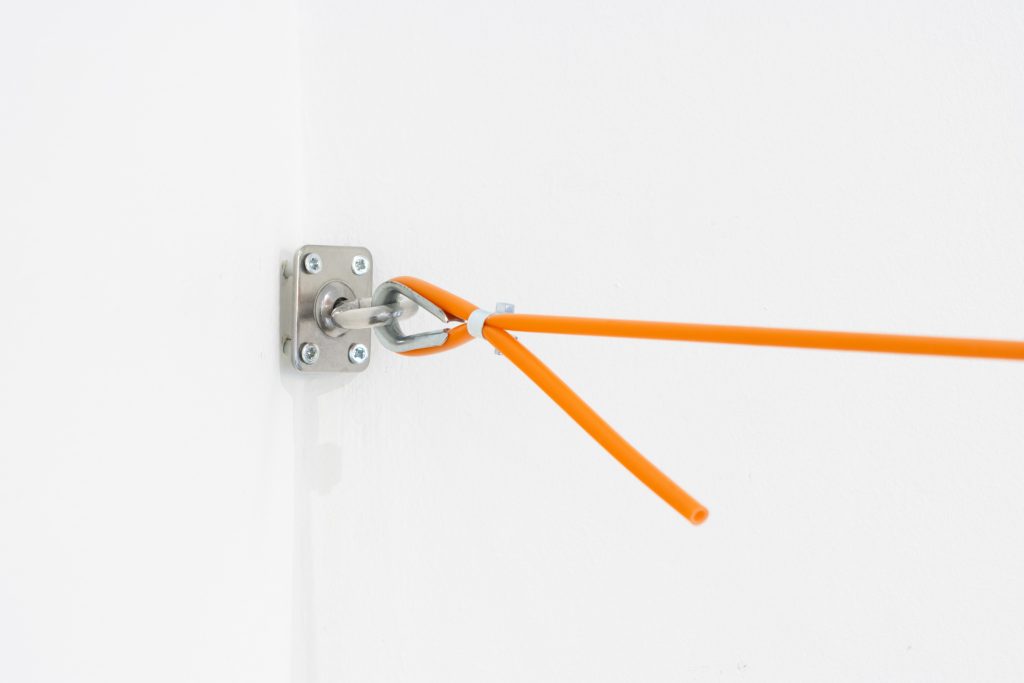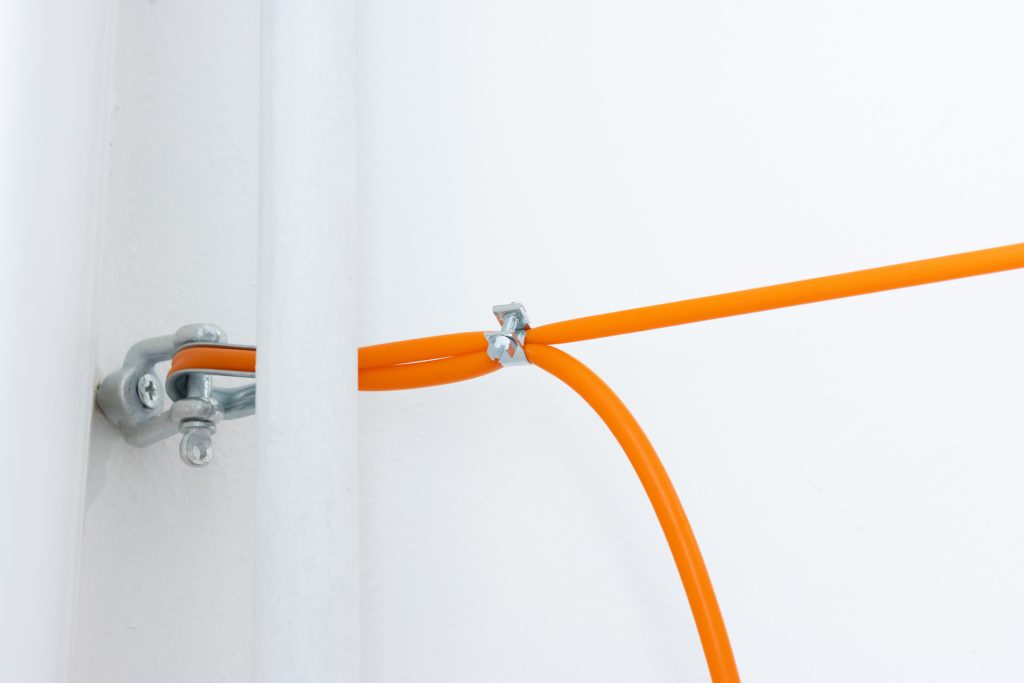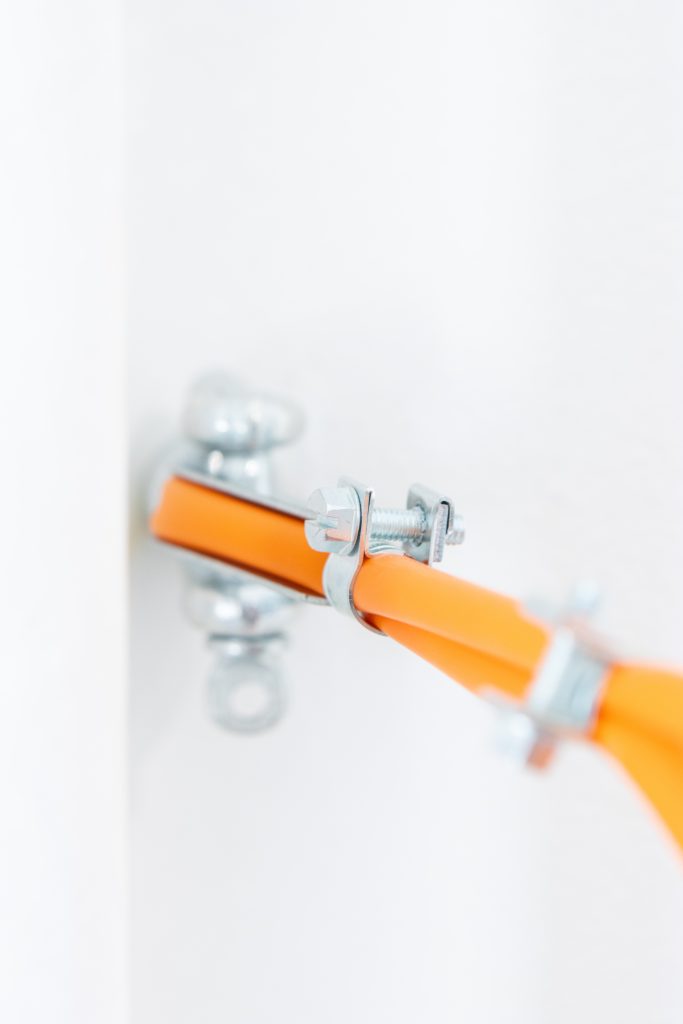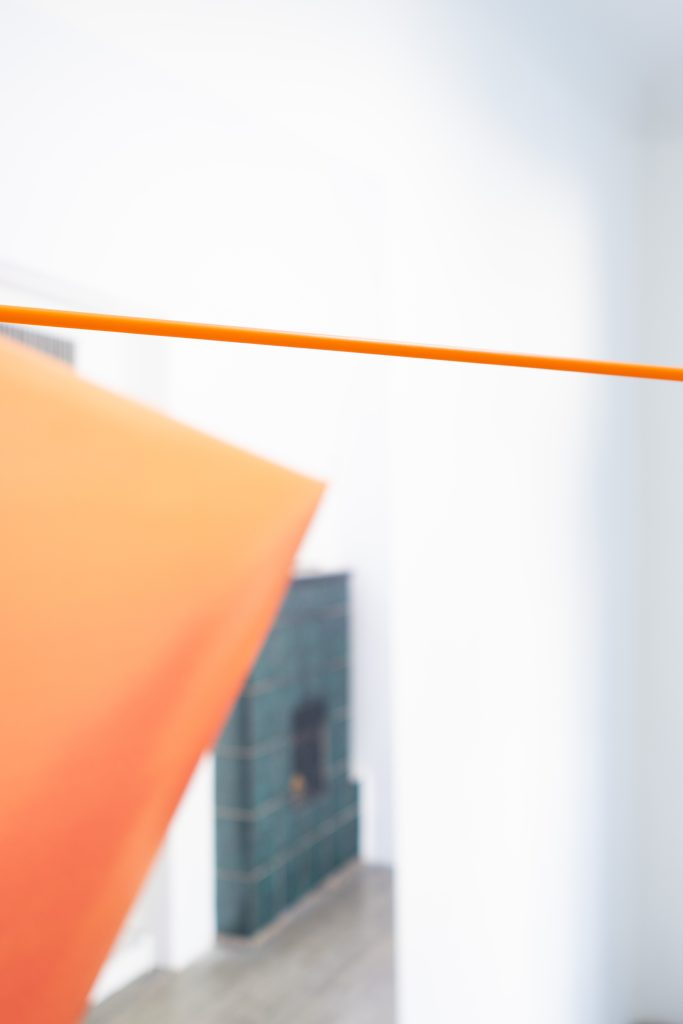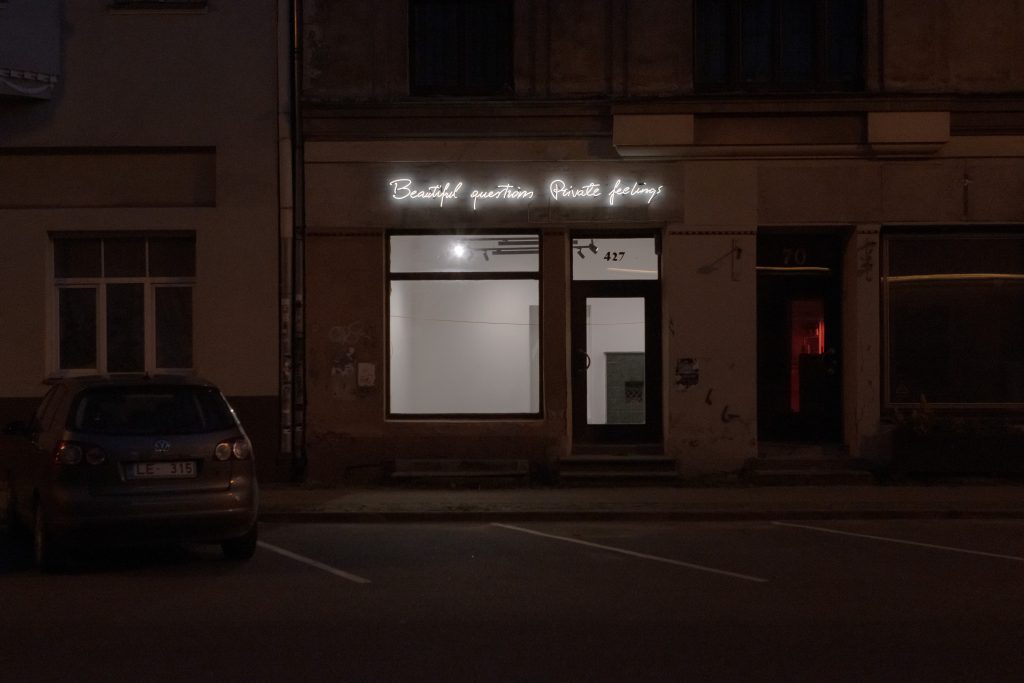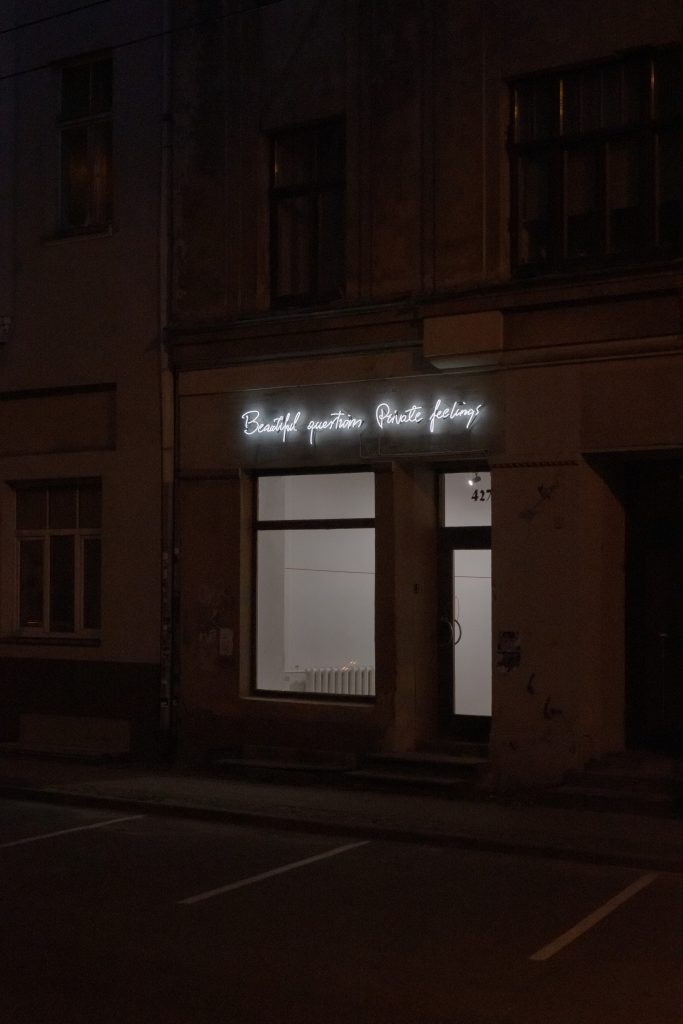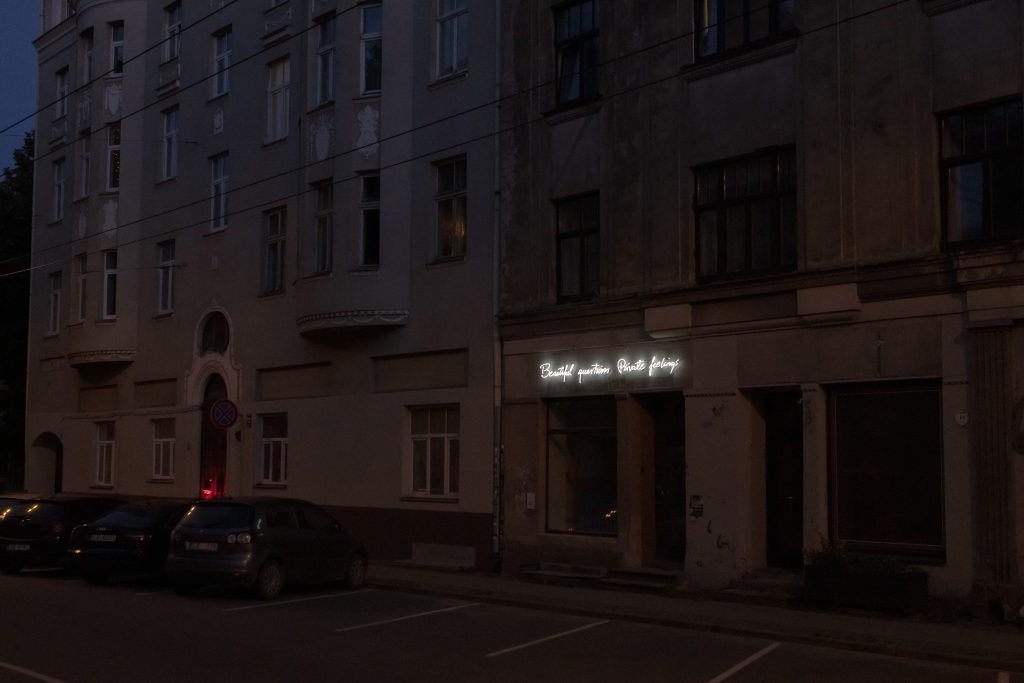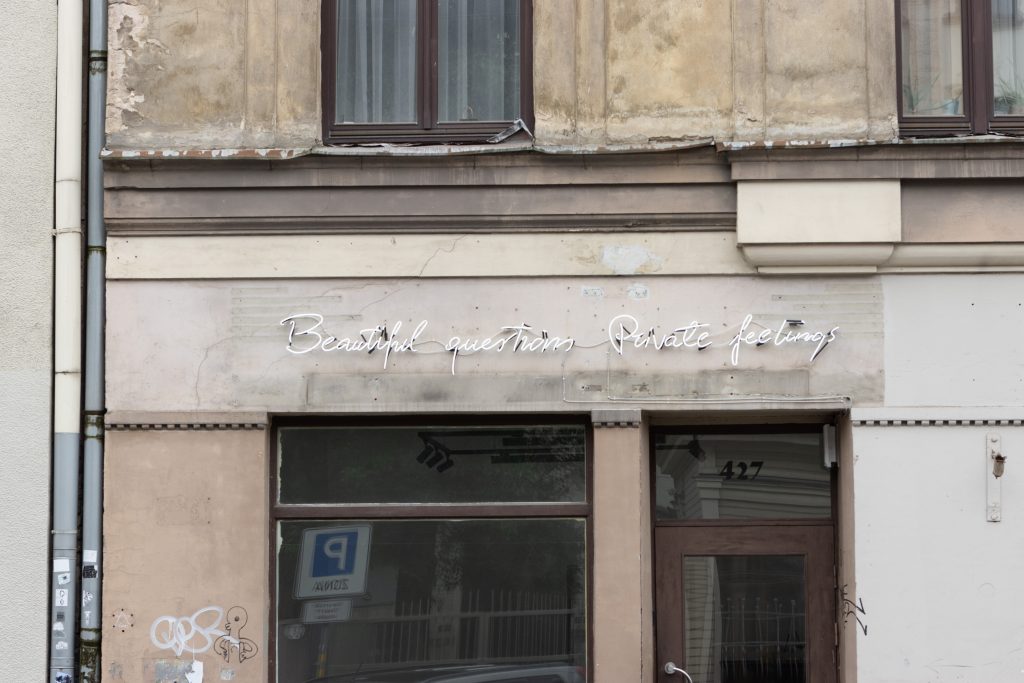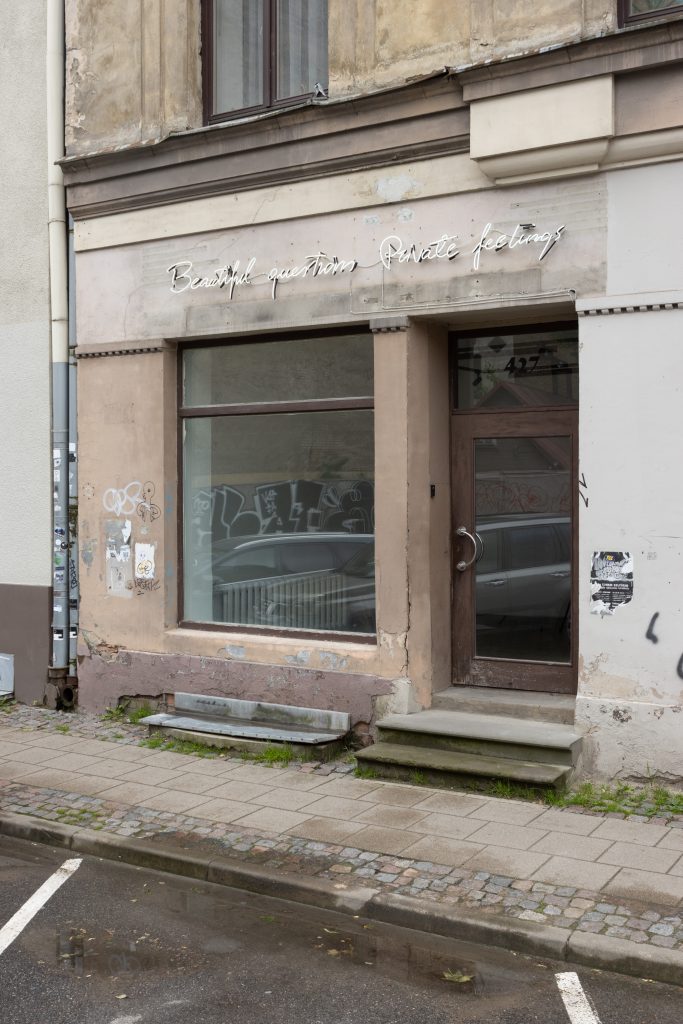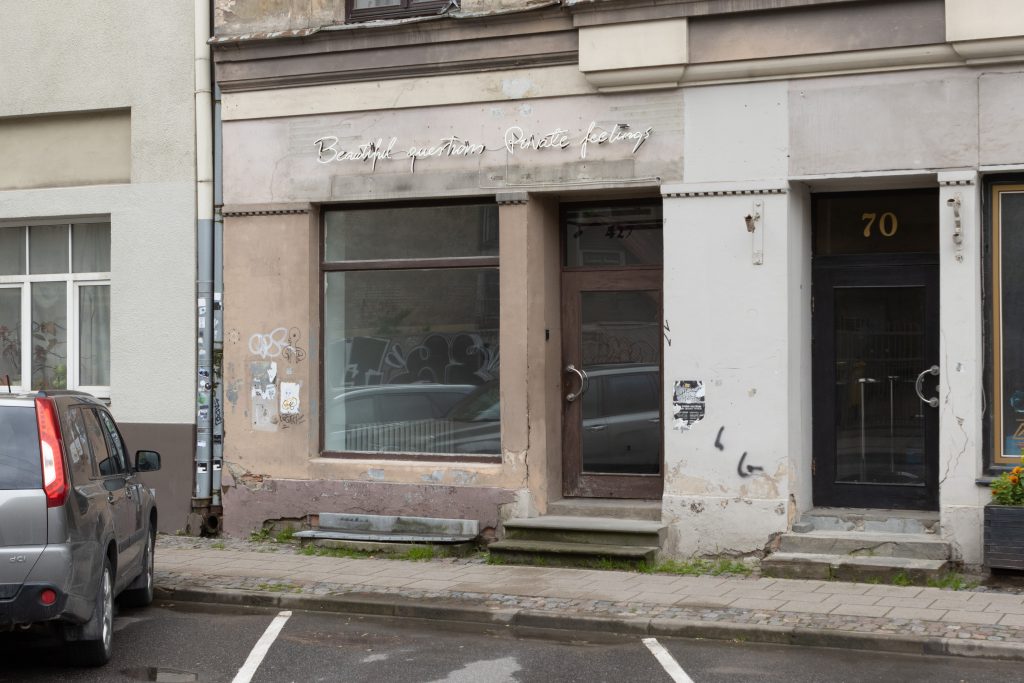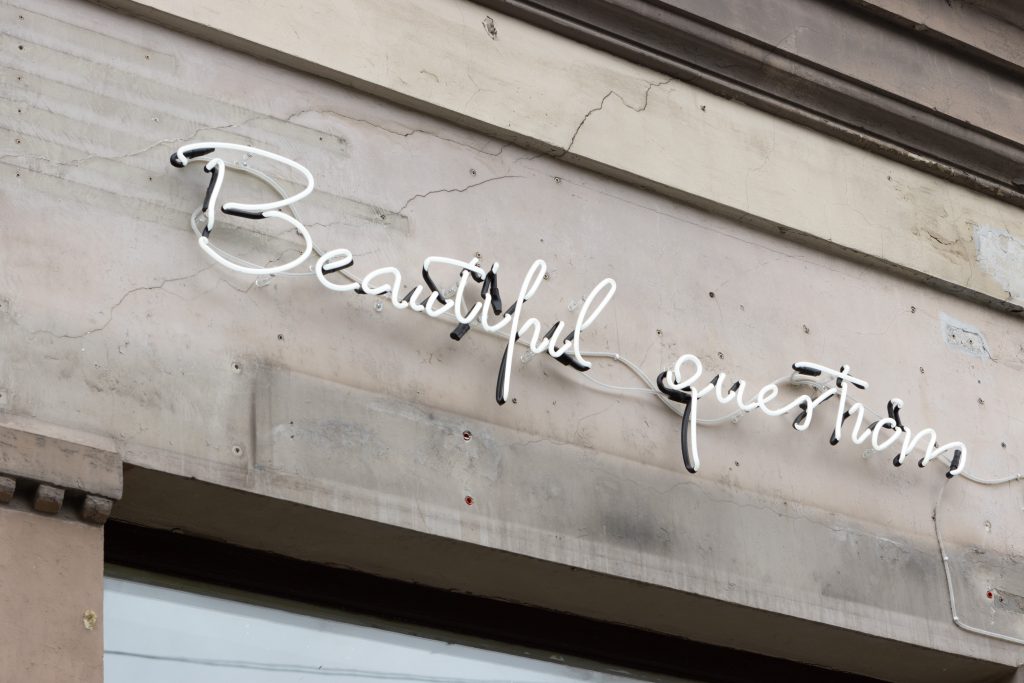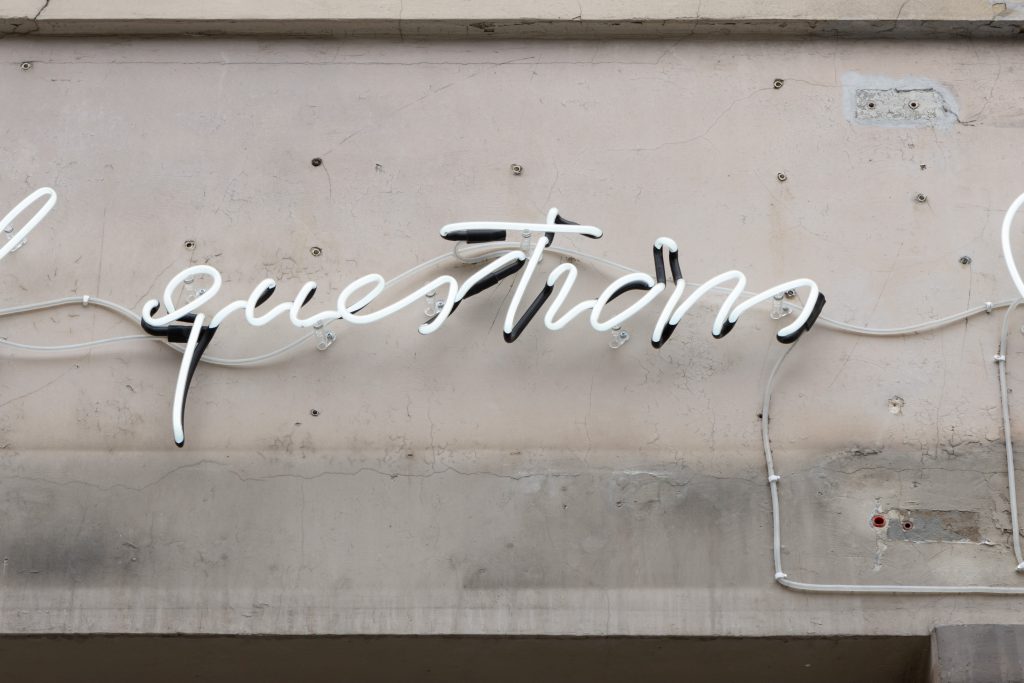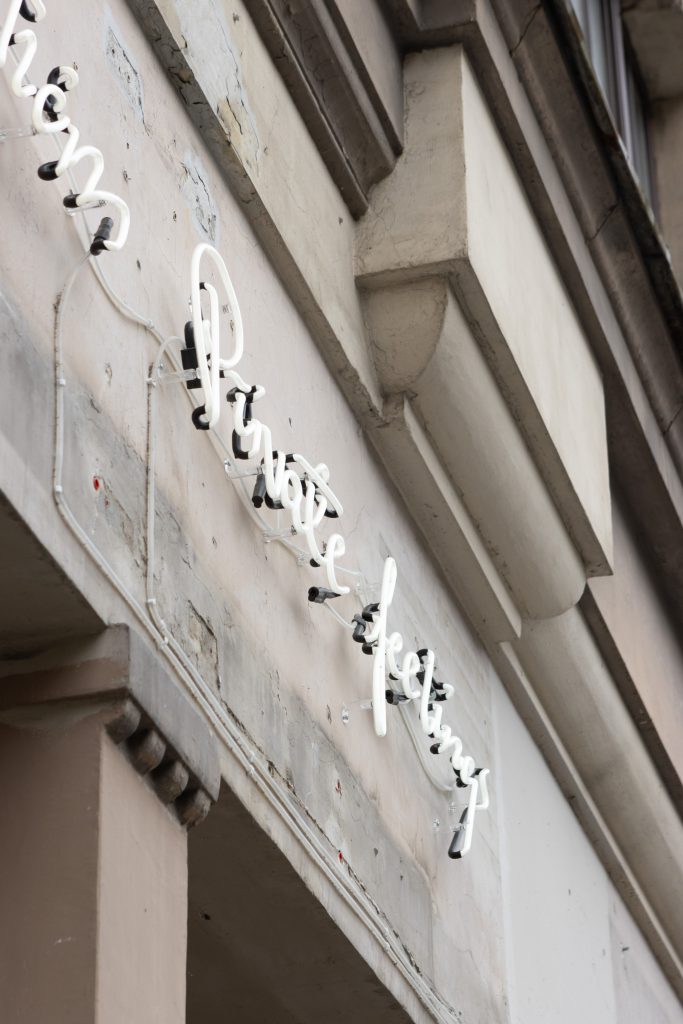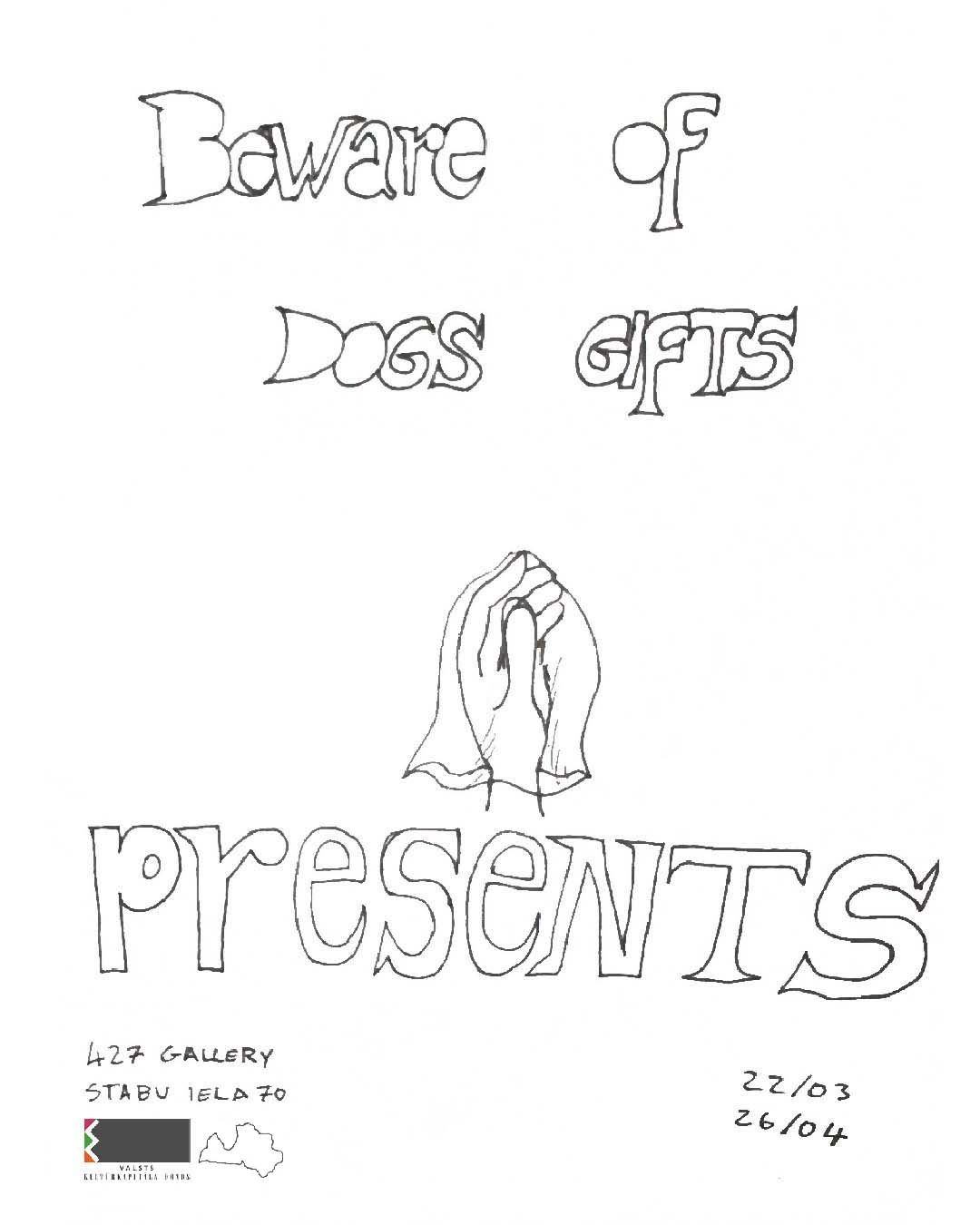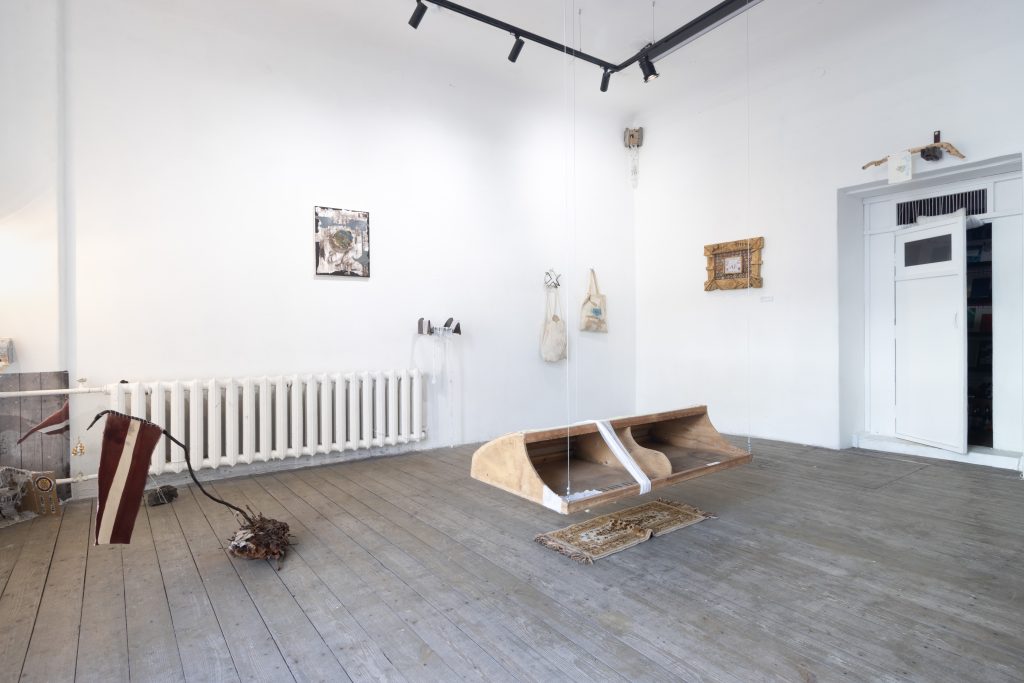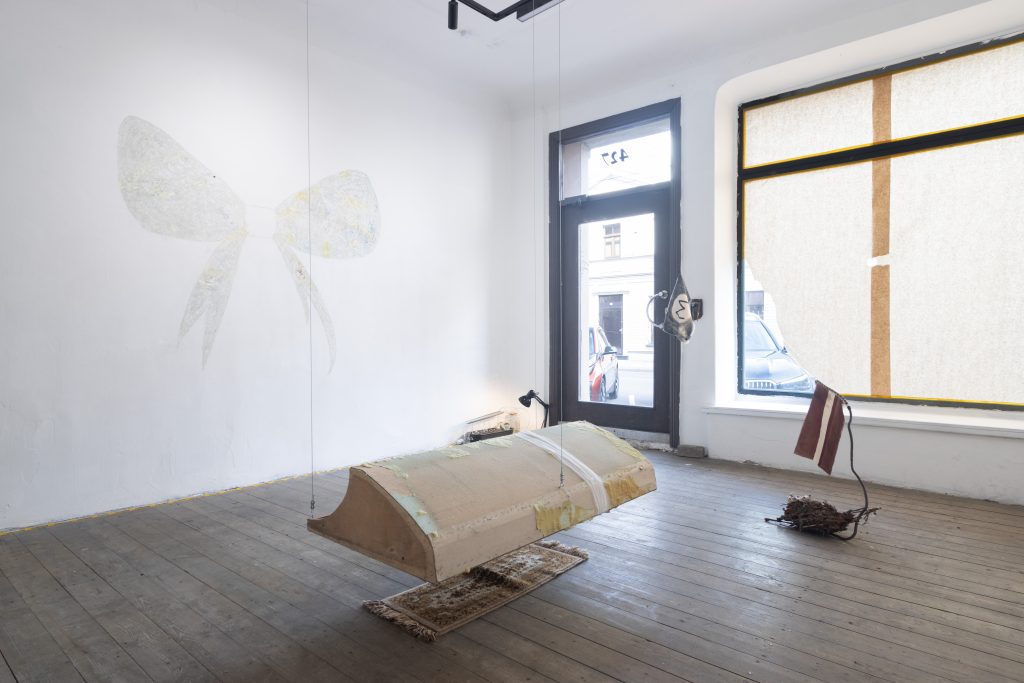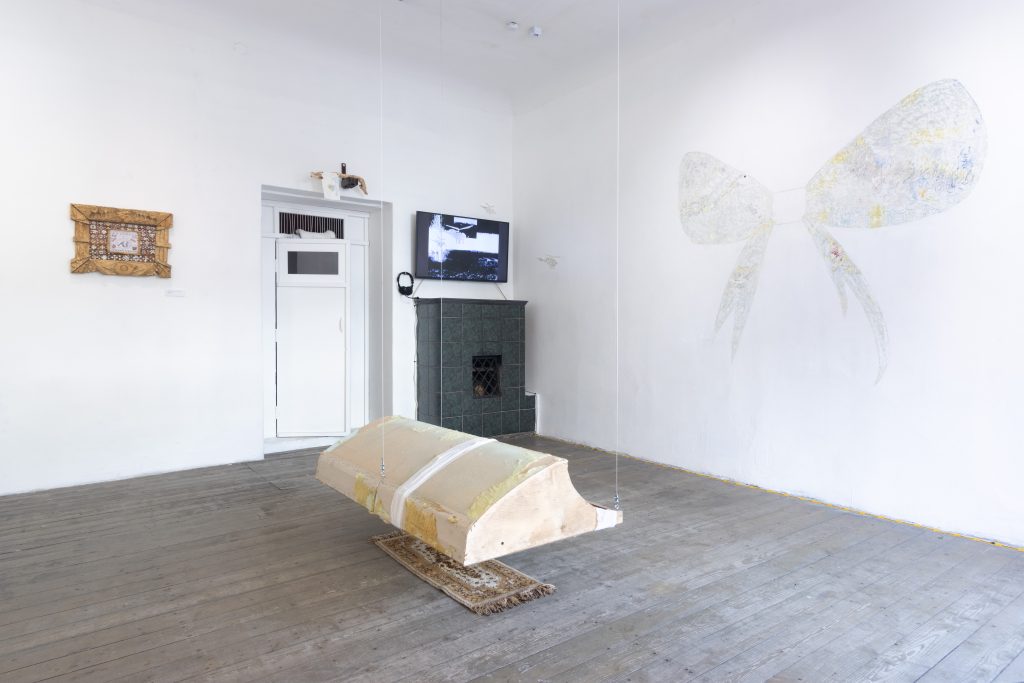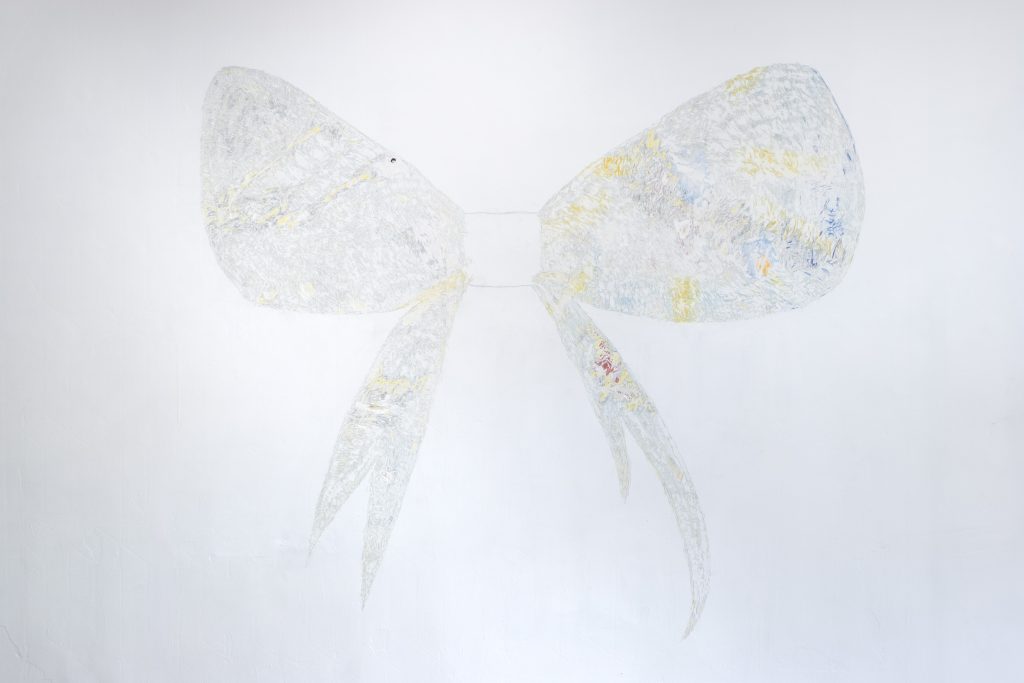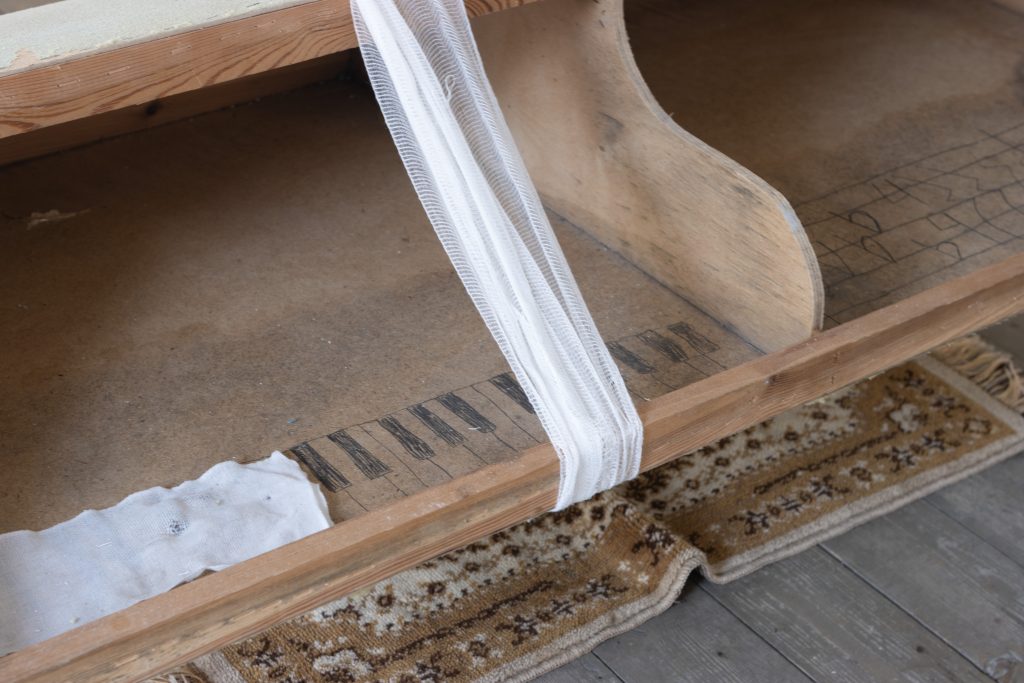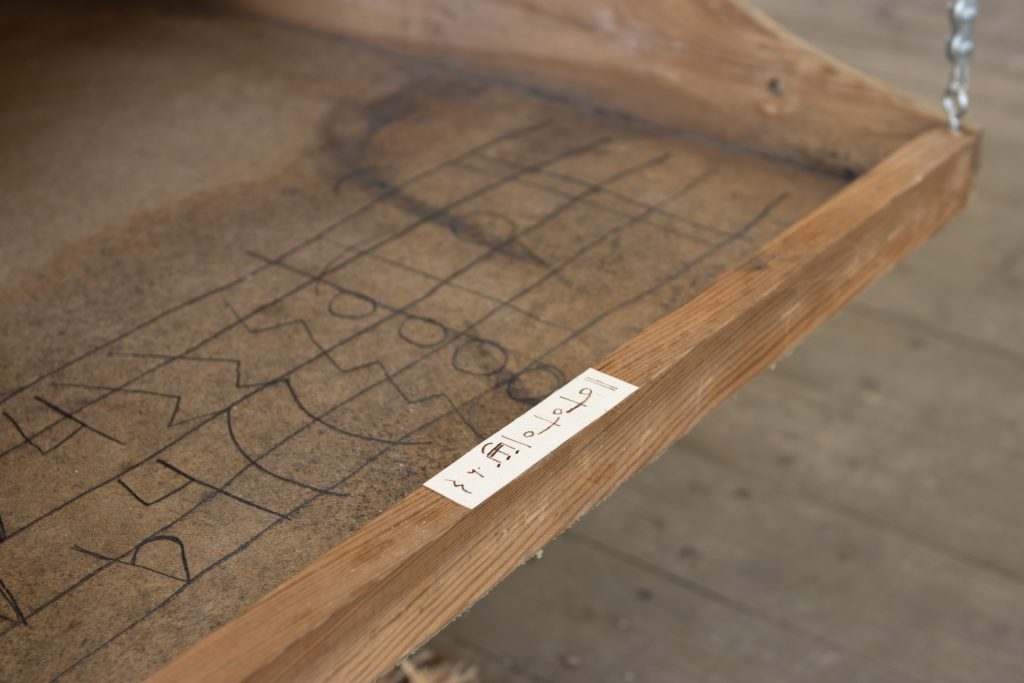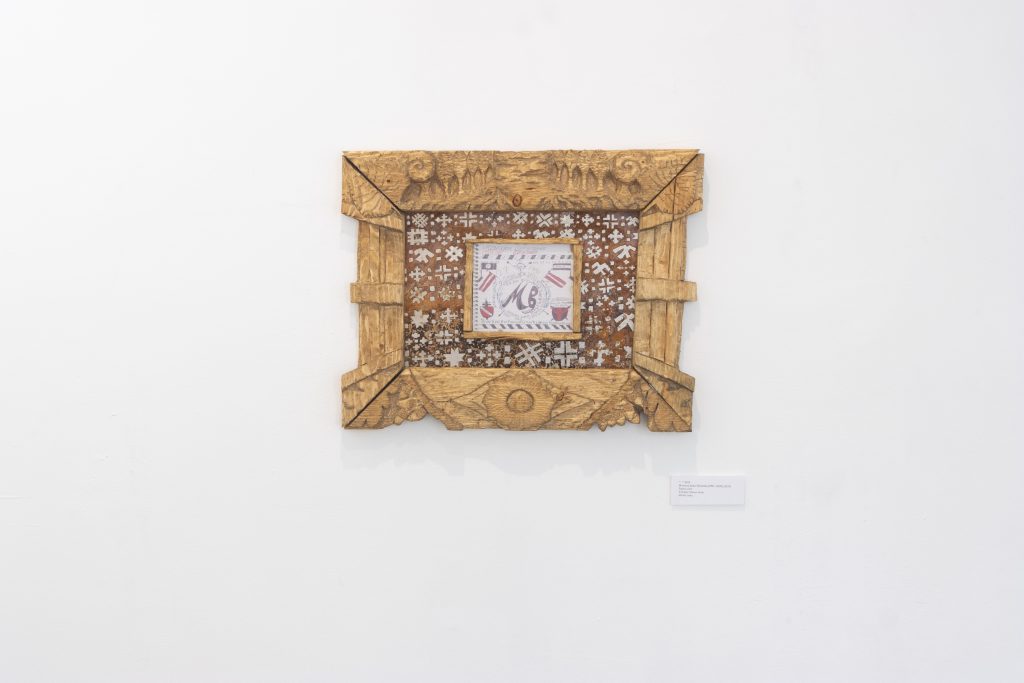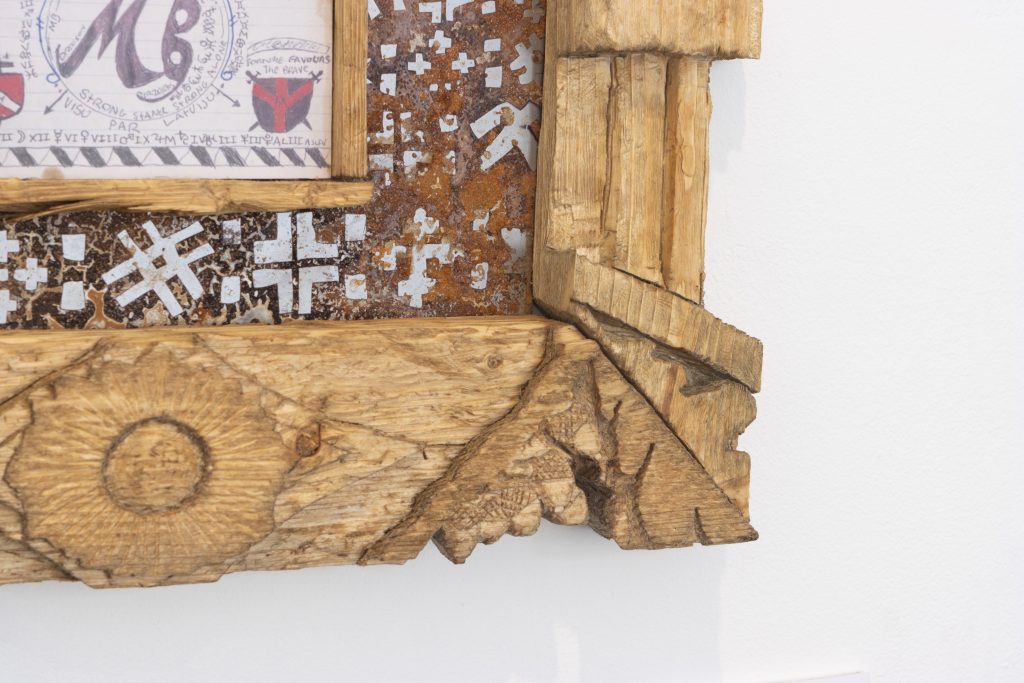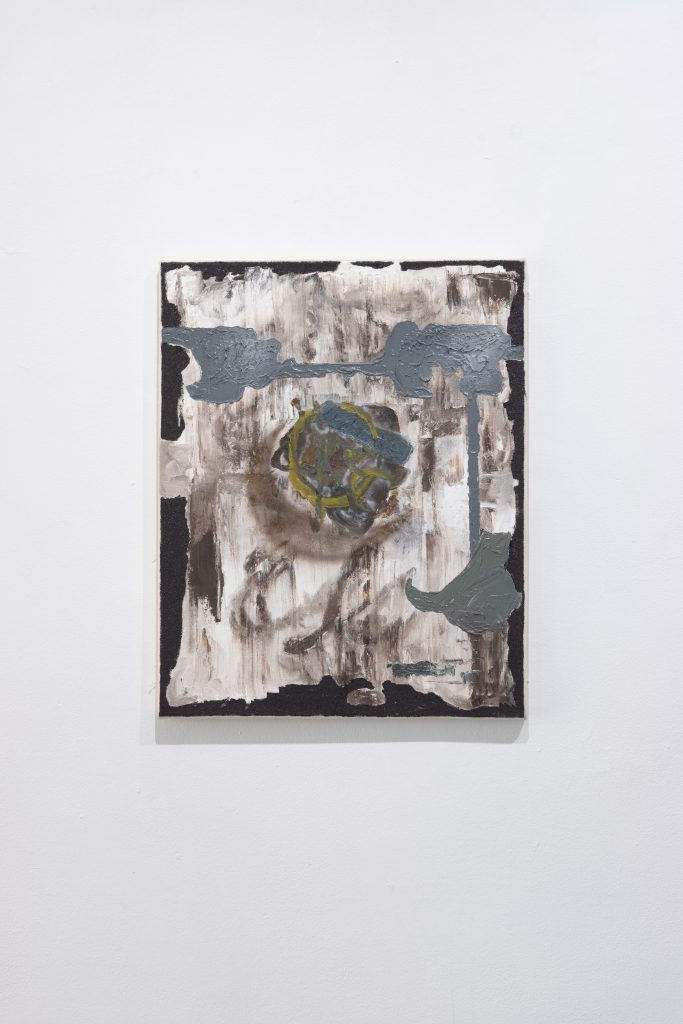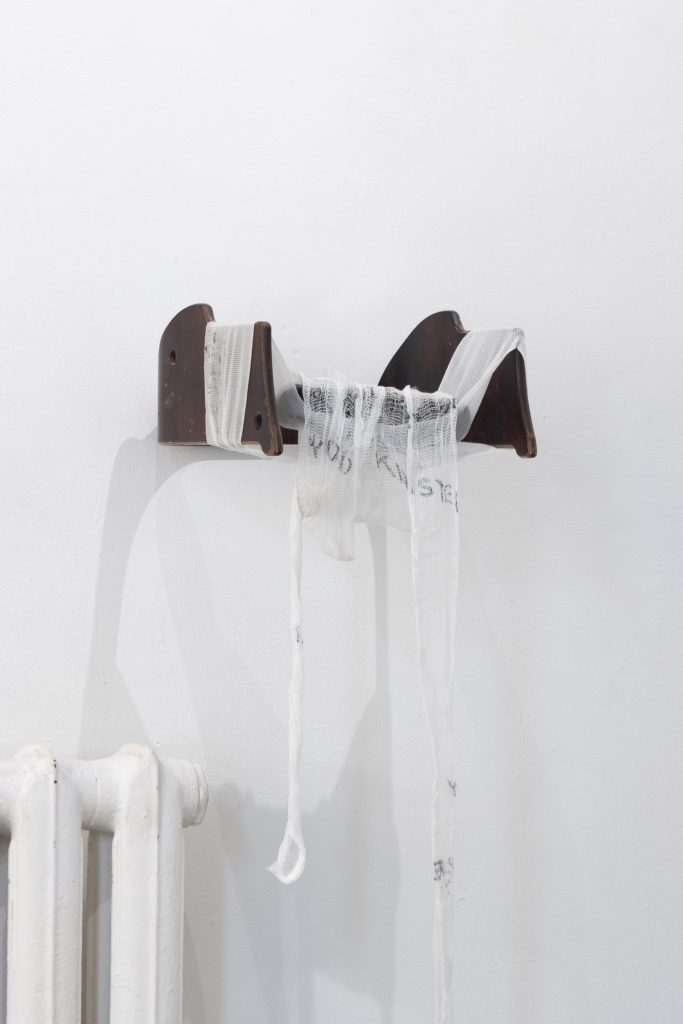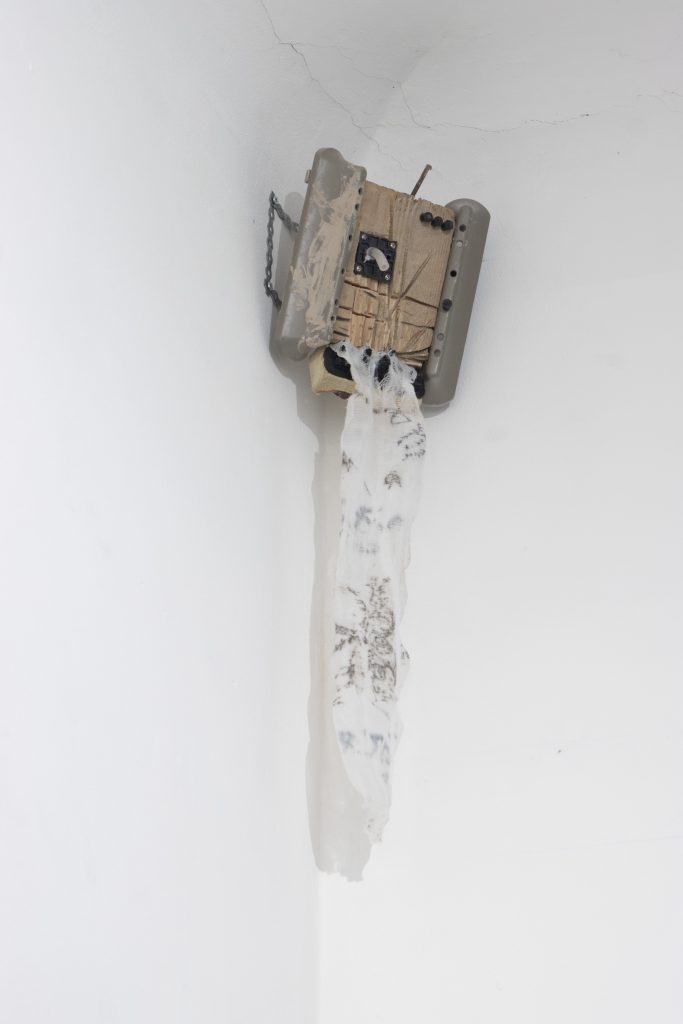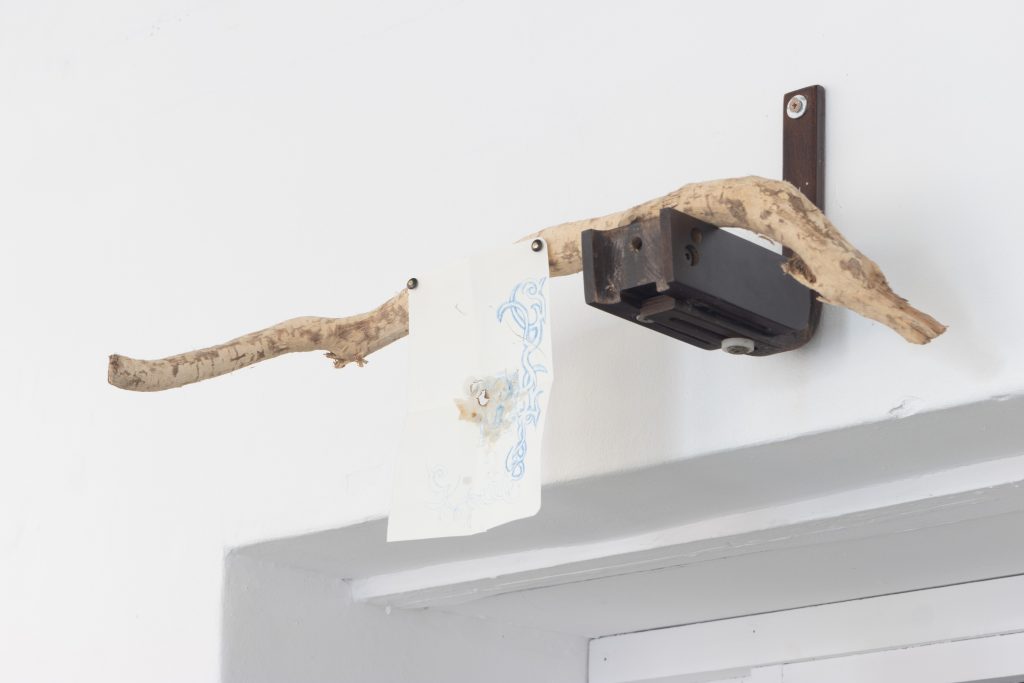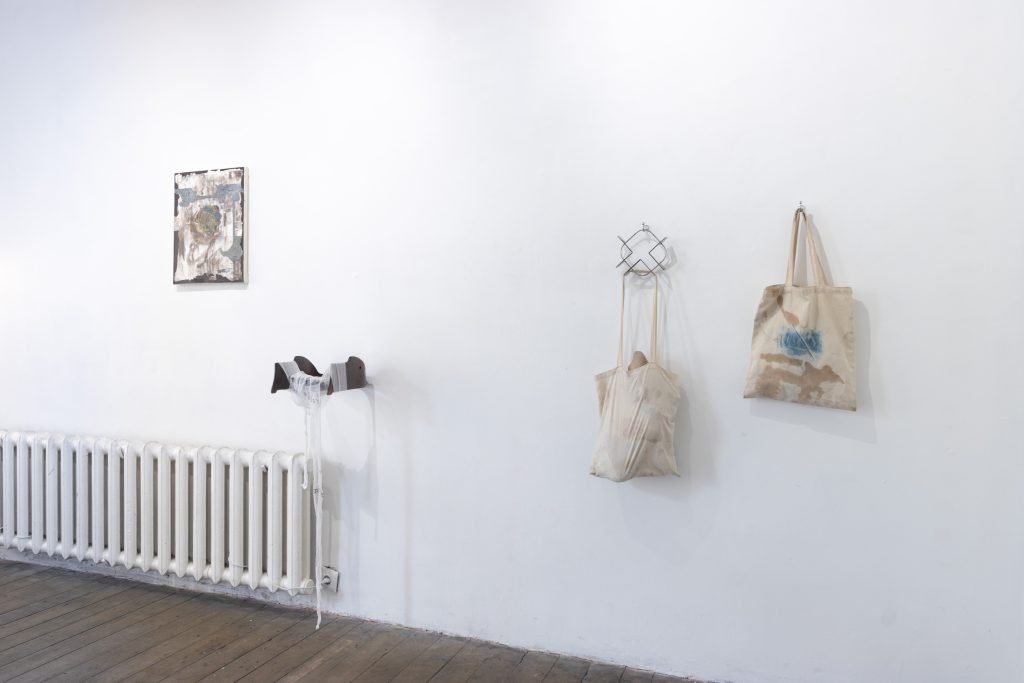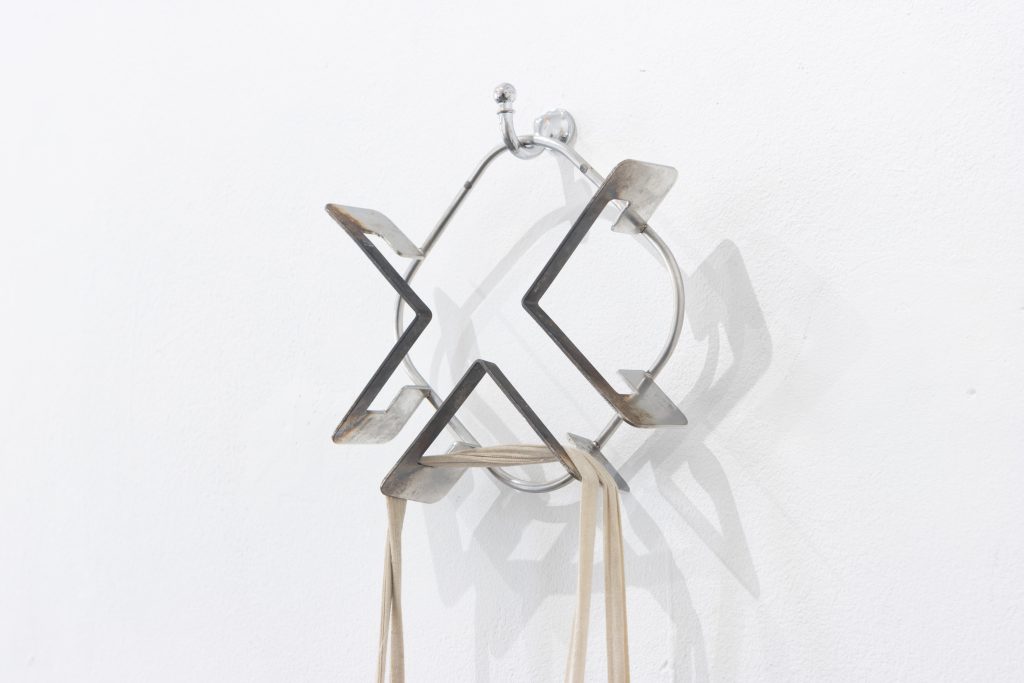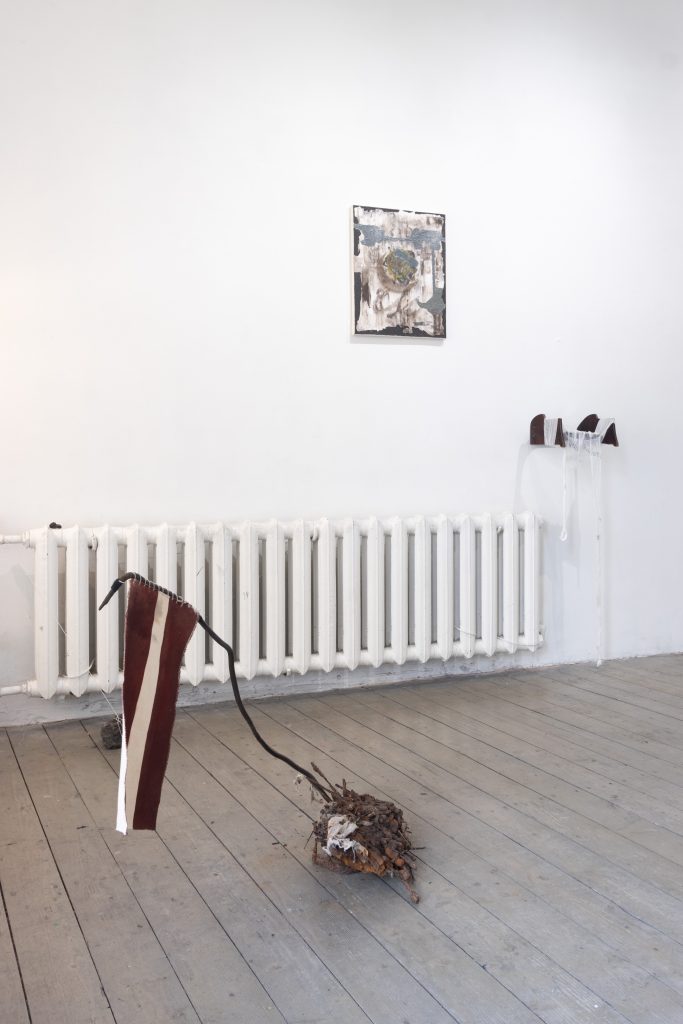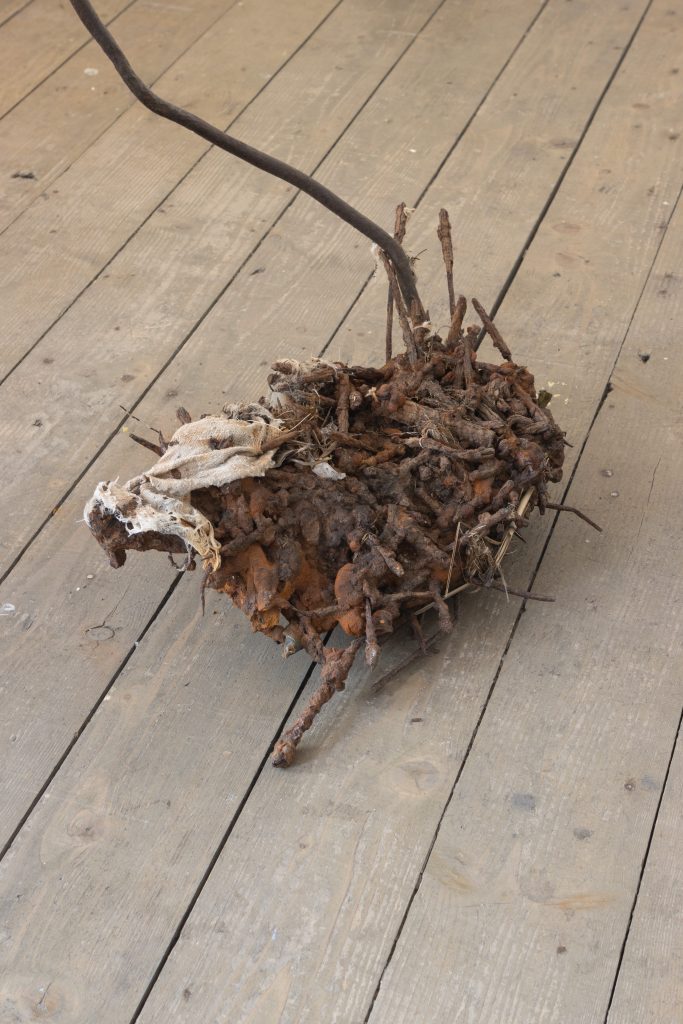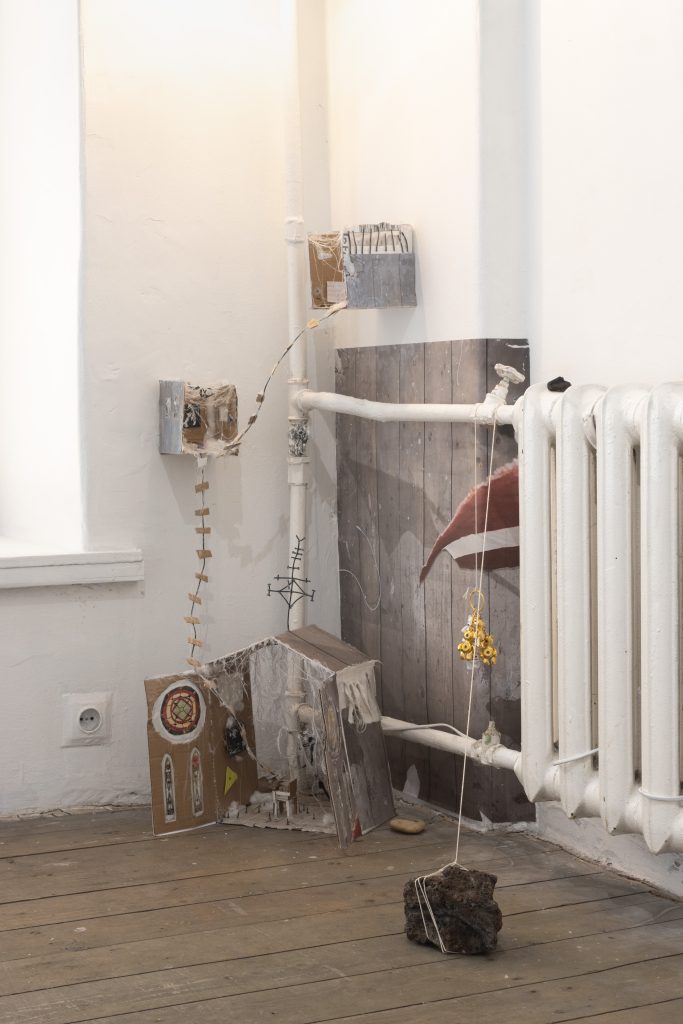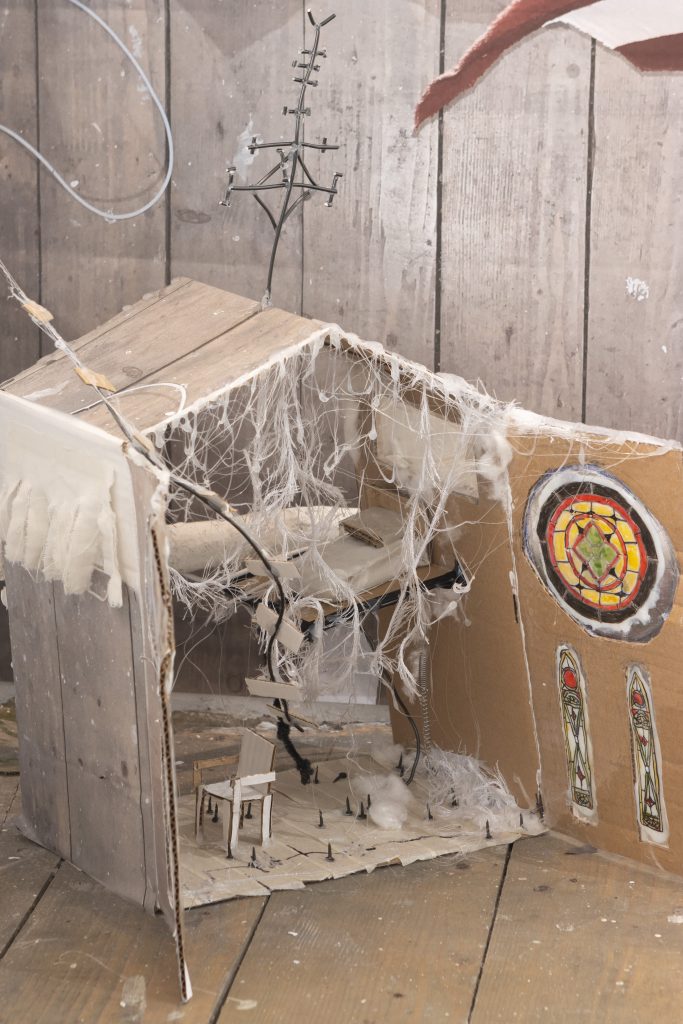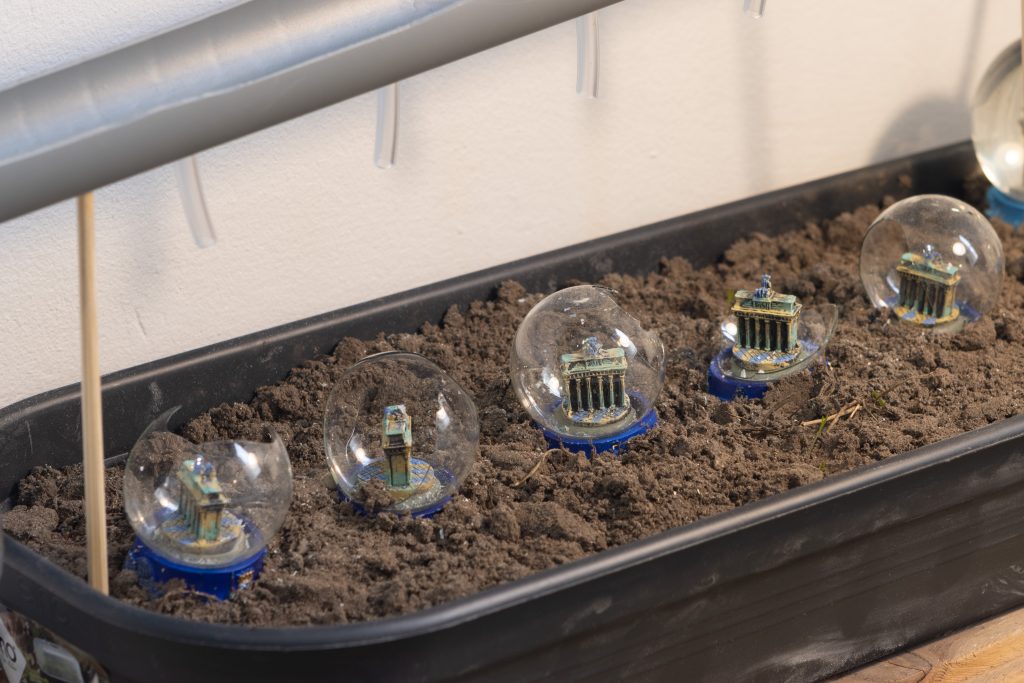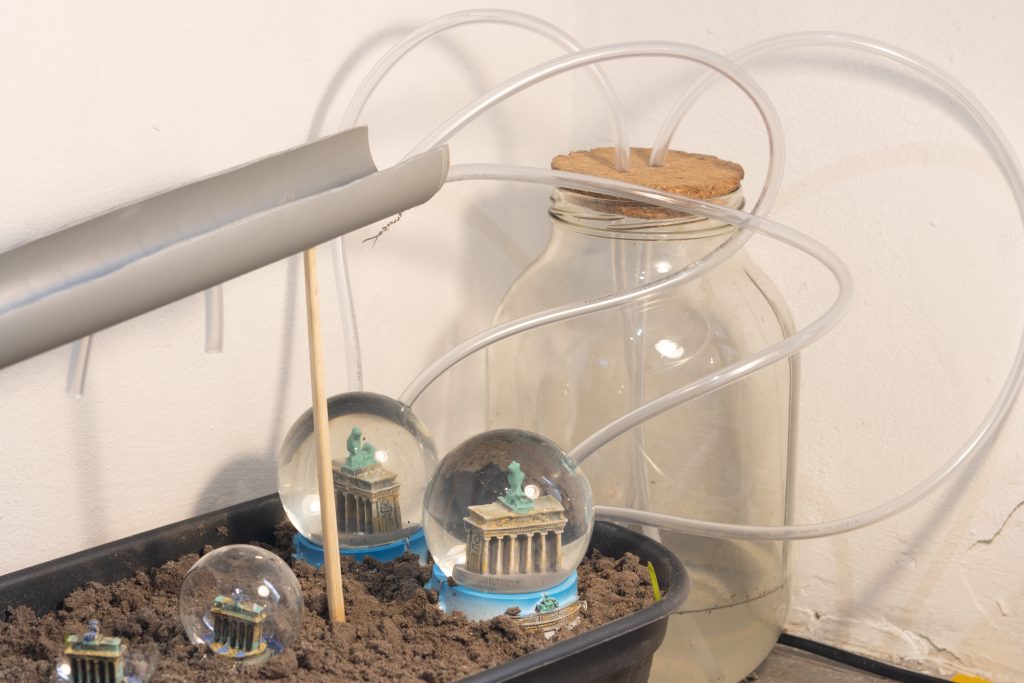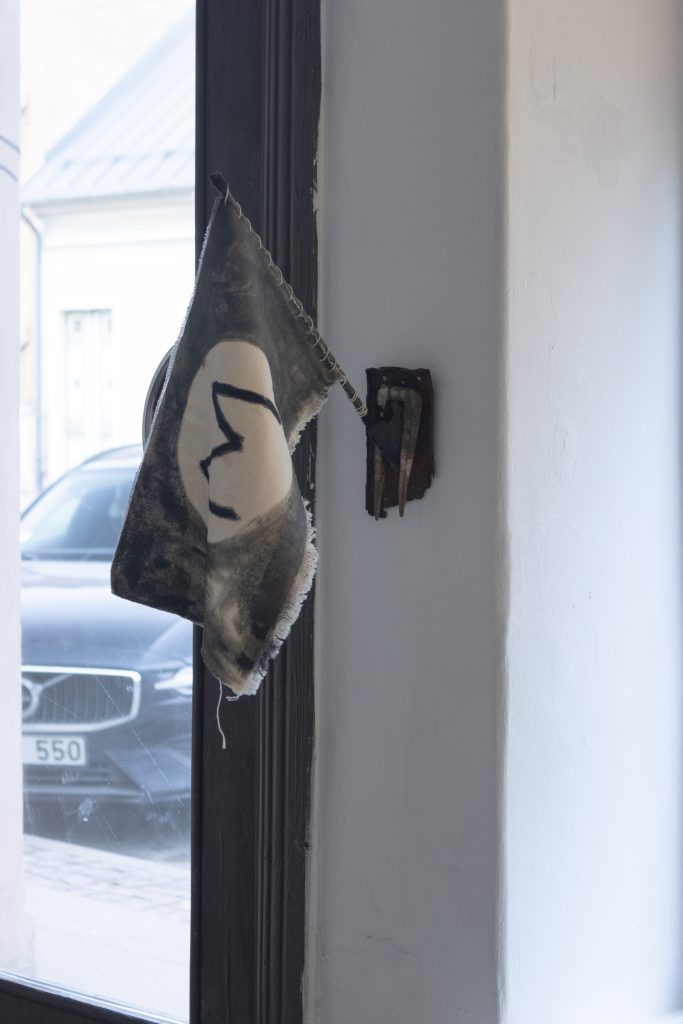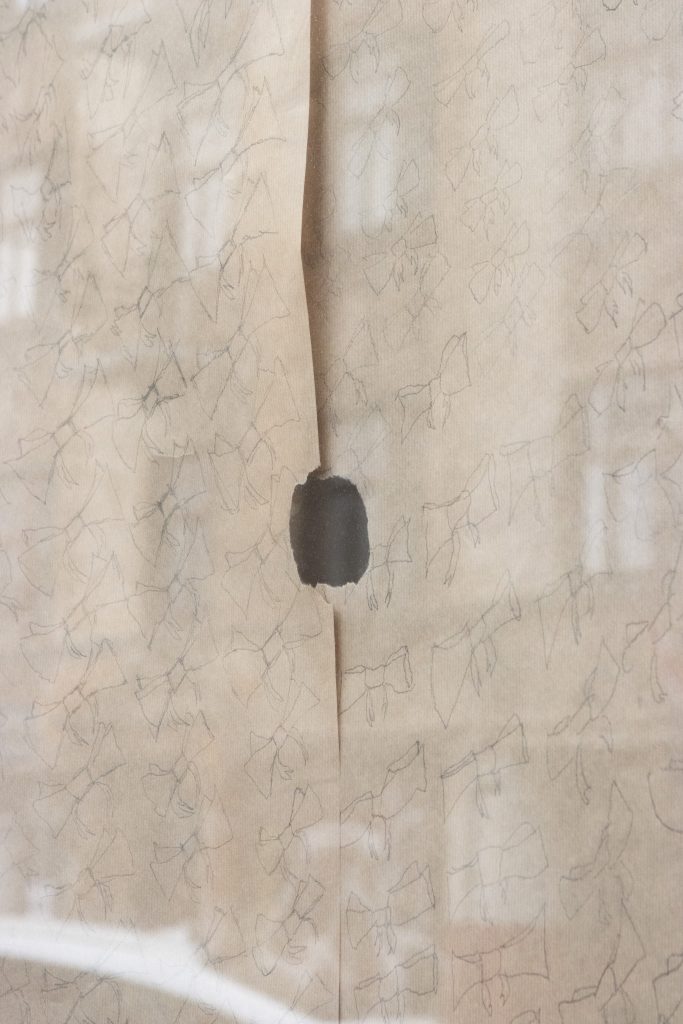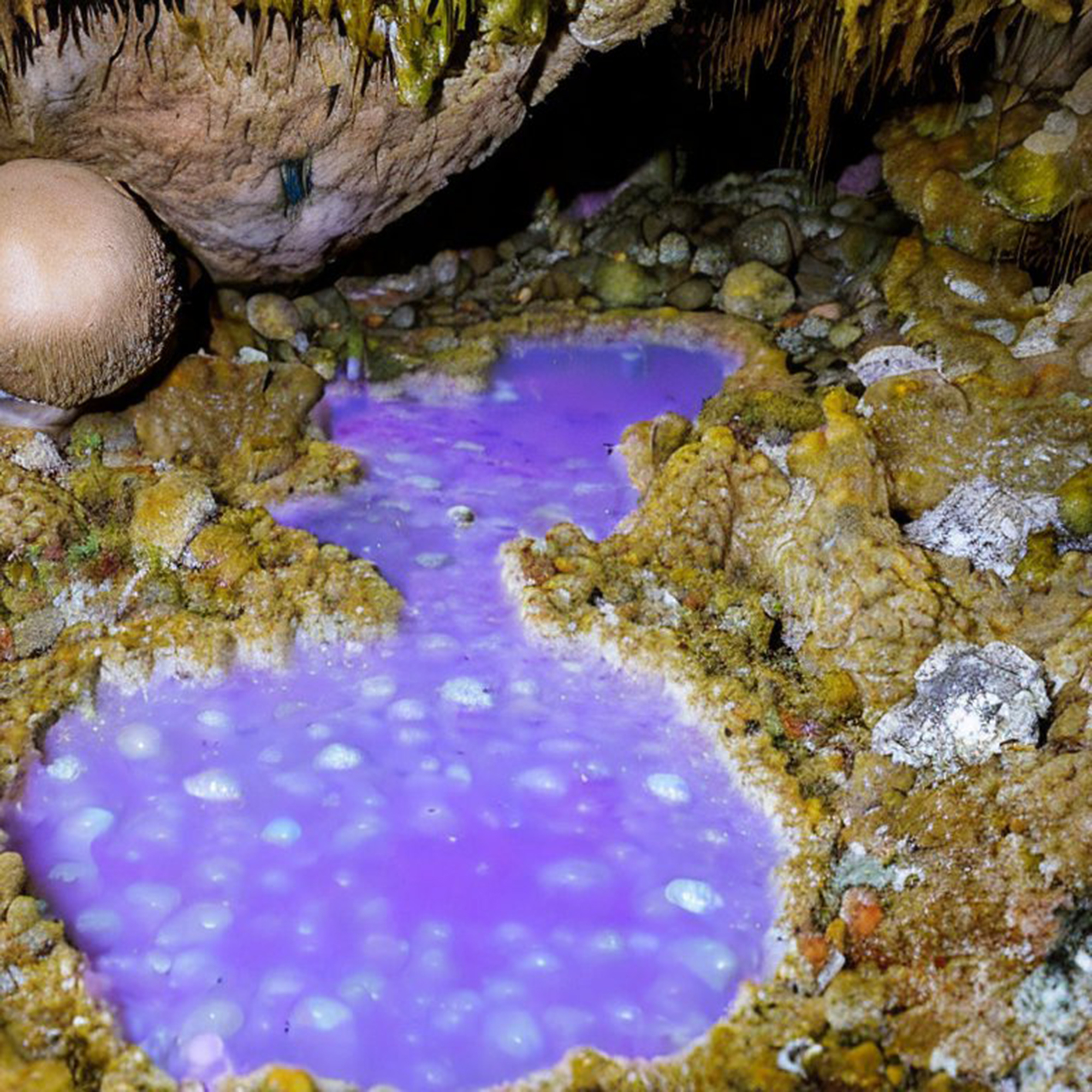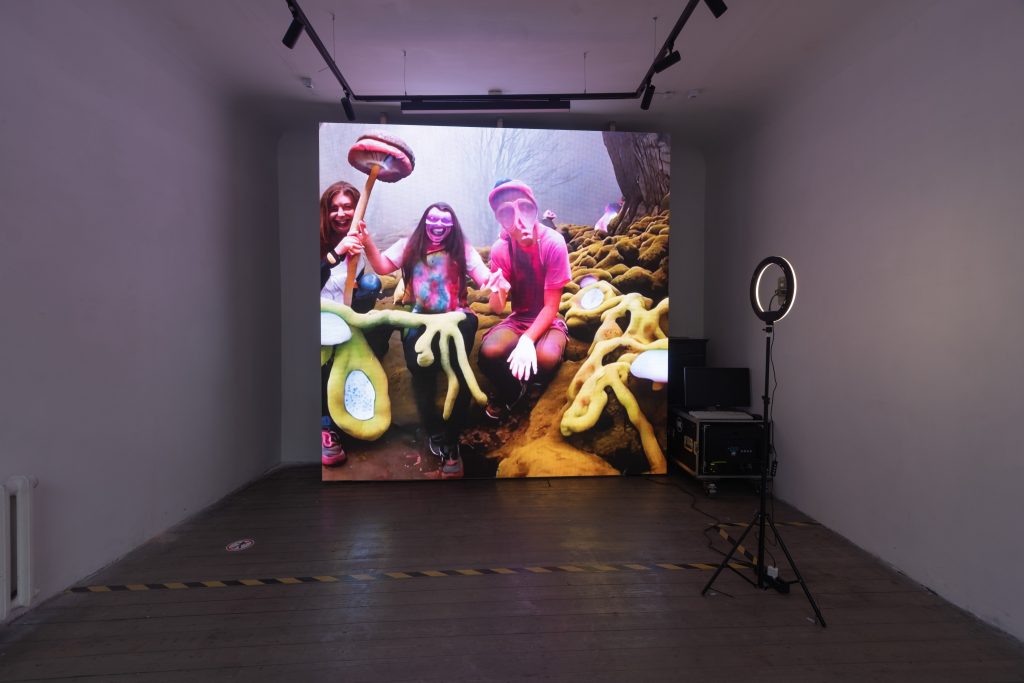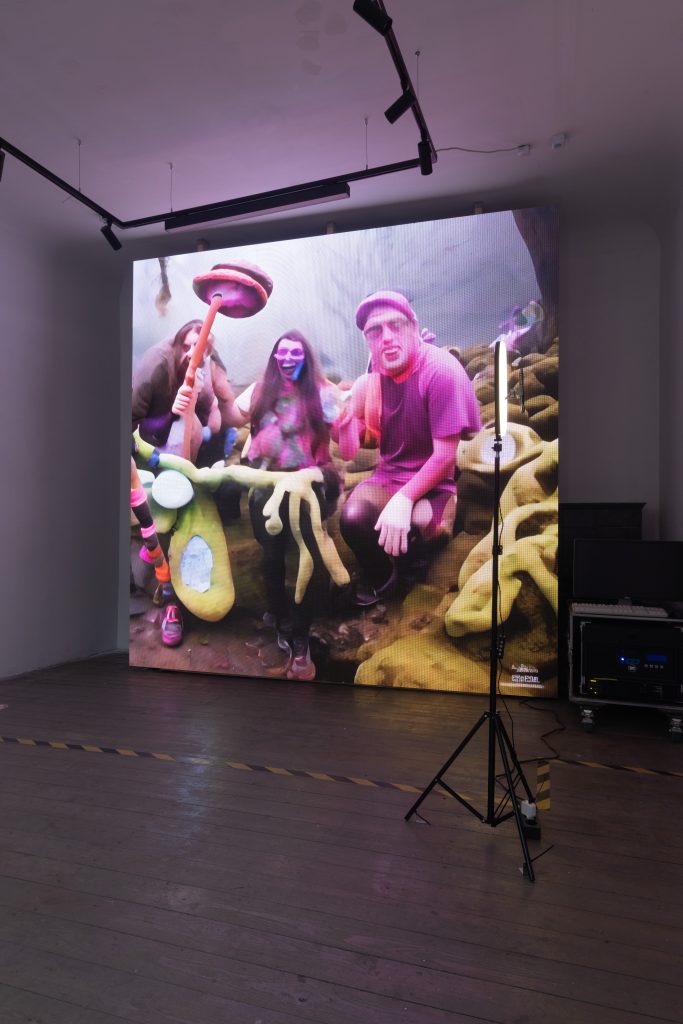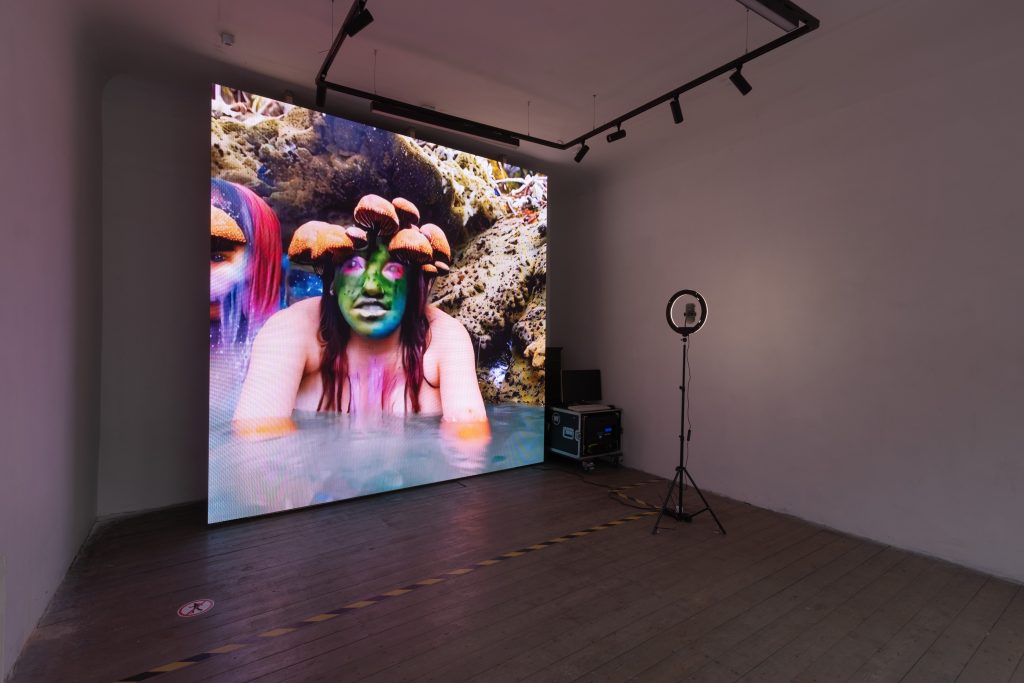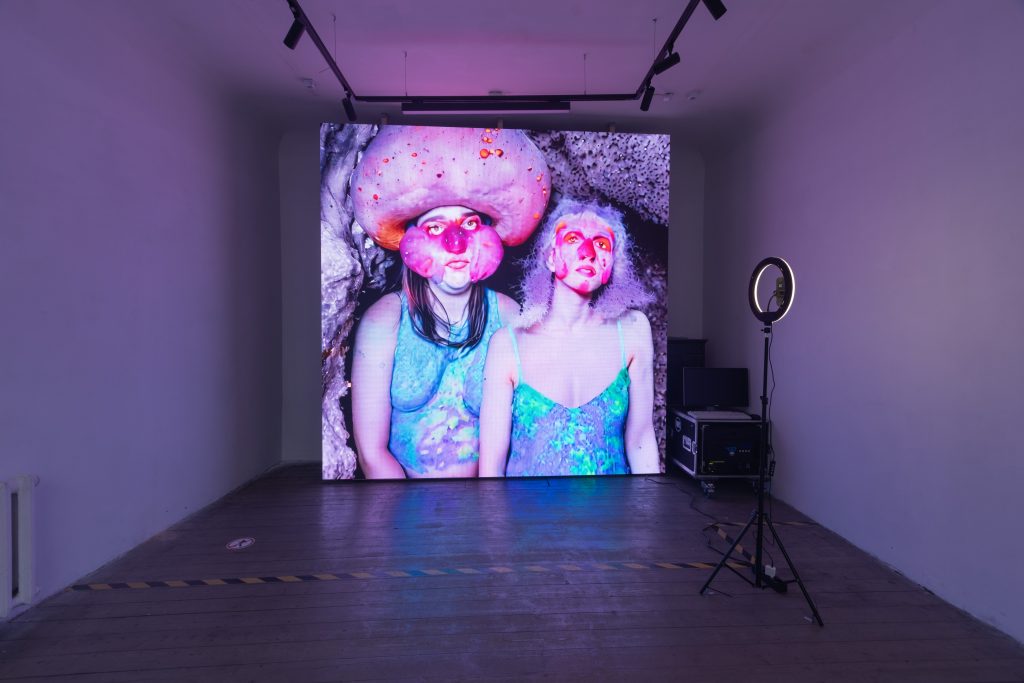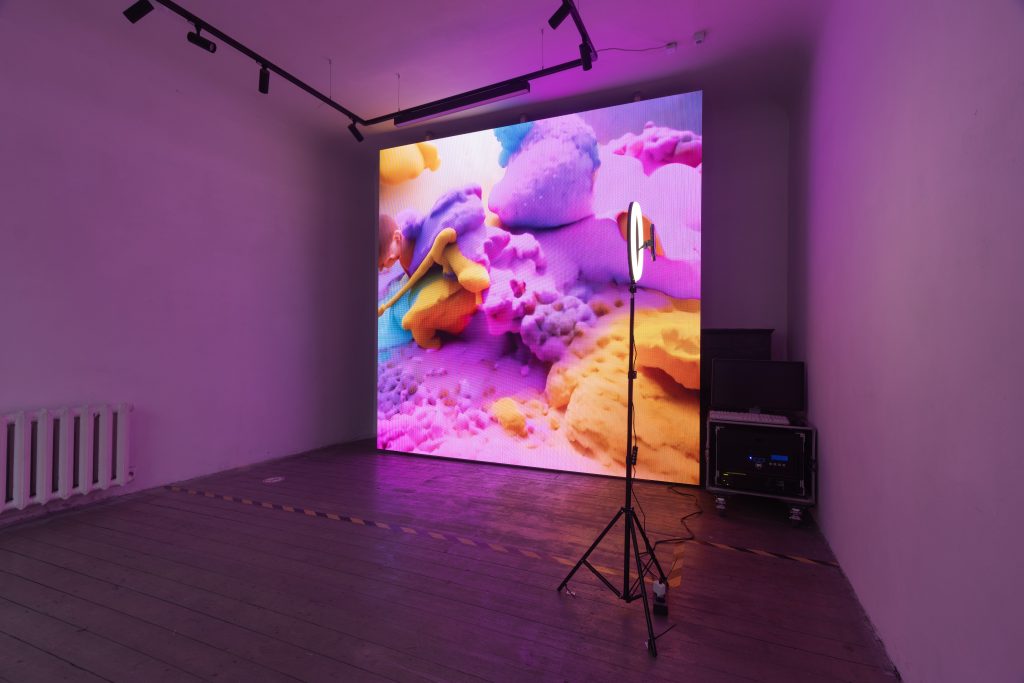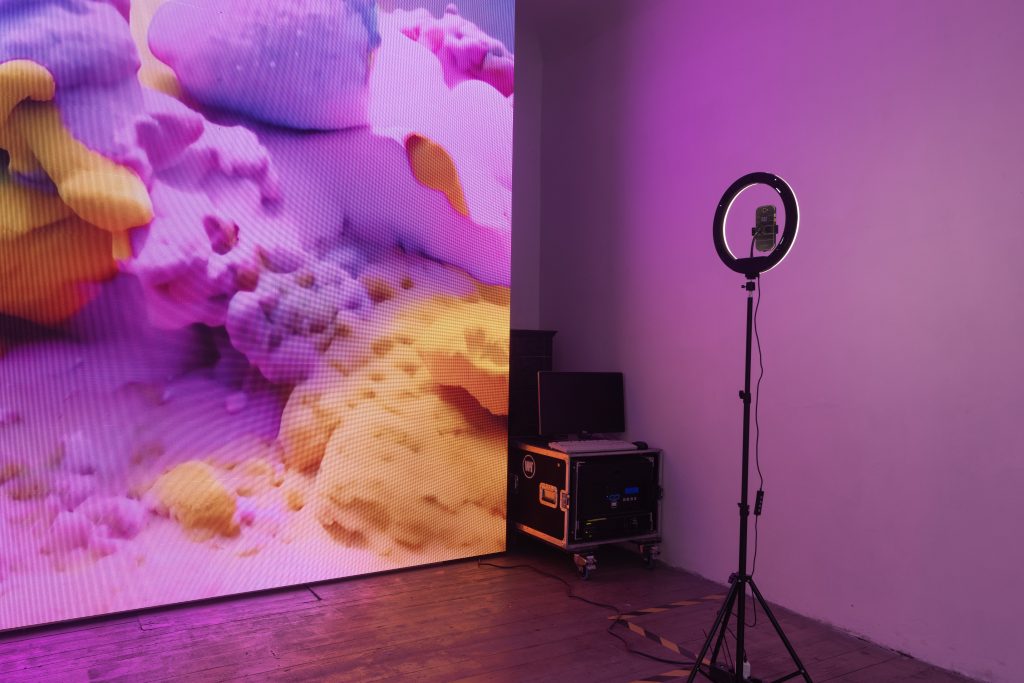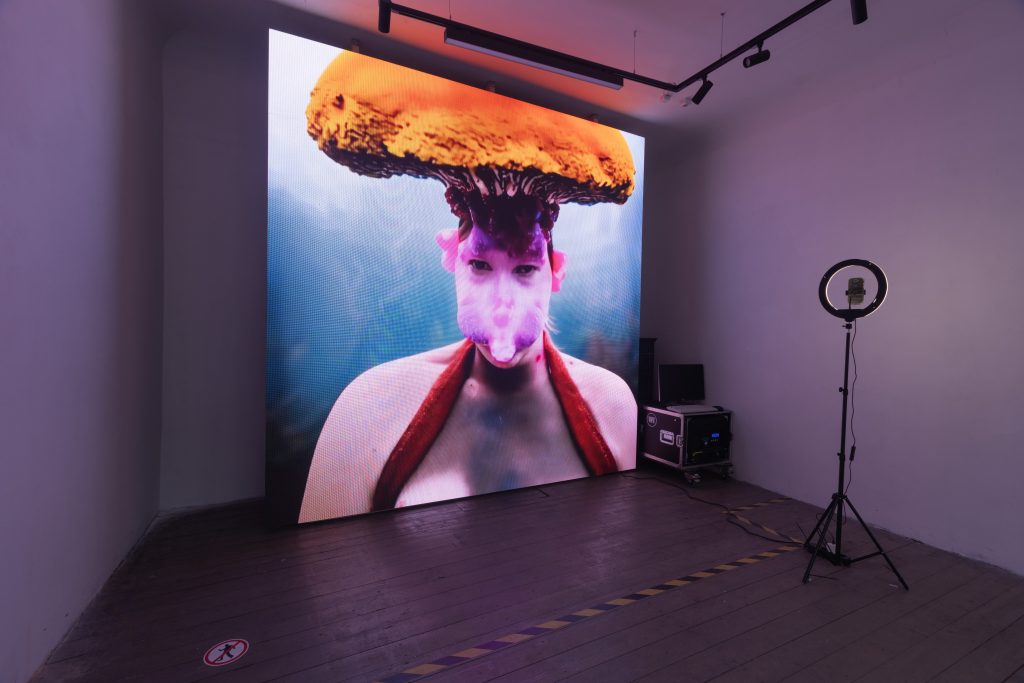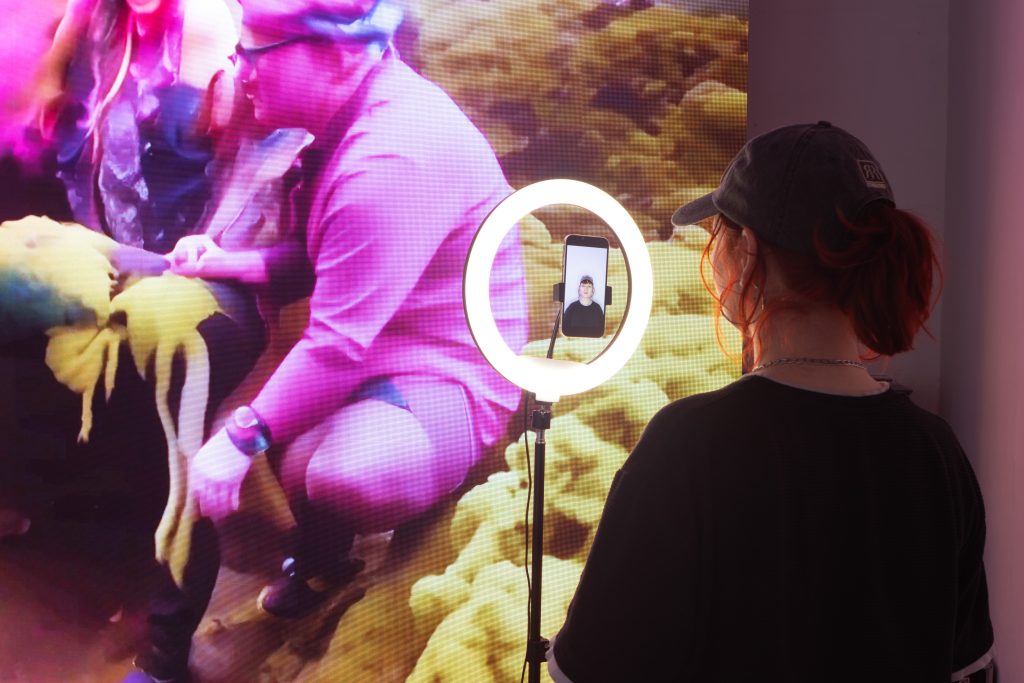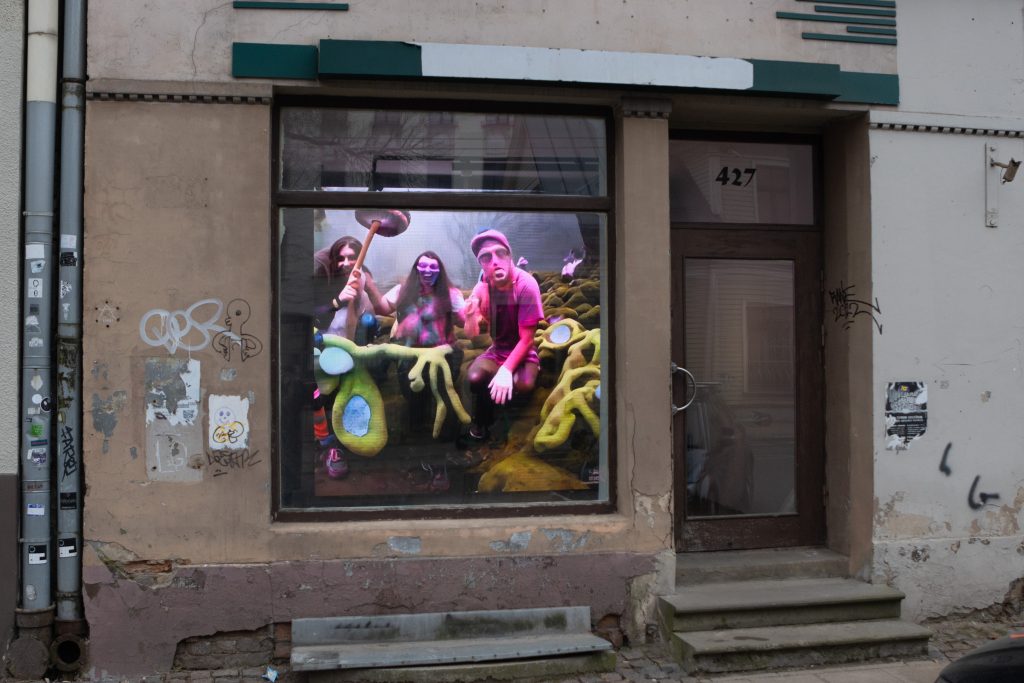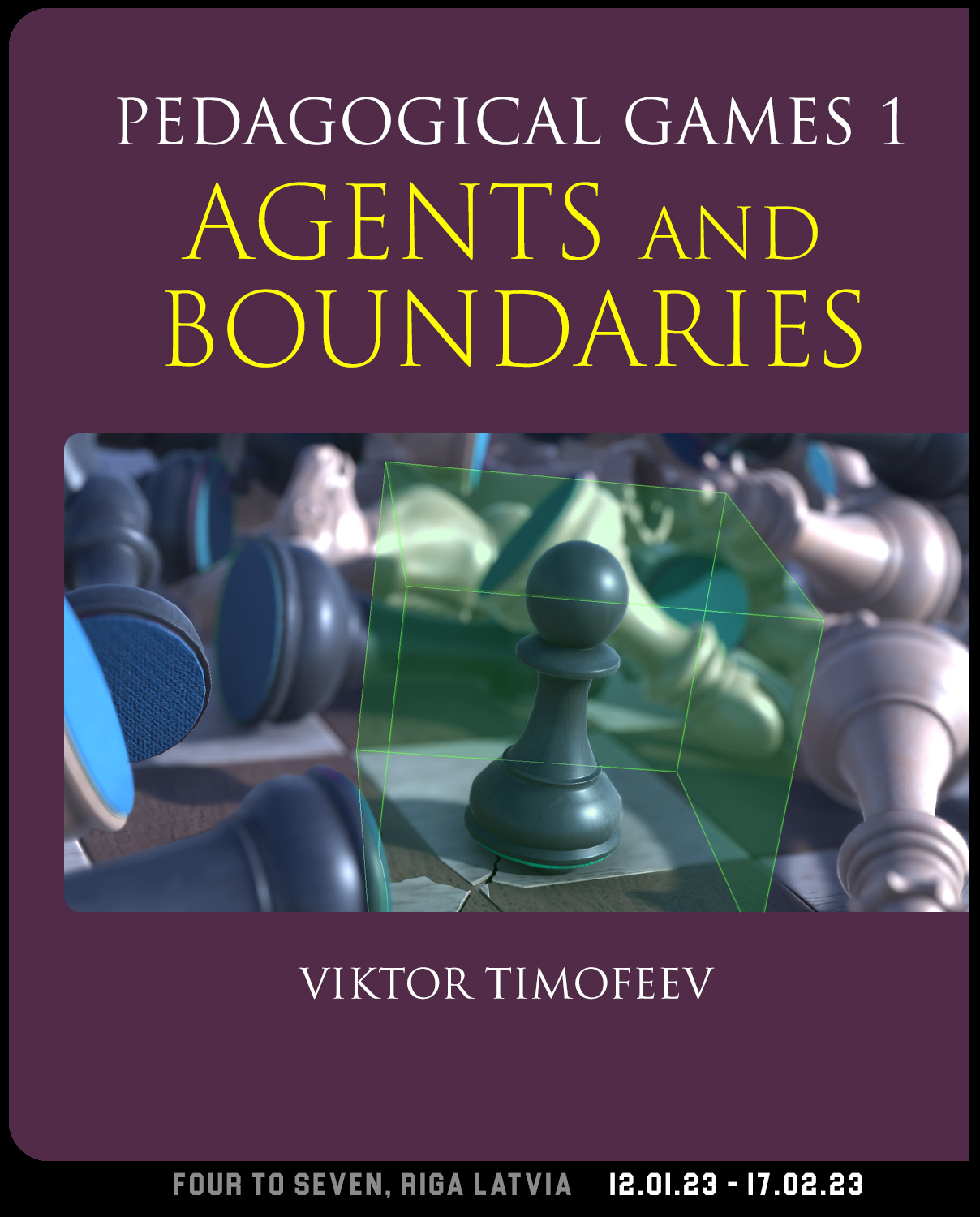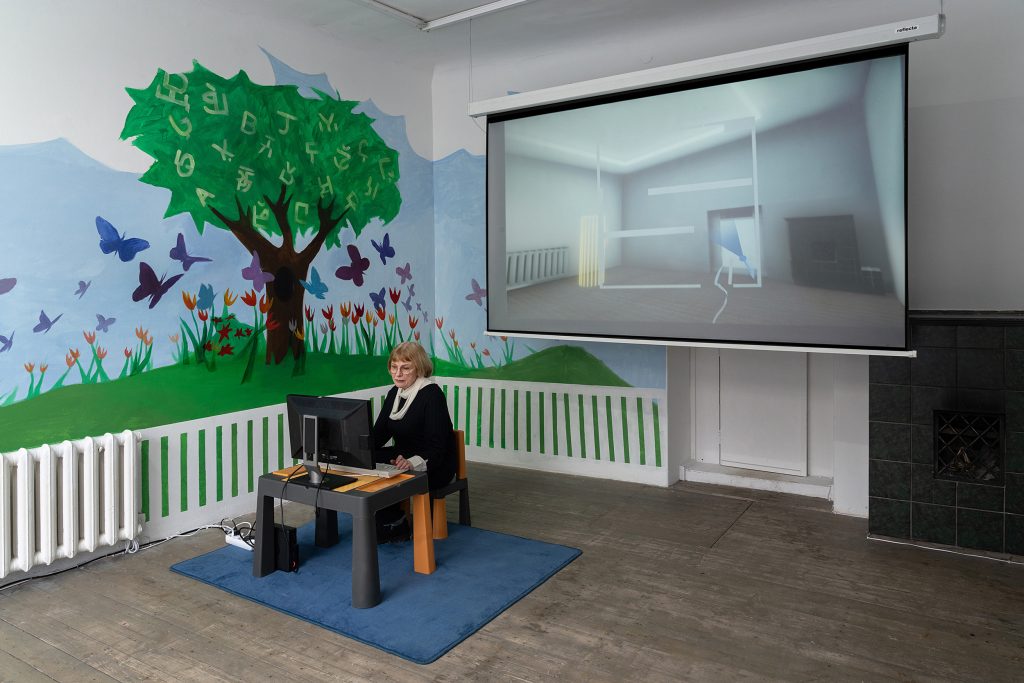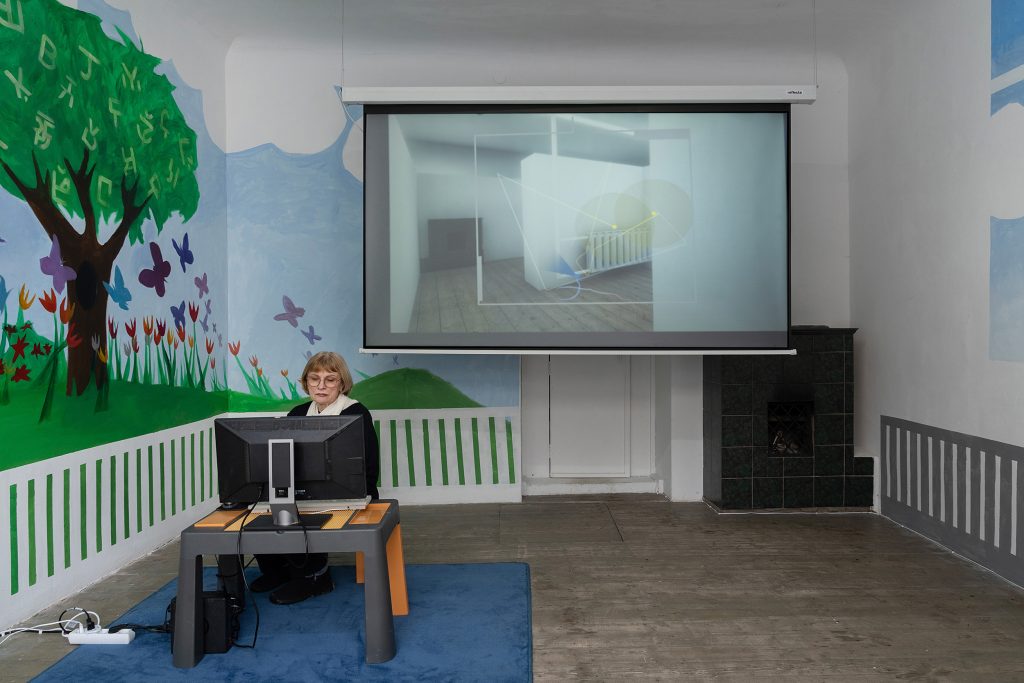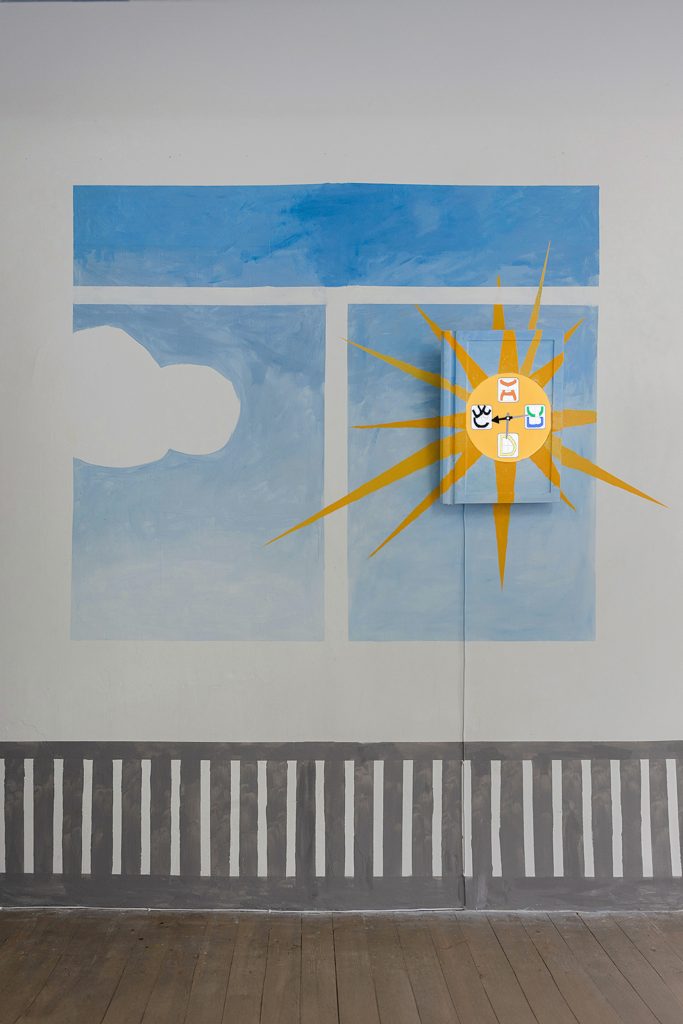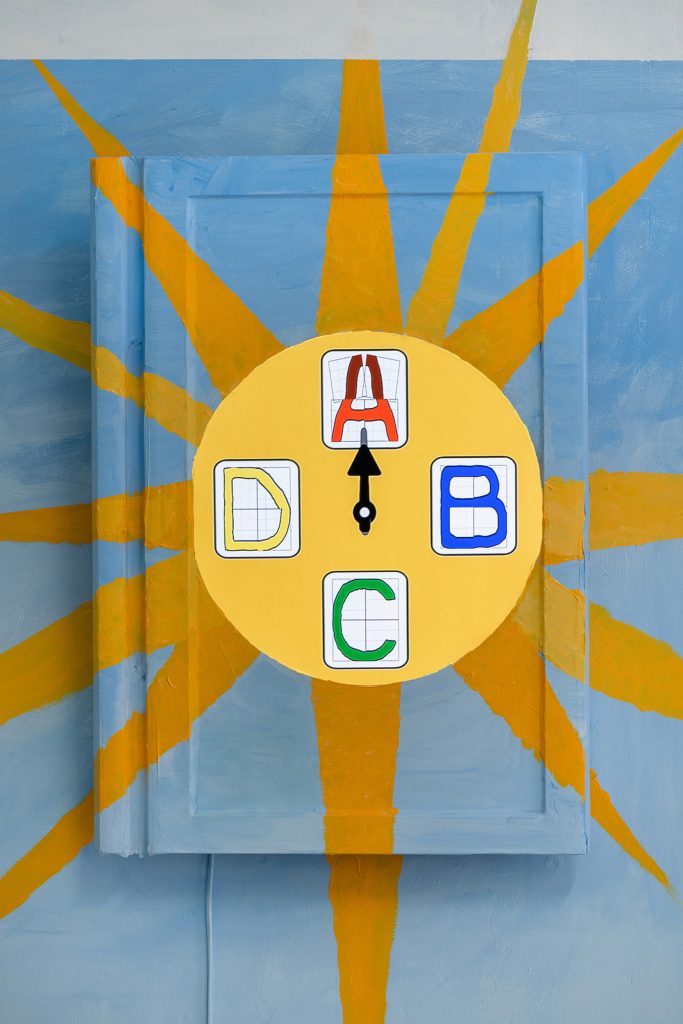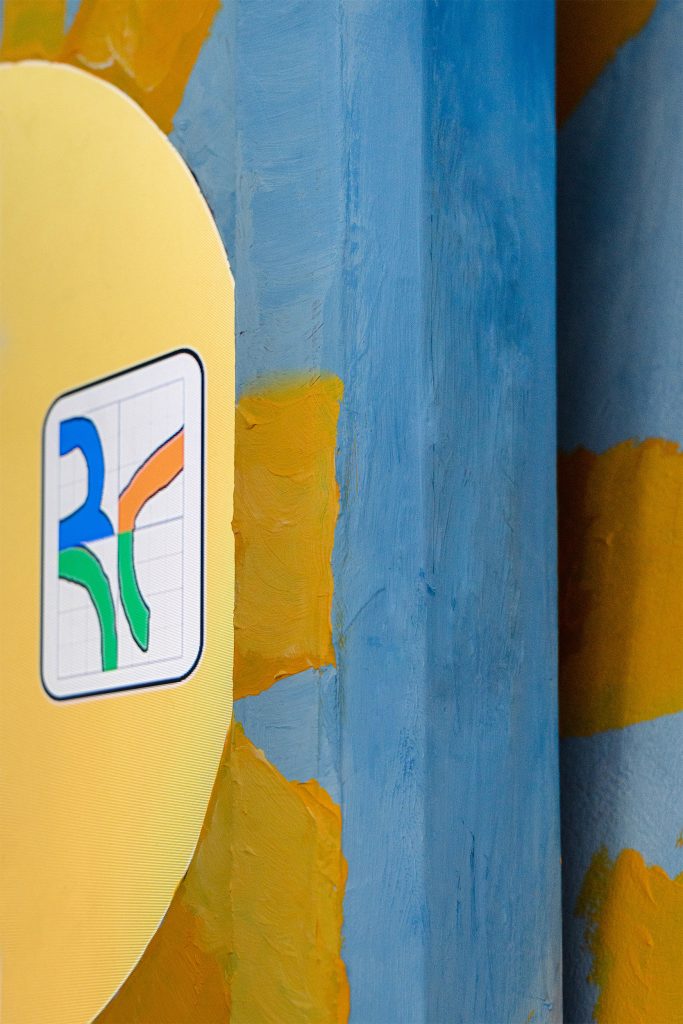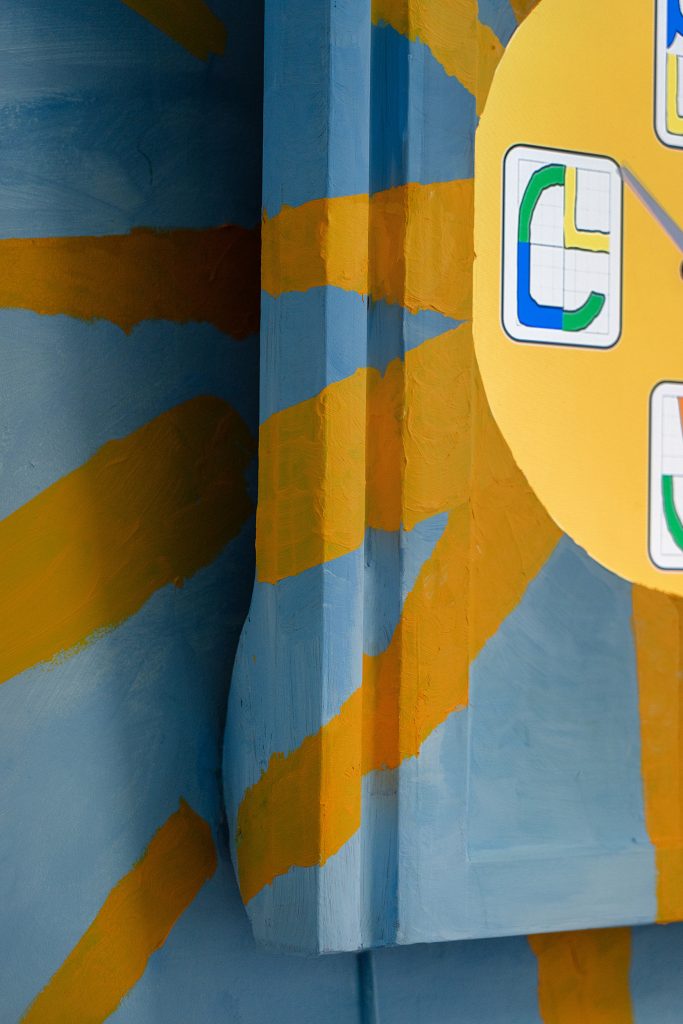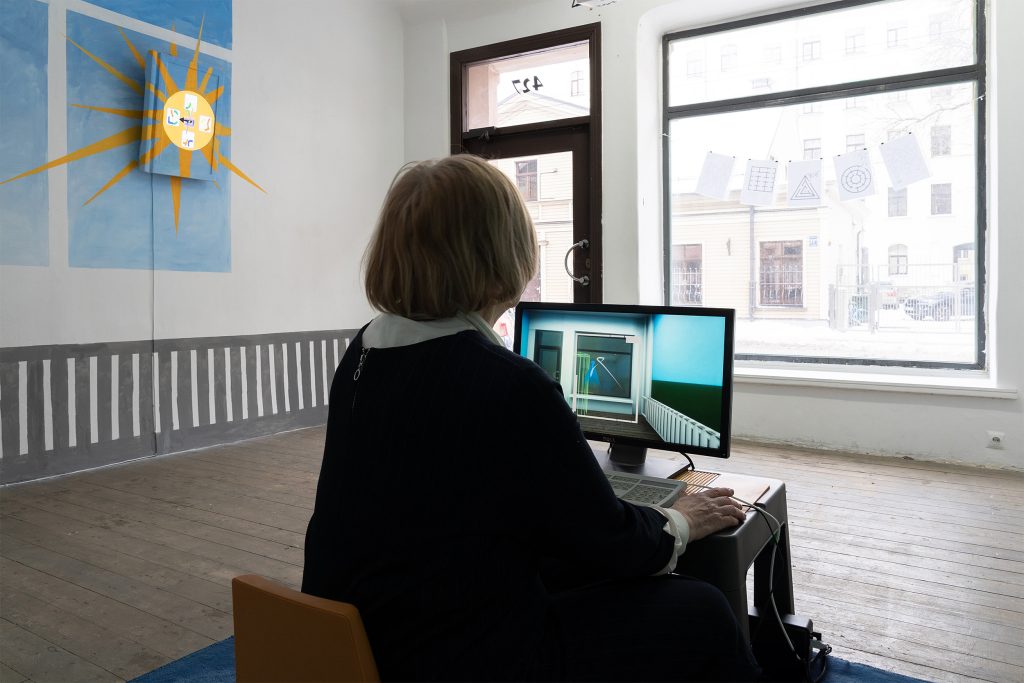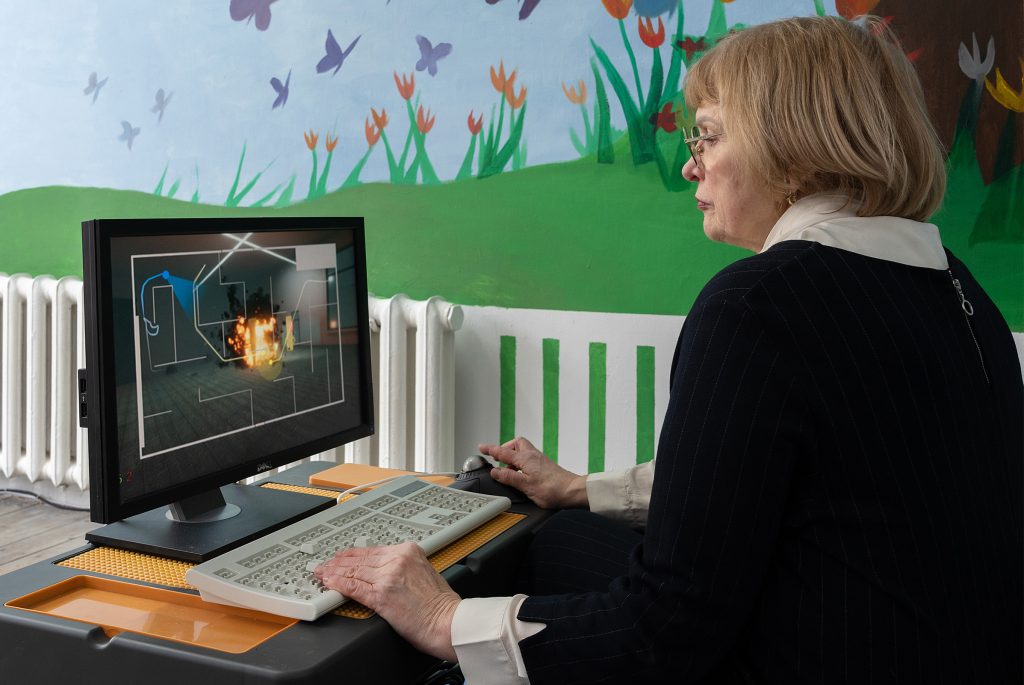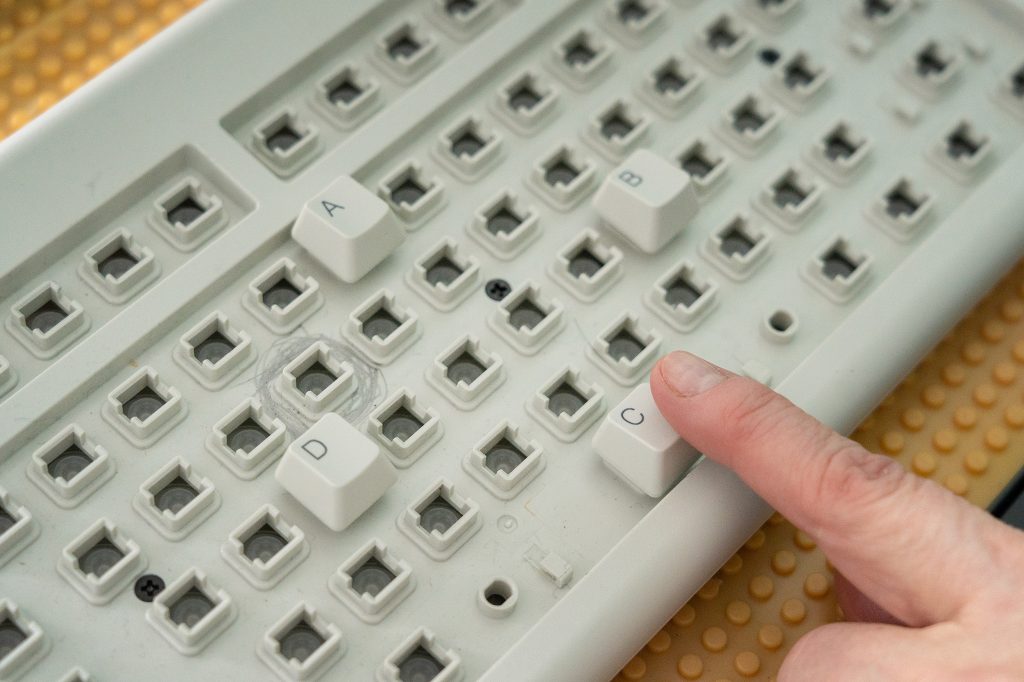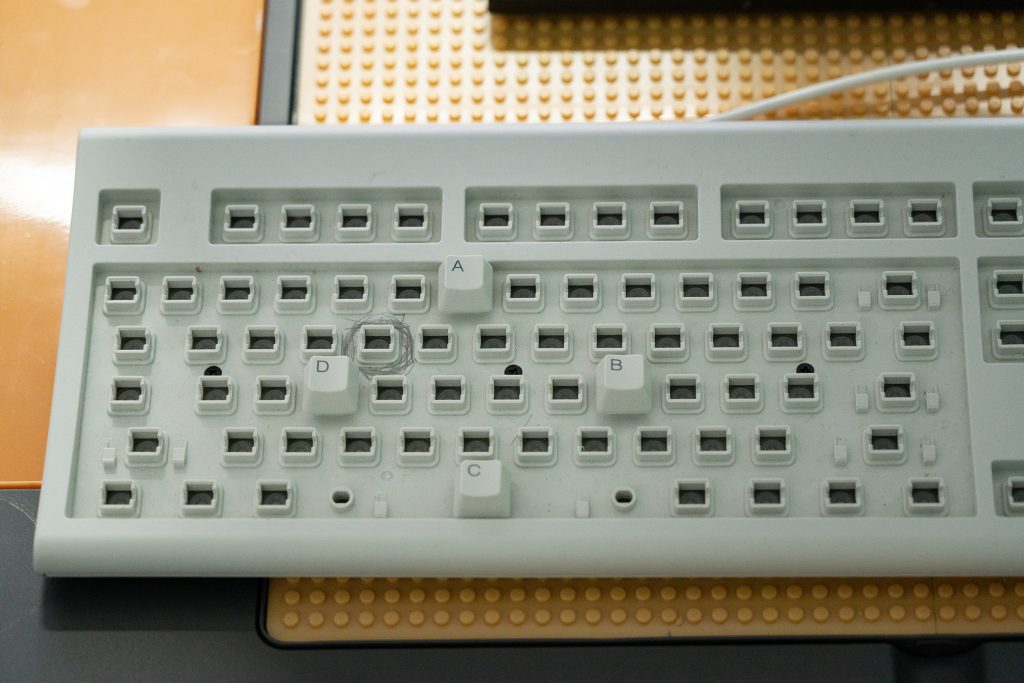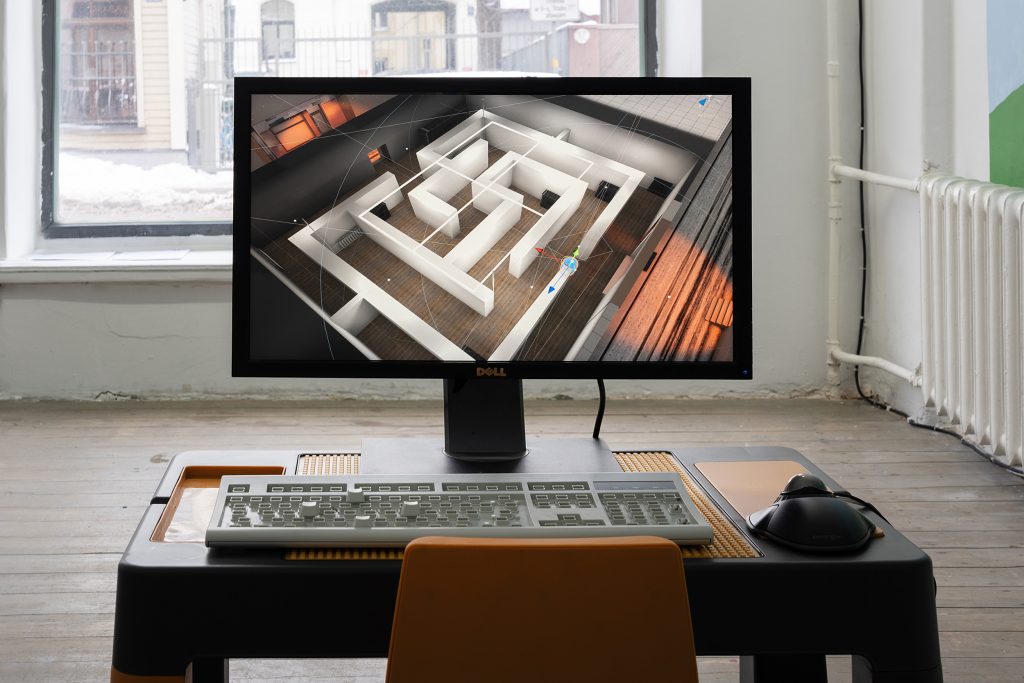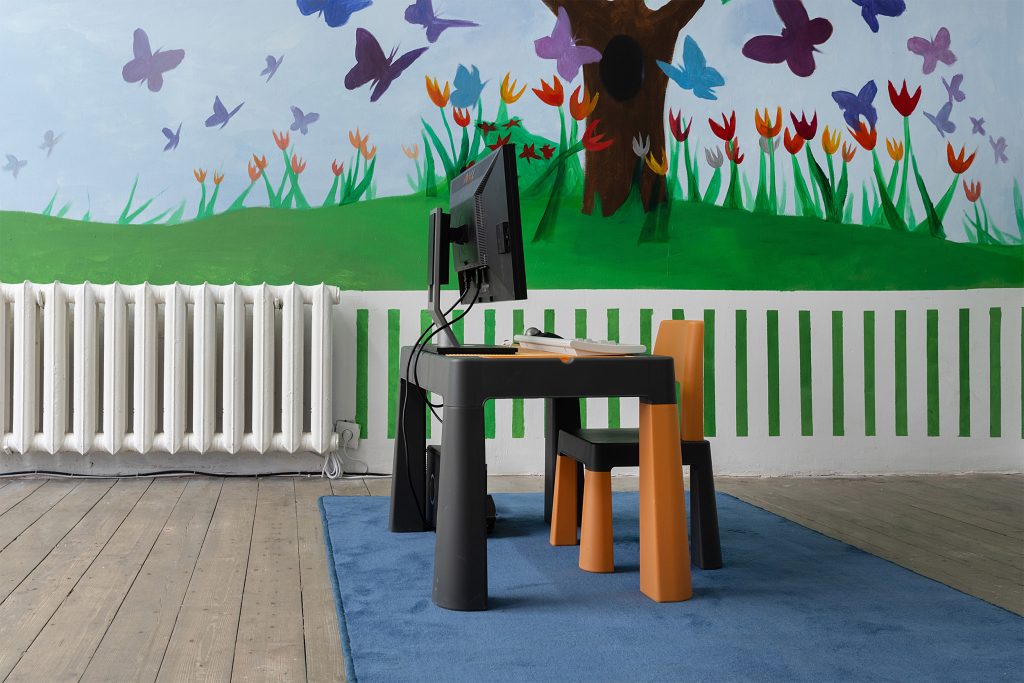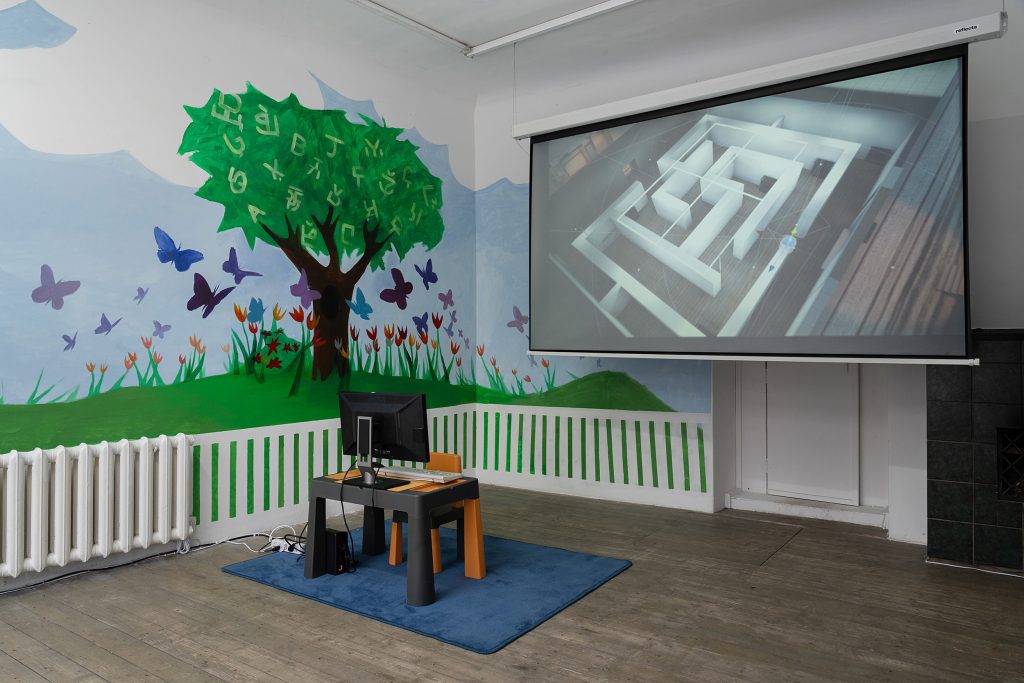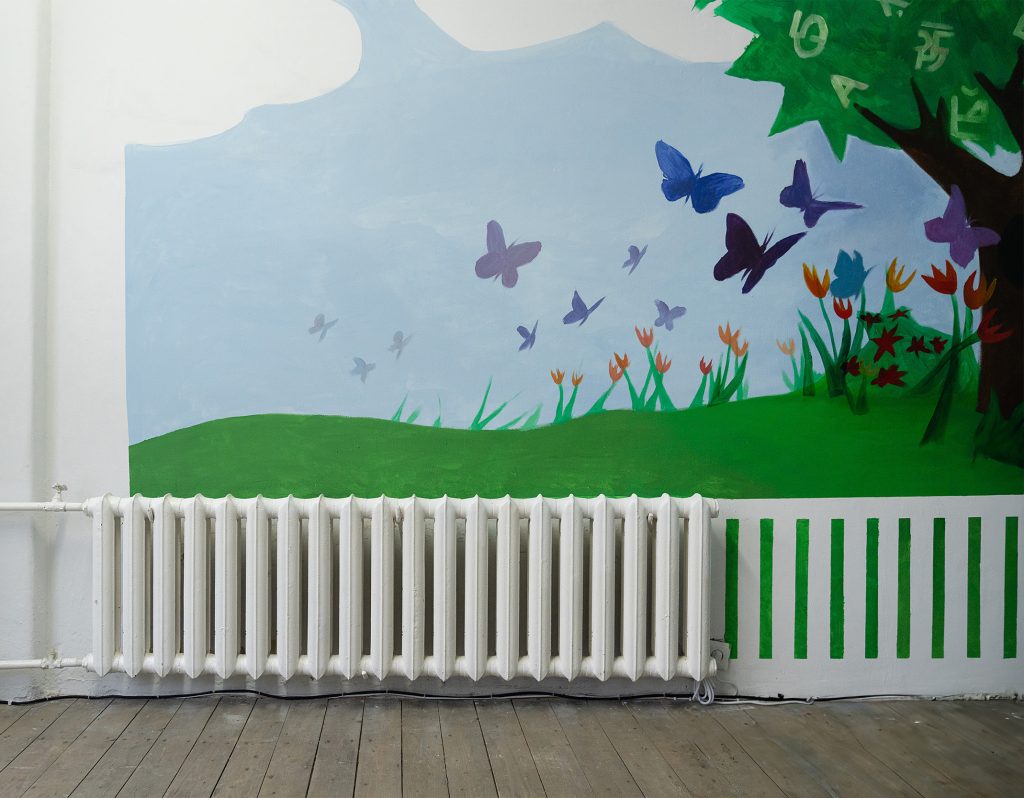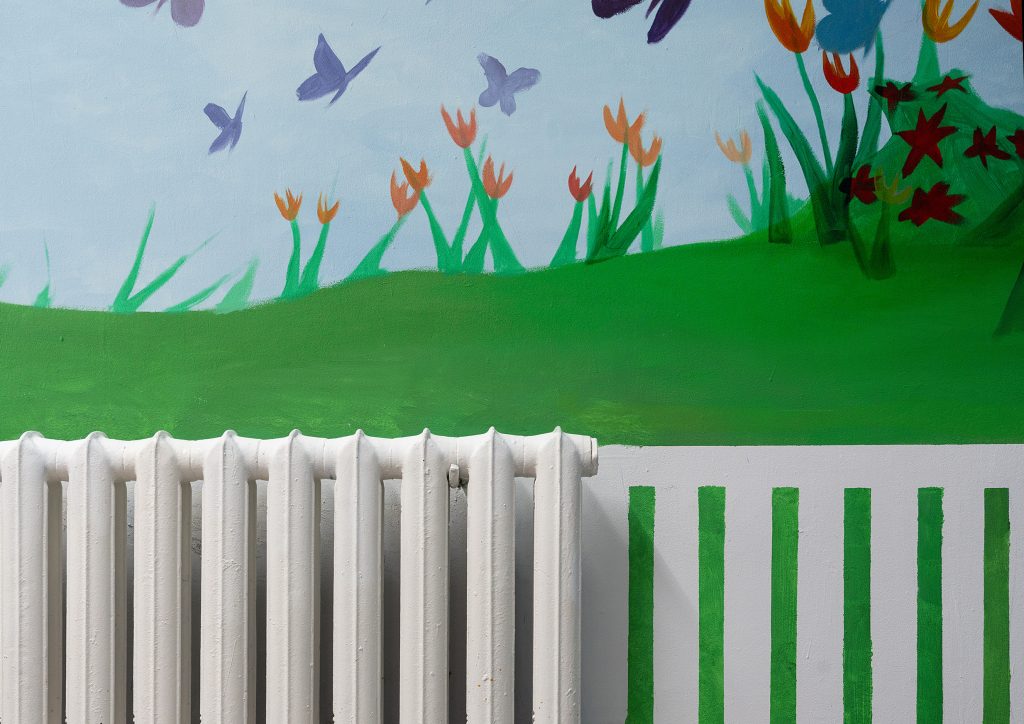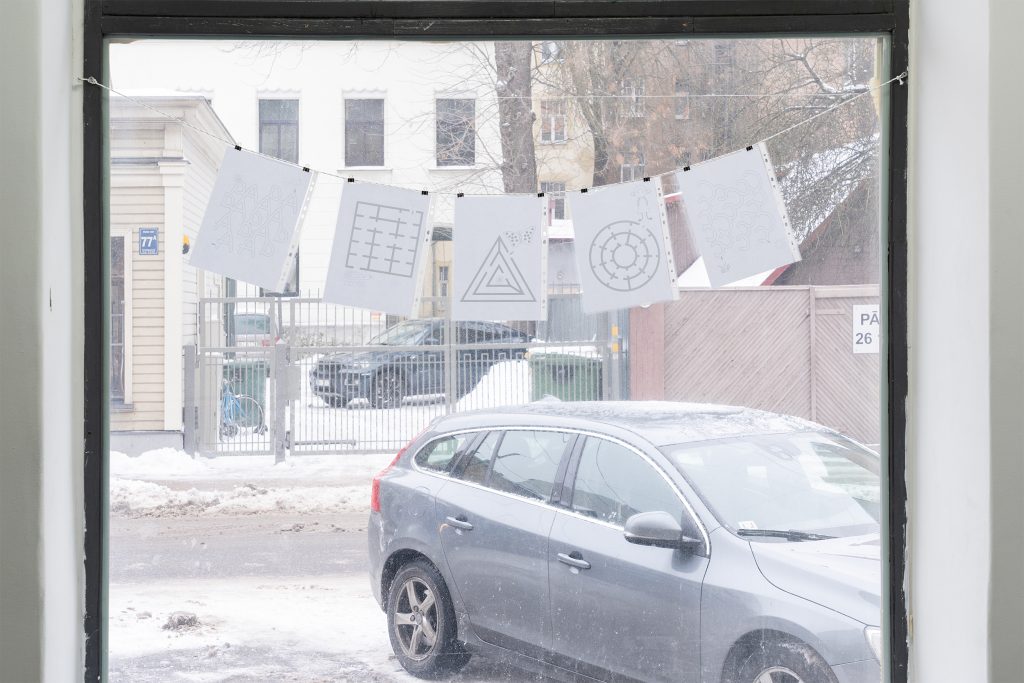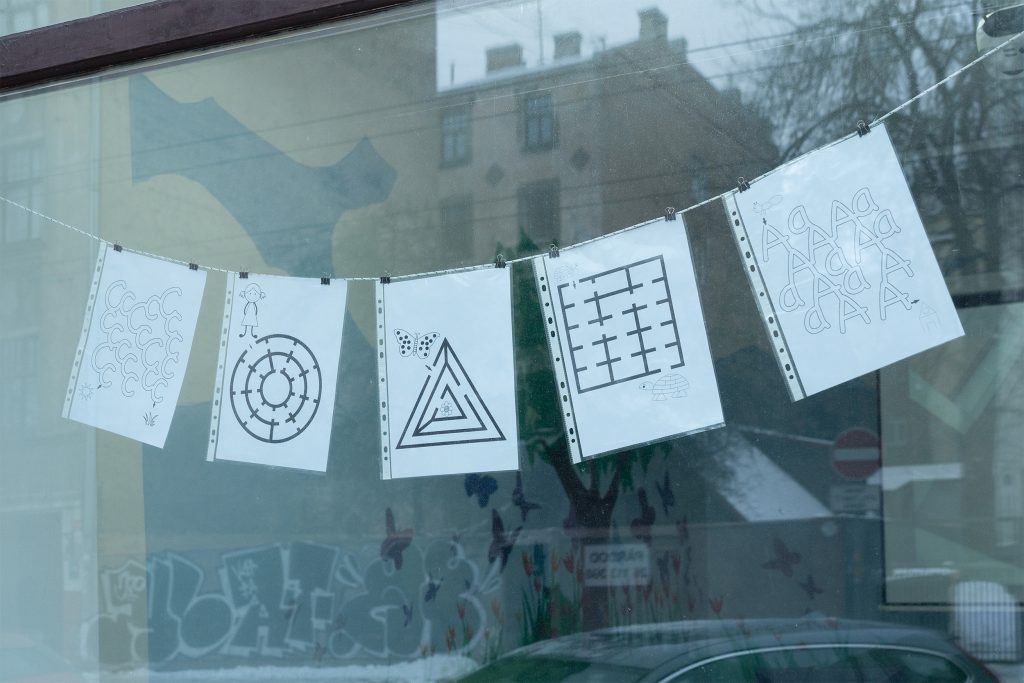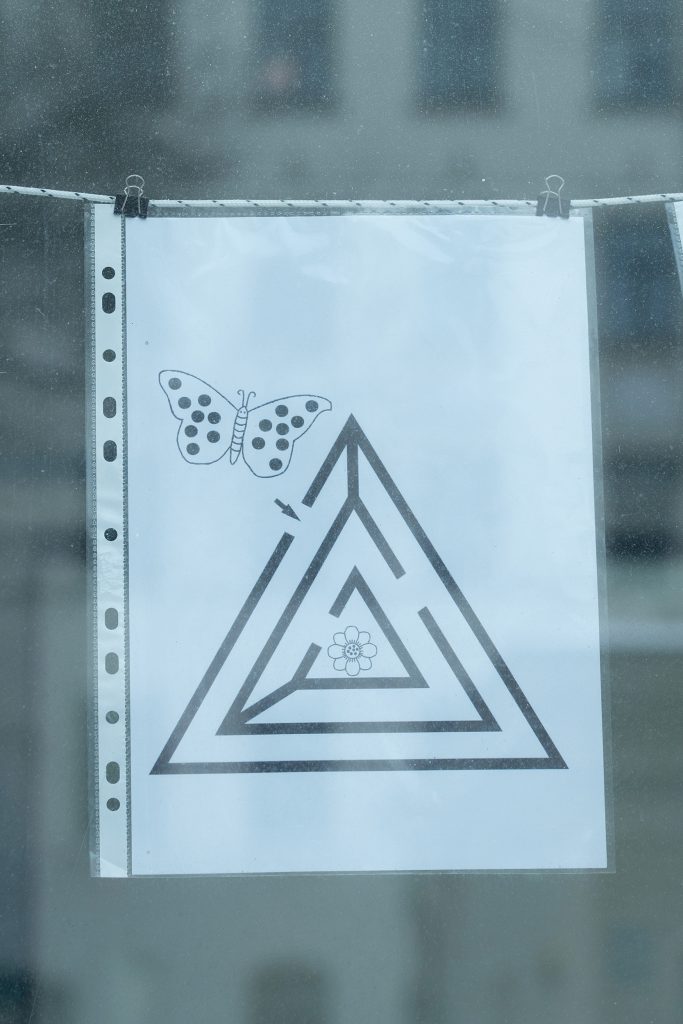Snakes and Ladders
Kamil Bouzoubaa-Grivel
27/08–18/10/2025
For Snakes and Ladders – his first solo exhibition in Latvia – the French-Moroccan artist Kamil Bouzoubaa-Grivel presents a site-specific floor installation alongside a series of drawings on paper.
In his practice, Bouzoubaa-Grivel departs from drawing as his primary medium, creating works on paper as well as sculptural pieces that translate drawings into three-dimensional forms. With Snakes and Ladders, he explores how the medium can be expanded into space. His distinctive style replicates digitally generated imagery while being realised through a slow, manual process. Space and volume become central principles of image creation, unfolding as a play between flatness and three-dimensionality.
Kamil Bouzoubaa-Grivel’s process could be described as oddly monastic, devoting twelve to sixteen hours a day to the production of these drawings. Wearing blue plastic gloves – a membrane protecting paper from hands that produce excess moisture – he surgically applies line after line after line after line with a marker. These lines trace the forms of drafting tools: standardised instruments used for technical drawings, but here designed and fabricated by the artist himself. The artist becomes the embodiment of mechanical (re)production, himself a machine, a human-printer, generating reproducible forms. Following self-imposed restrictions and rules, the artist pushes the limits of both medium and physical ability to the point where the ordinary, utilitarian function of drawing dissolves. The process, sustained through relentless repetition, unfolds as a specific form of excess.
At the same time, the excess of image production that characterises contemporary life – so visually saturated – is precisely what Bouzoubaa-Grivel’s drawings bring into focus. They stage the slowness of manual work against the immediacy of digital production, and the imperfect, variable detail of hand-drawing against the flawless regularity of on-screen forms. Like simulacra of digital aesthetics, the drawings emerge from a process of moving back and forth between digital and analogue.
The compositions play with optic perception through a visual effect known as moiré, first encountered in crystals under the microscope and later recognised in digital screens, where dense arrangements of lines trick the eye into perceiving movement within static compositions. Moiré alludes to wave forms and invisible processes, taking on pseudoscientific and psychedelic qualities that gesture toward worlds beyond perception. In Bouzoubaa-Grivel’s drawings, the effect often becomes more pronounced when viewed through a digital screen, making the works somewhat resistant to photographic reproduction.
His interest in abstraction draws on a wide range of sources: a background in graphic design and typography, a fascination with topographic and architectural drawings, abstract comics, and North African traditions such as Amazigh tapestry, zellige, and marquetry. In culturally Muslim image traditions, abstraction often takes precedence over figuration, seeking connection to the divine through shape, form, and visual density. In Bouzoubaa-Grivel’s work, this sense of saturation links his drawings to his Moroccan heritage while also situating them within Western abstract and post-digital art traditions.
The exhibition at 427 features two series of drawings: Pinball Superscore and Stimultanéités – a portmanteau of the French words stimulation and simultanéité. Across Bouzoubaa-Grivel’s practice, titles sustain a parallel, collective thread, as they are often created in collaboration with French poet Mia Trabalon. What distinguishes the drawings in Snakes and Ladders from the rest of the artist’s oeuvre is their scale and use of colour. Produced in a format that corresponds to a single working day, these drawings capture a more defined mental space while further interrogating ideas of speed, labour and production. The artist’s typically monochrome palette shifts to red and blue, recalling anaglyph stereoscopy – a method of producing the illusion of three-dimensional depth by layering two slightly displaced images in contrasting colours, most often red and cyan.
The floor installation extends the exploration of the manipulation and disintegration of the visual field. Carved into wooden panels, its drawing is based on a grid structure angled to both challenge and accentuate the architectural features of the exhibition space. The result alludes to vertigo – the sensation of spinning or instability, in which the body or surroundings seem to move while remaining still. Unlike the works on paper, where line emerges through the addition of ink, here it is produced by subtraction – carving into the surface, leaving behind traces of absence. The white-painted panels take on an almost ceramic quality, their incised lines varying in depth, at times revealing the wooden floor that lies underneath. While much of the composition adheres to the grid, certain parts transgress its order, breaking away into irregular rhythms. Named after a famous board game, the exhibition Snakes and Ladders situates the viewer in a field of shifting perception. Lines and grids dissolve into patterns that resist fixation, drawing the body into a play of movement, balance and disorientation.
– Anna Laganovska
Kamil Bouzoubaa-Grivel (b. 1992) is a French-Moroccan artist working between France and Morocco.
He studied at the École Nationale Supérieure des Arts Décoratifs, the École des Beaux-Arts de Paris, and the School of the Art Institute of Chicago.
His practice explores the tension between digital and manual image-making, translating visual elements from the digital realm into hand-drawn forms that blur the lines between print and gesture, abstraction and illusion.
He has exhibited in numerous group shows at institutions including the Fondation Pernod Ricard, Bétonsalon – Center for Art and Research (Paris), La Panacée – MOCO (Montpellier), Fiminco Foundation (Romainville), Wallonia-Brussels Center (Paris), Komplot (Brussels), and the TGCC Foundation (Casablanca).
He has participated in international residencies at the Cité Internationale des Arts (Paris), Villa Belleville (Paris), the Boghossian Foundation at Villa Empain (Brussels), Jester (Genk, Belgium), and the Montresso Art Foundation (Marrakech).
His work has been recognized with several awards, including the Drawing Prize from the Hugot Foundation – Collège de France (2019), the Takesada Matsutani Prize (2020), and the Mustaqbal Prize (2024).
Support: VKKF (State Culture Capital Foundation), La Fondation des Artistes, Kim?, Auss
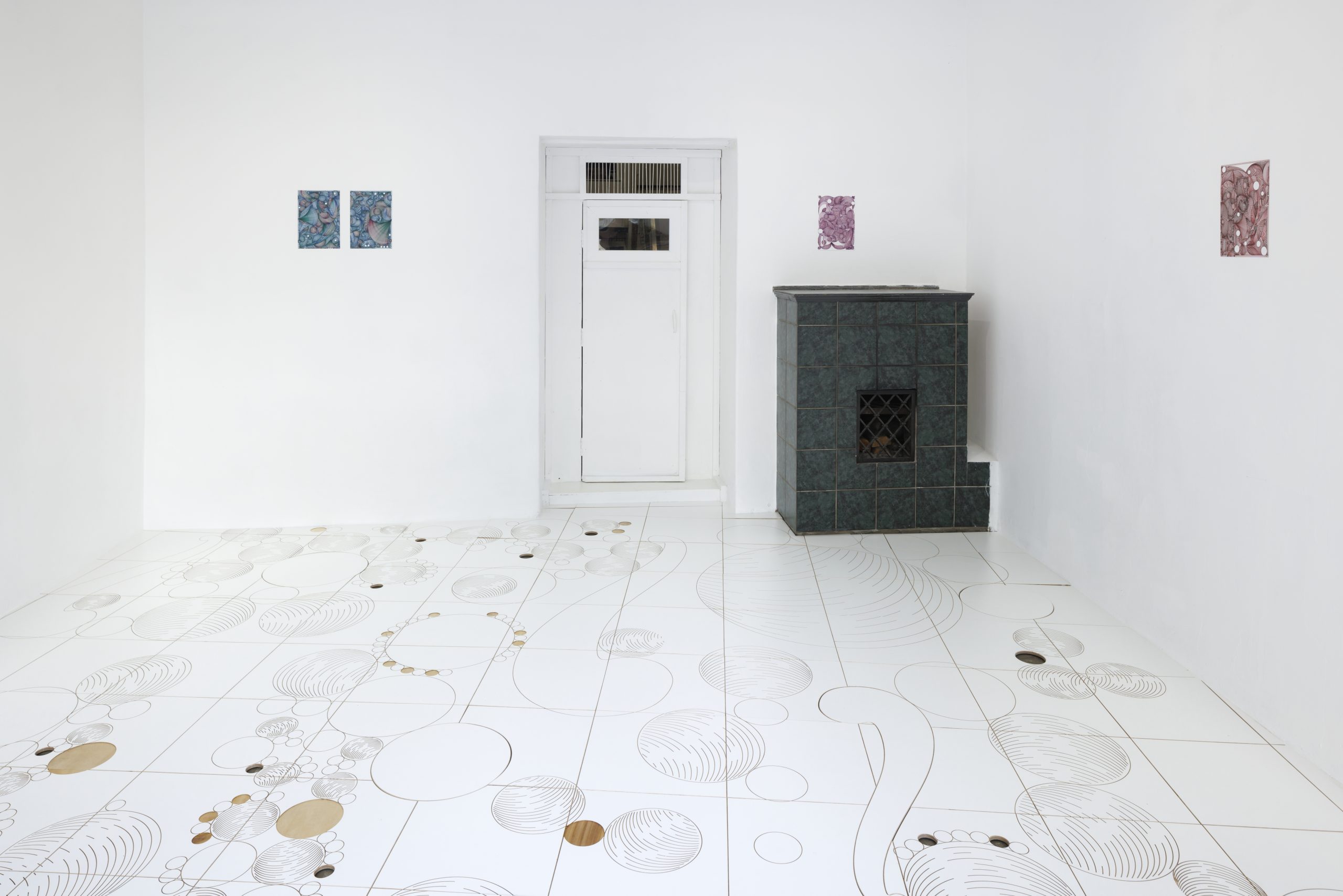
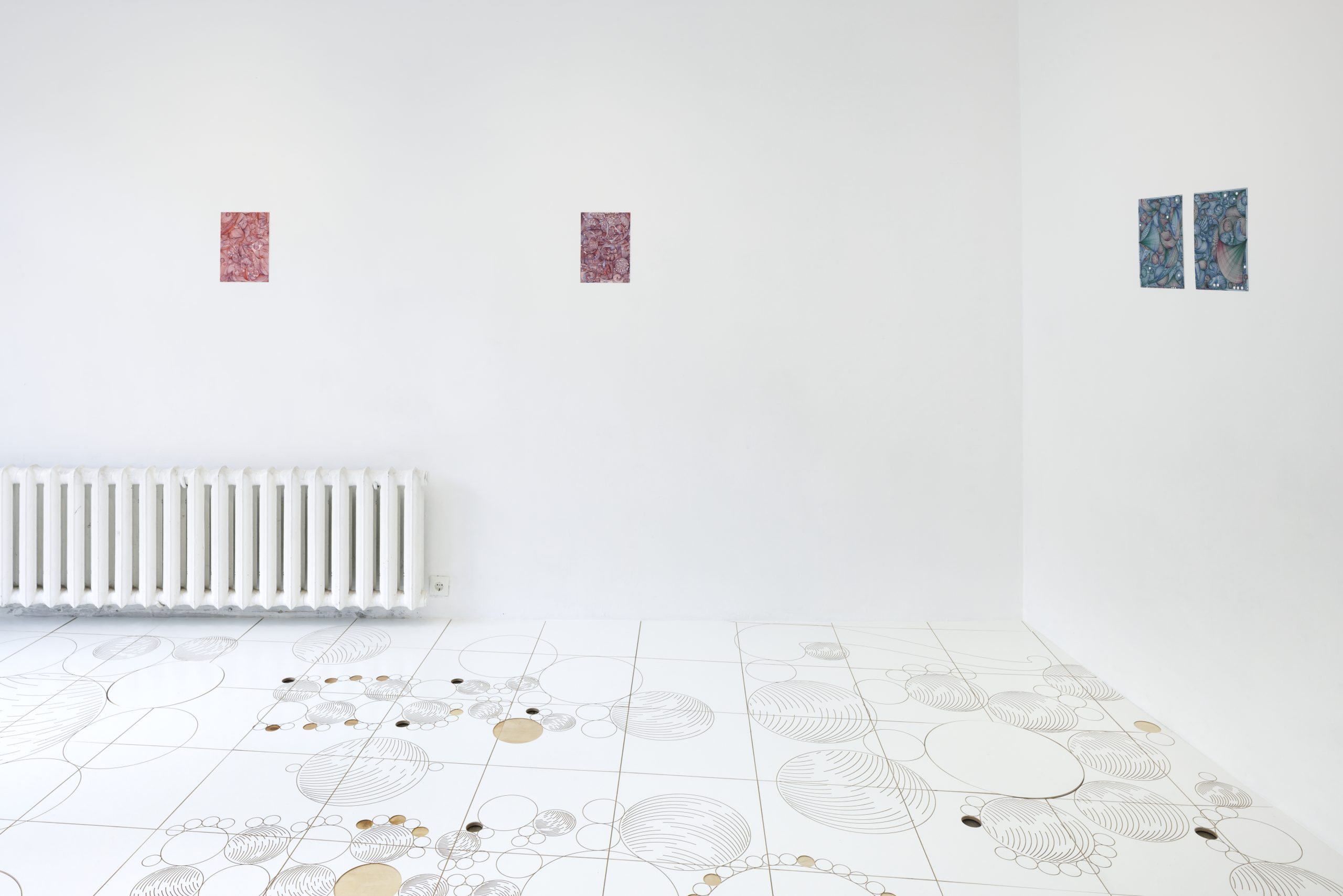
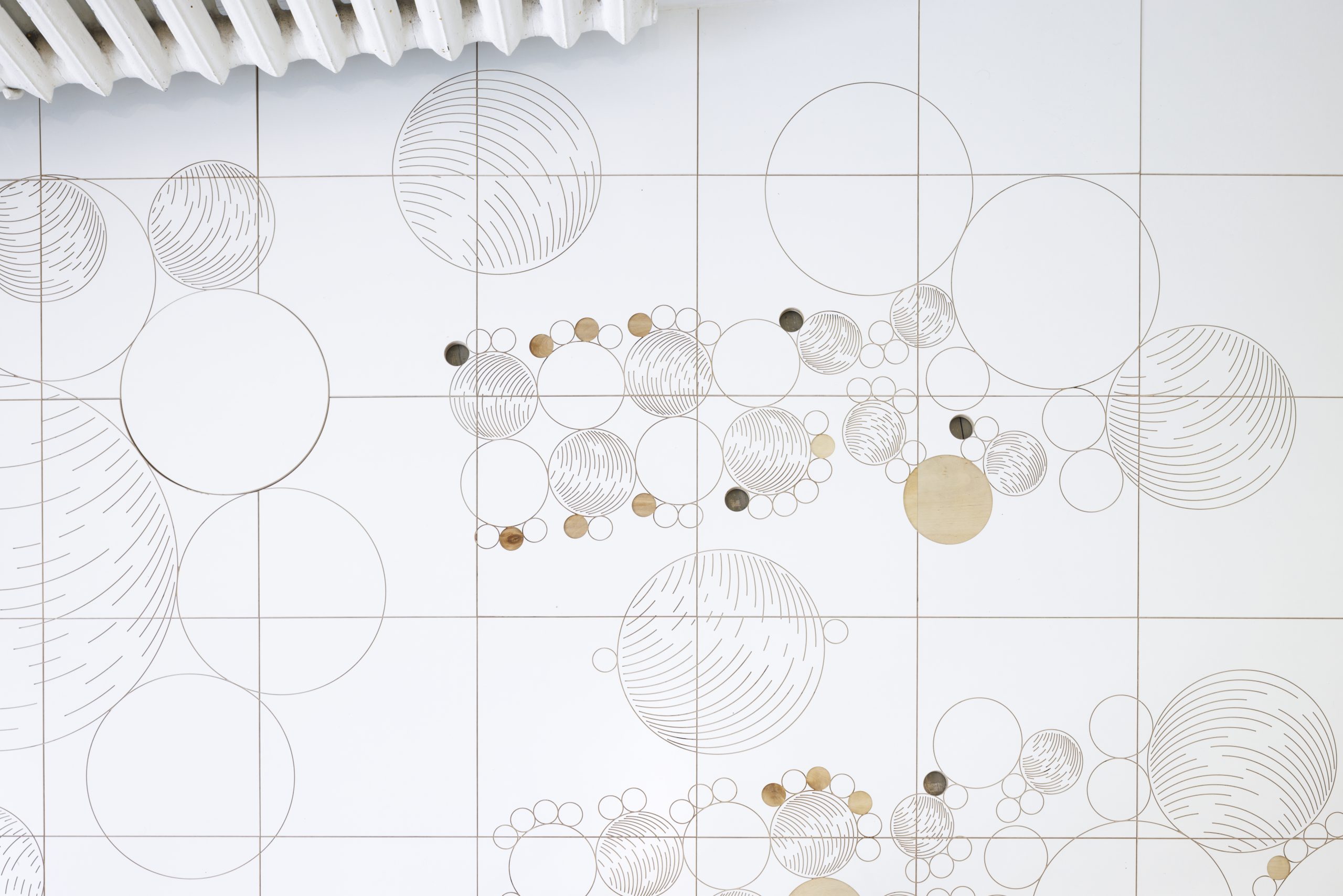
Site-specific installation, laminated plywoood
524 x 436 cm
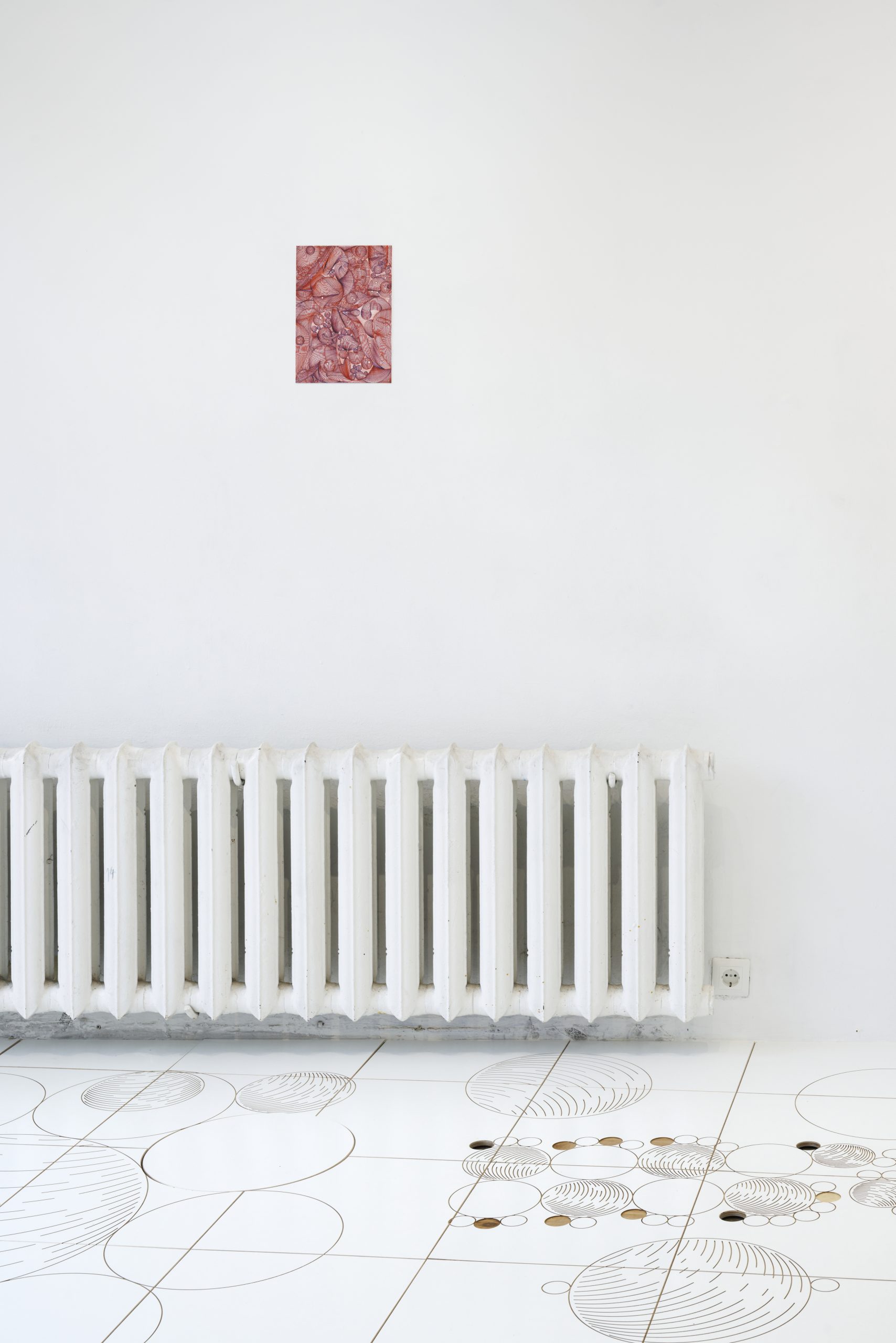
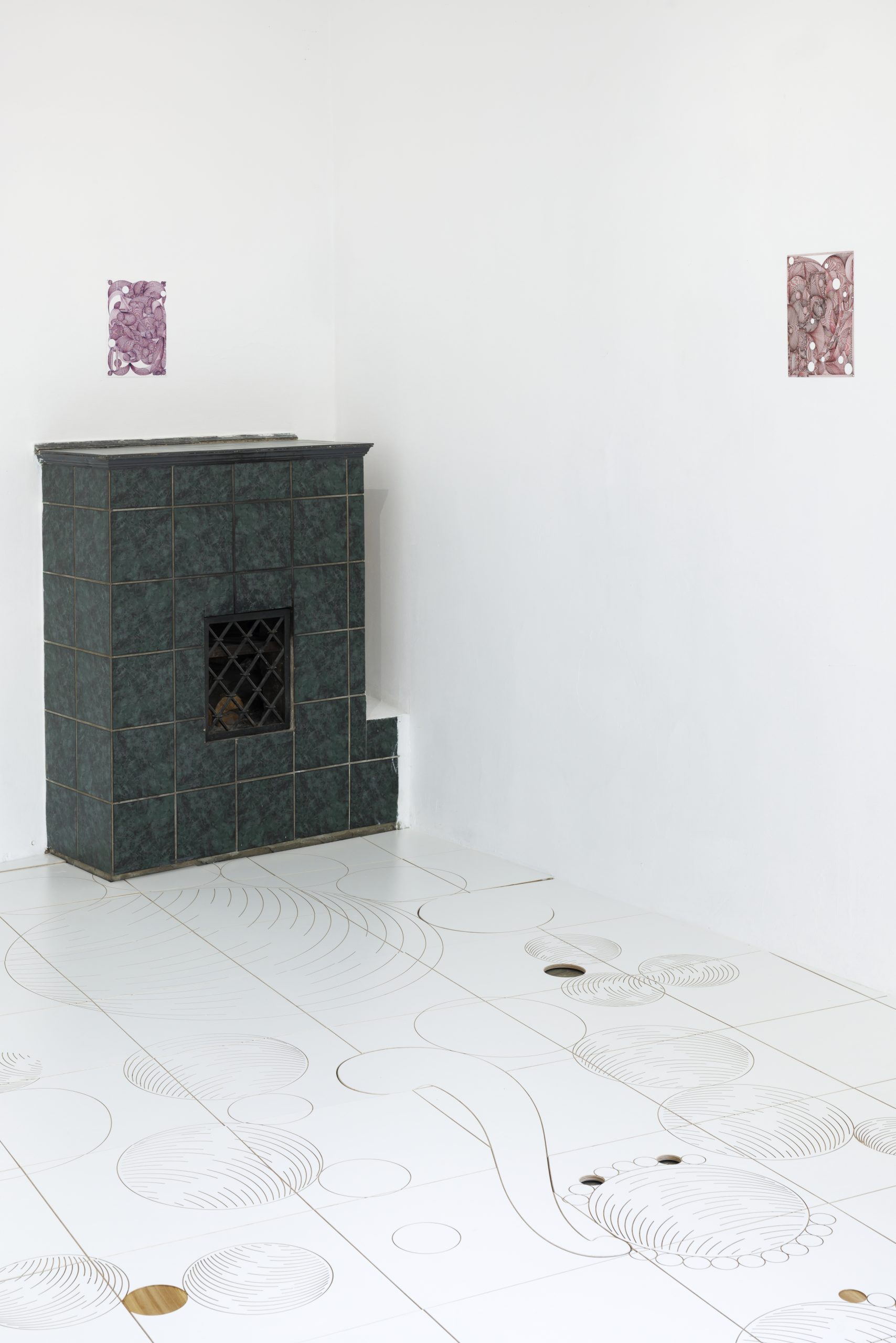
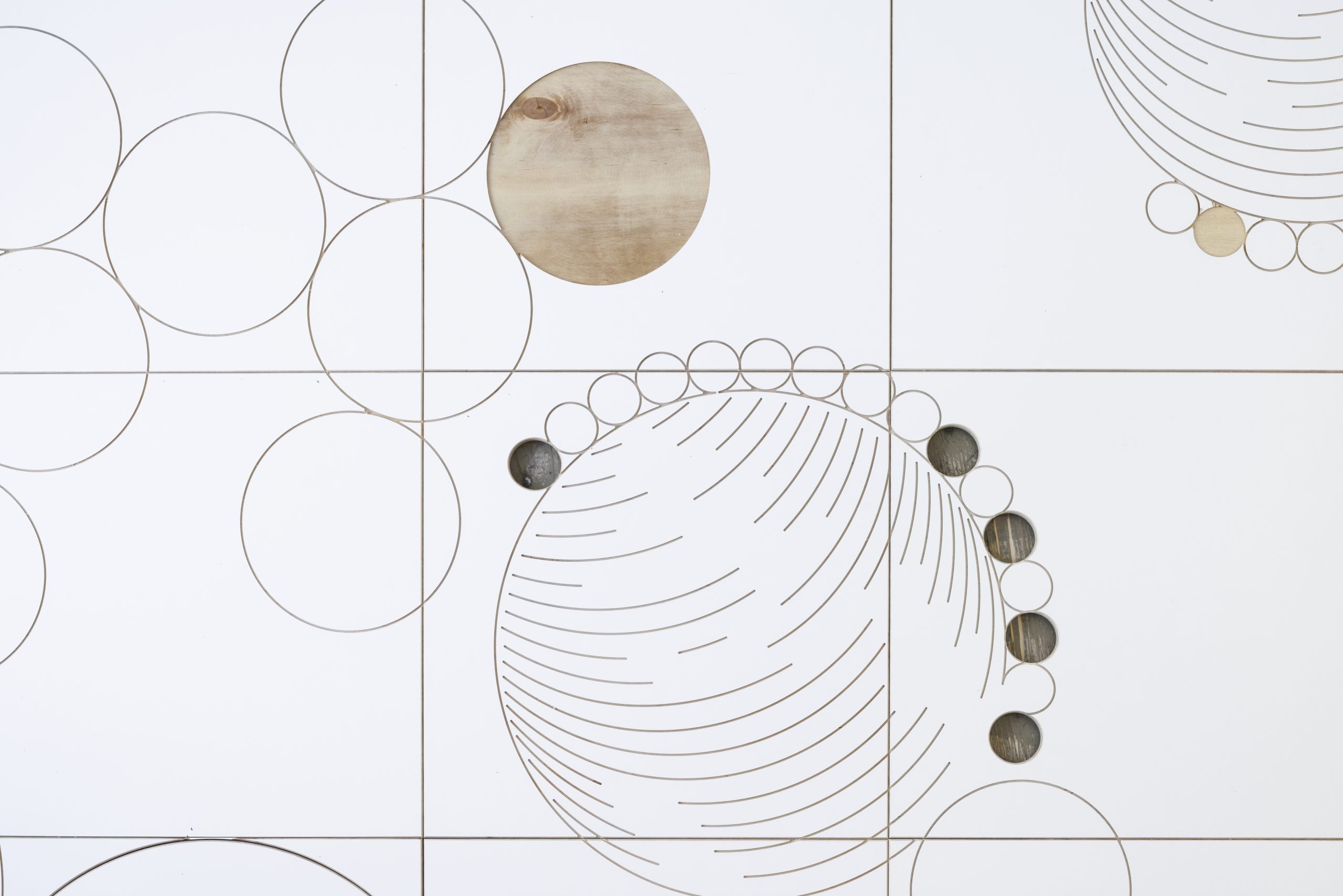
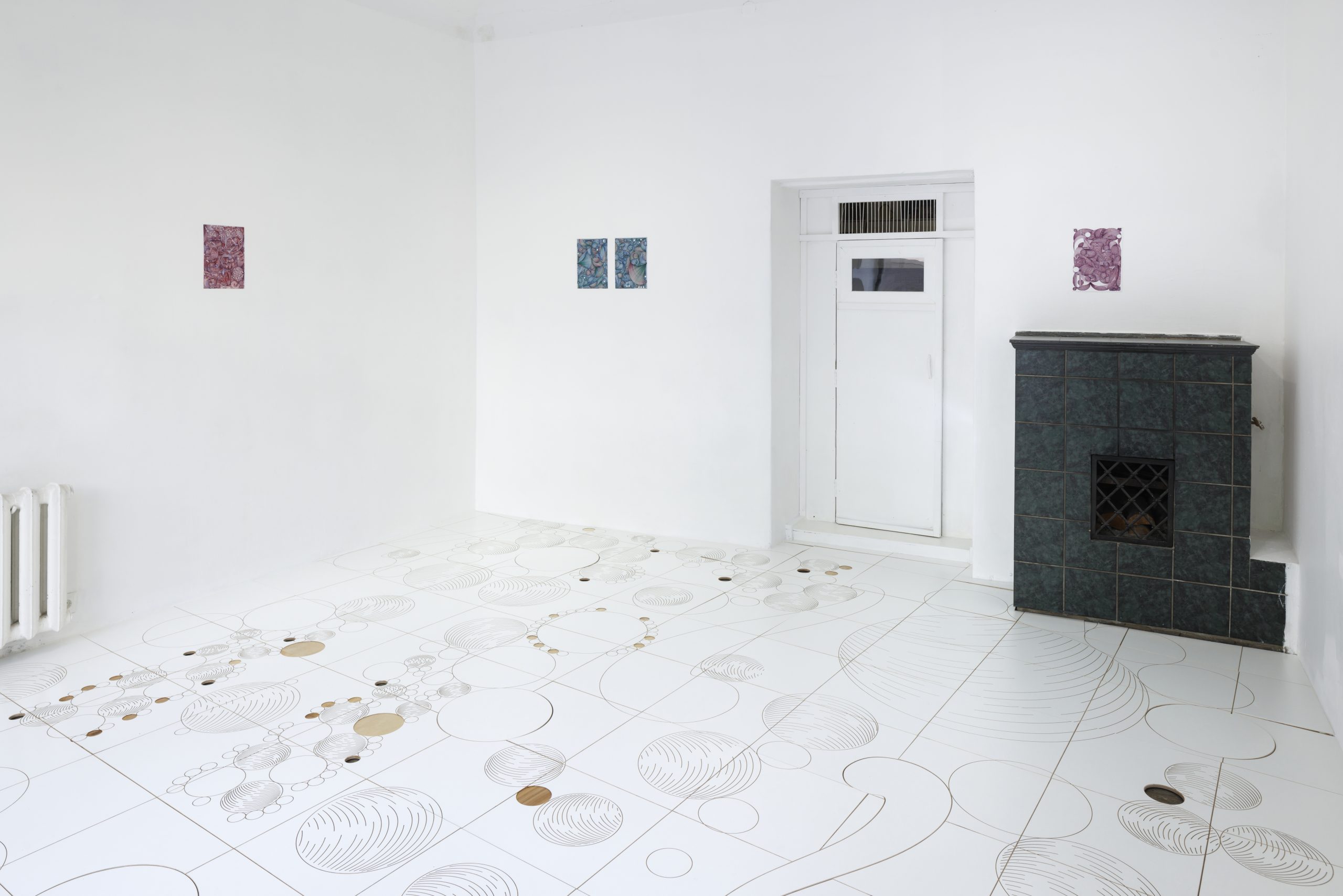
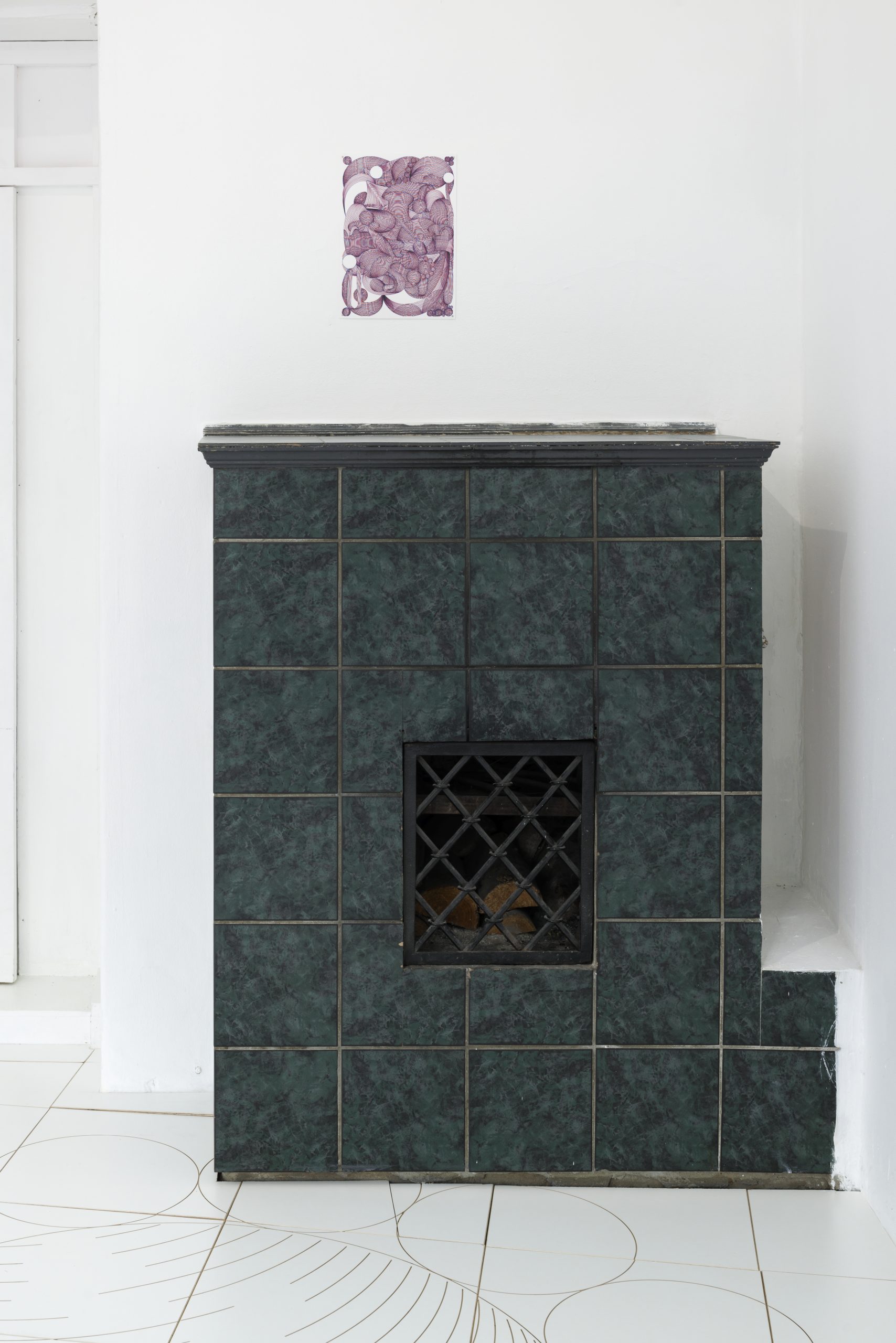
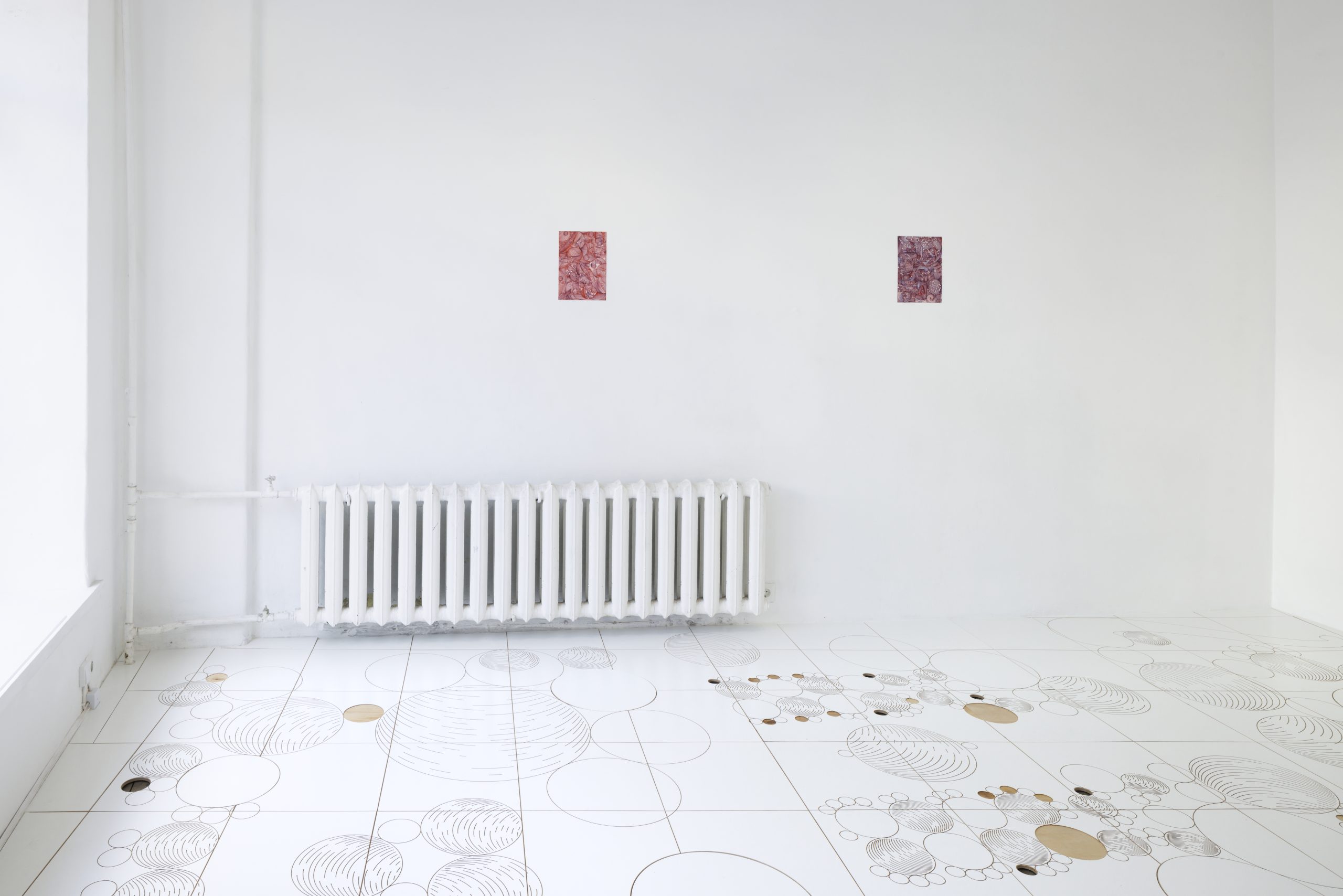
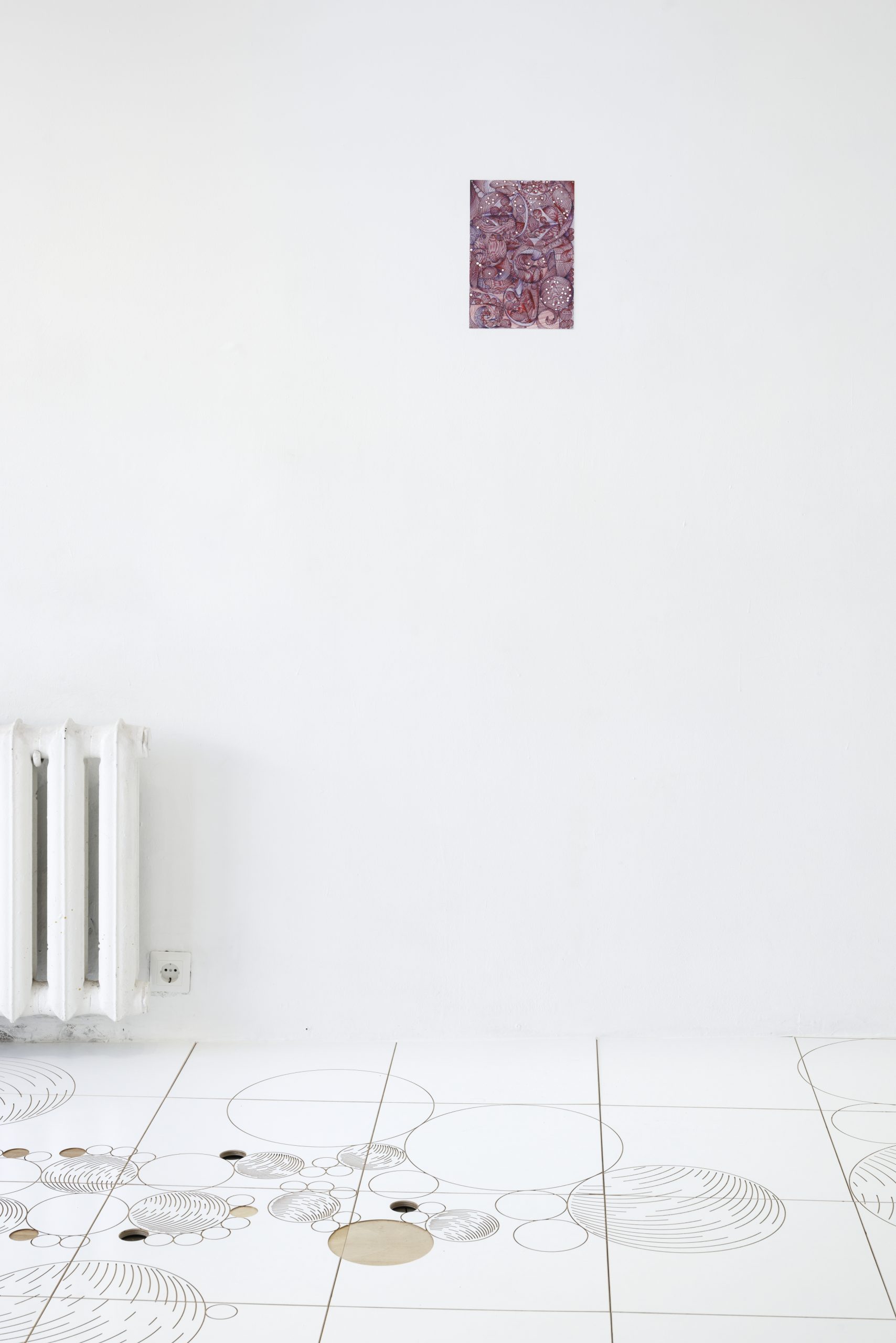
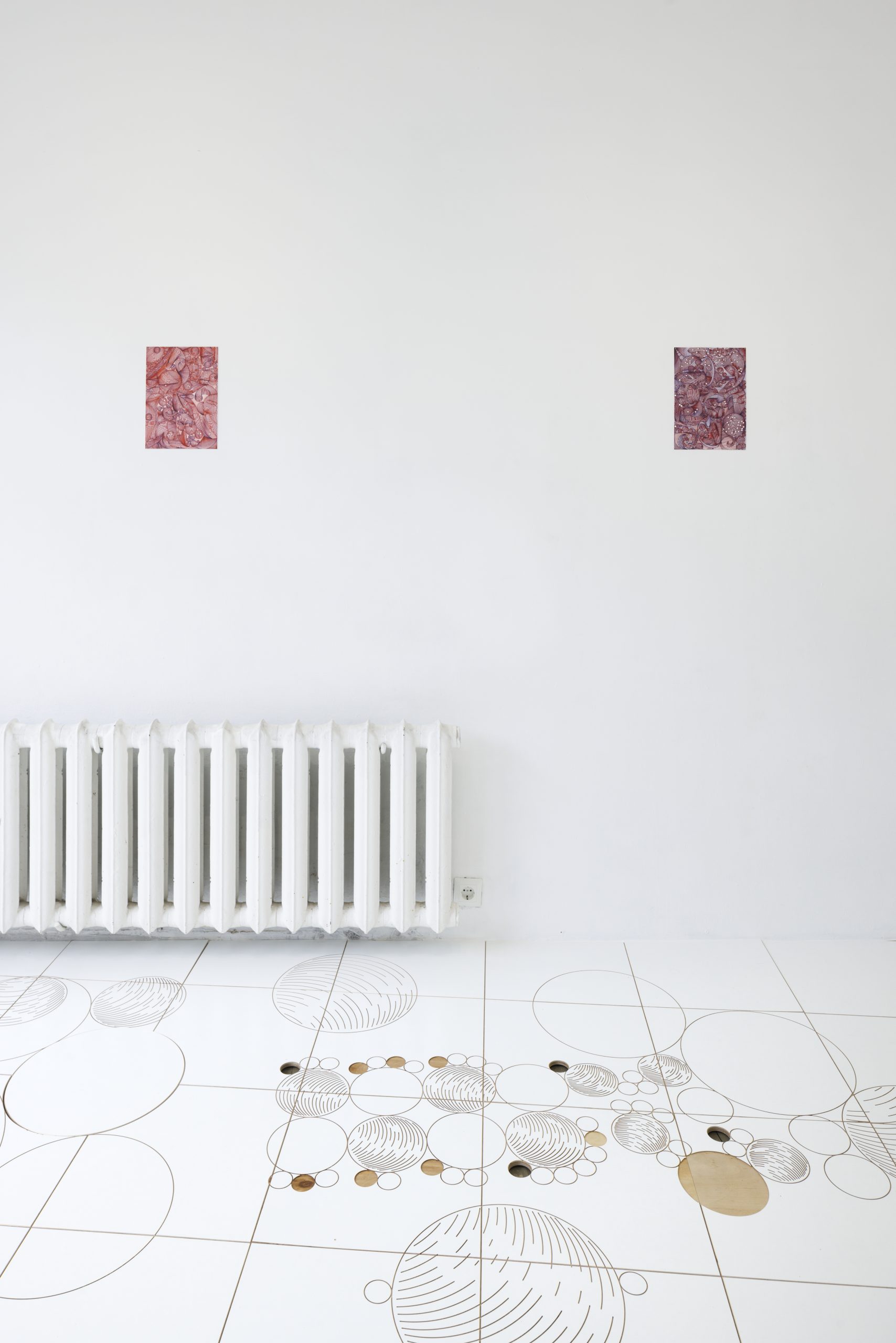
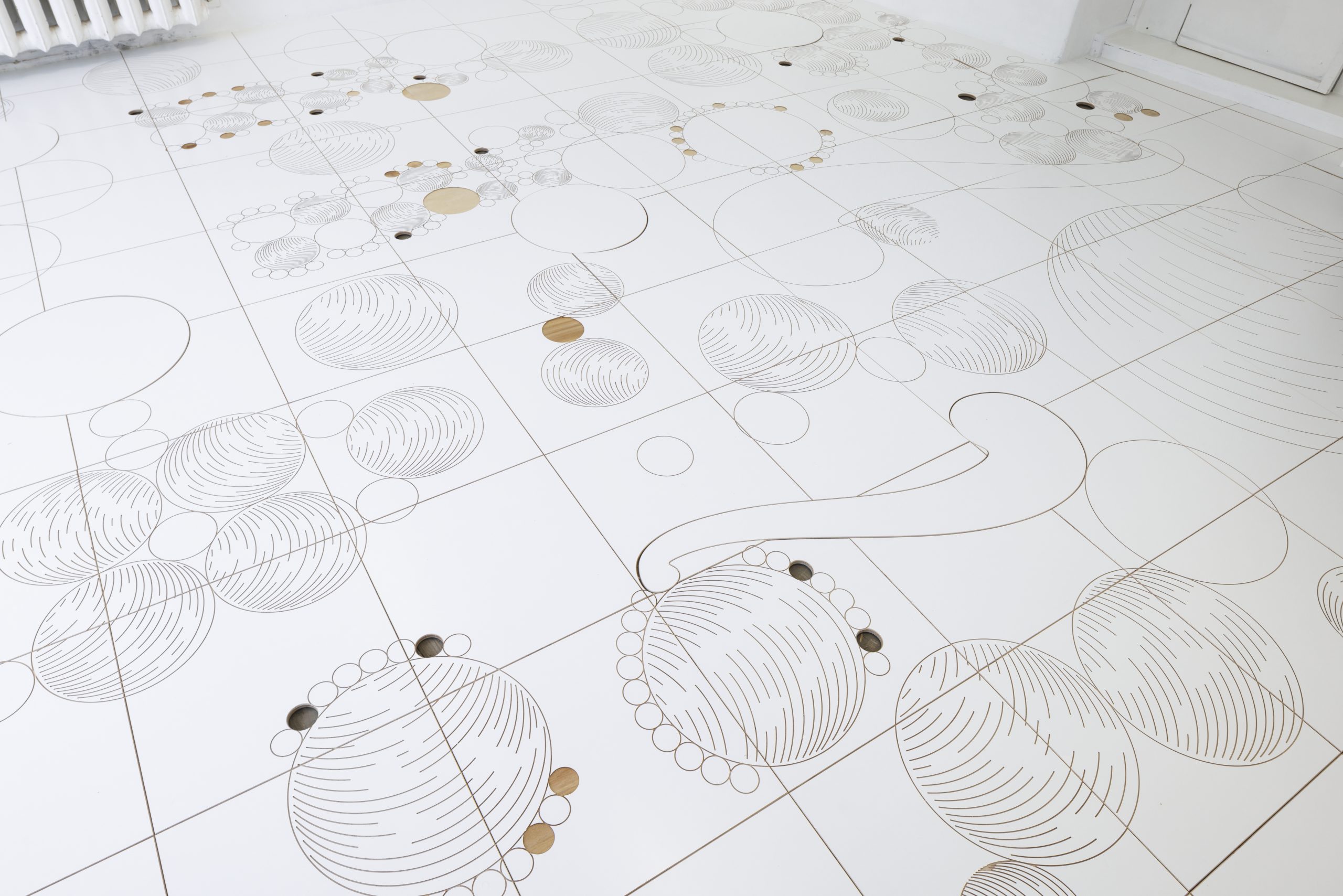
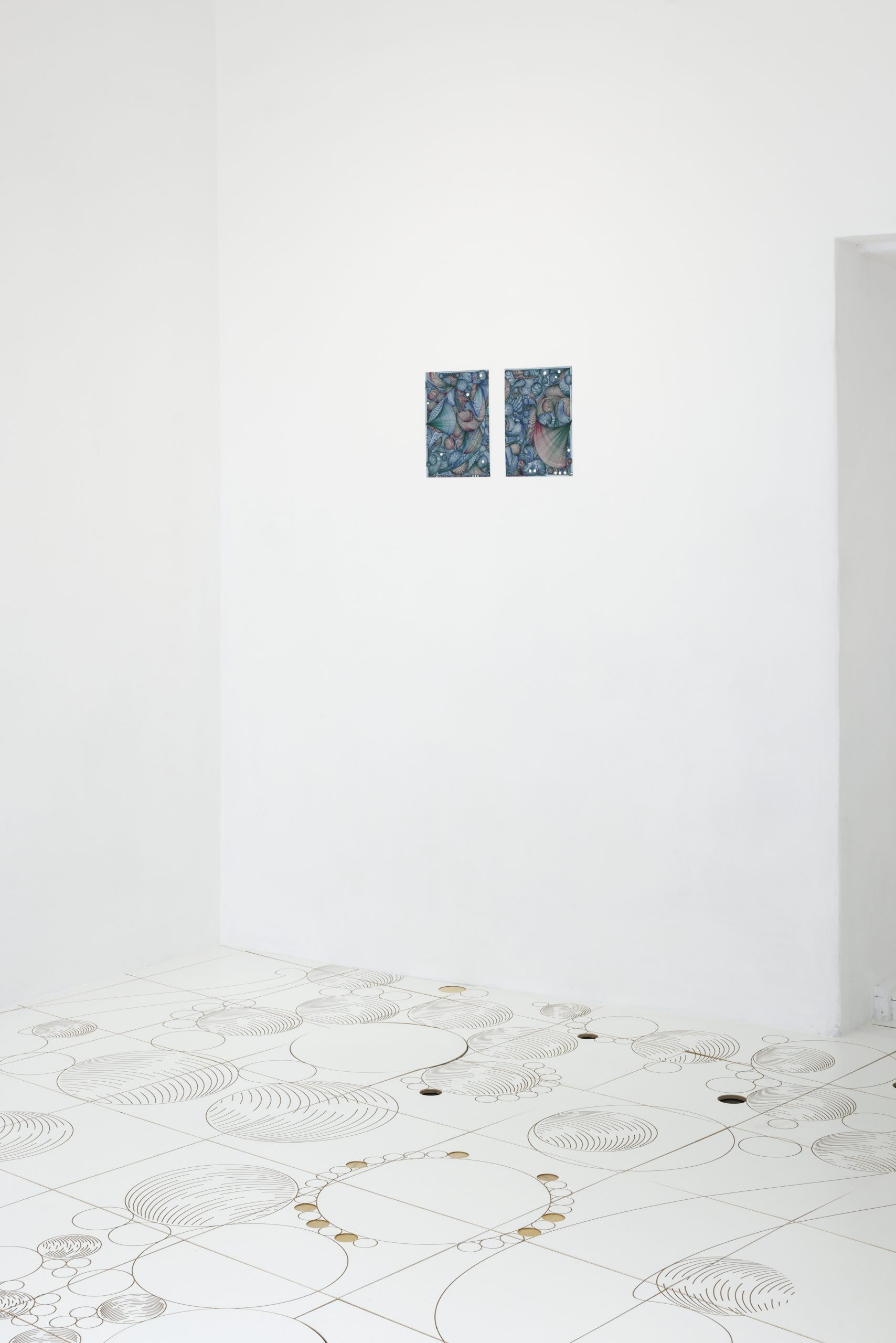
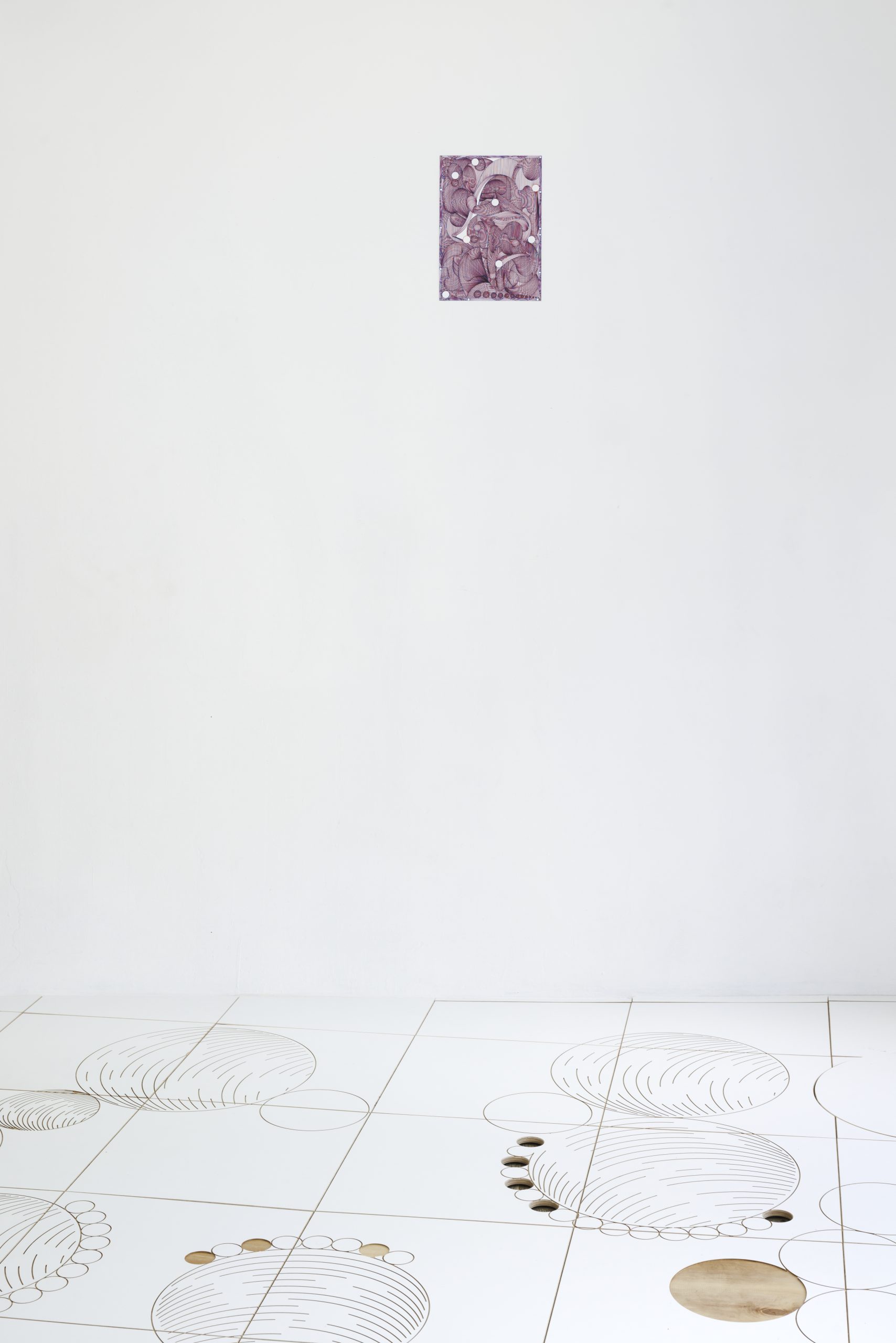
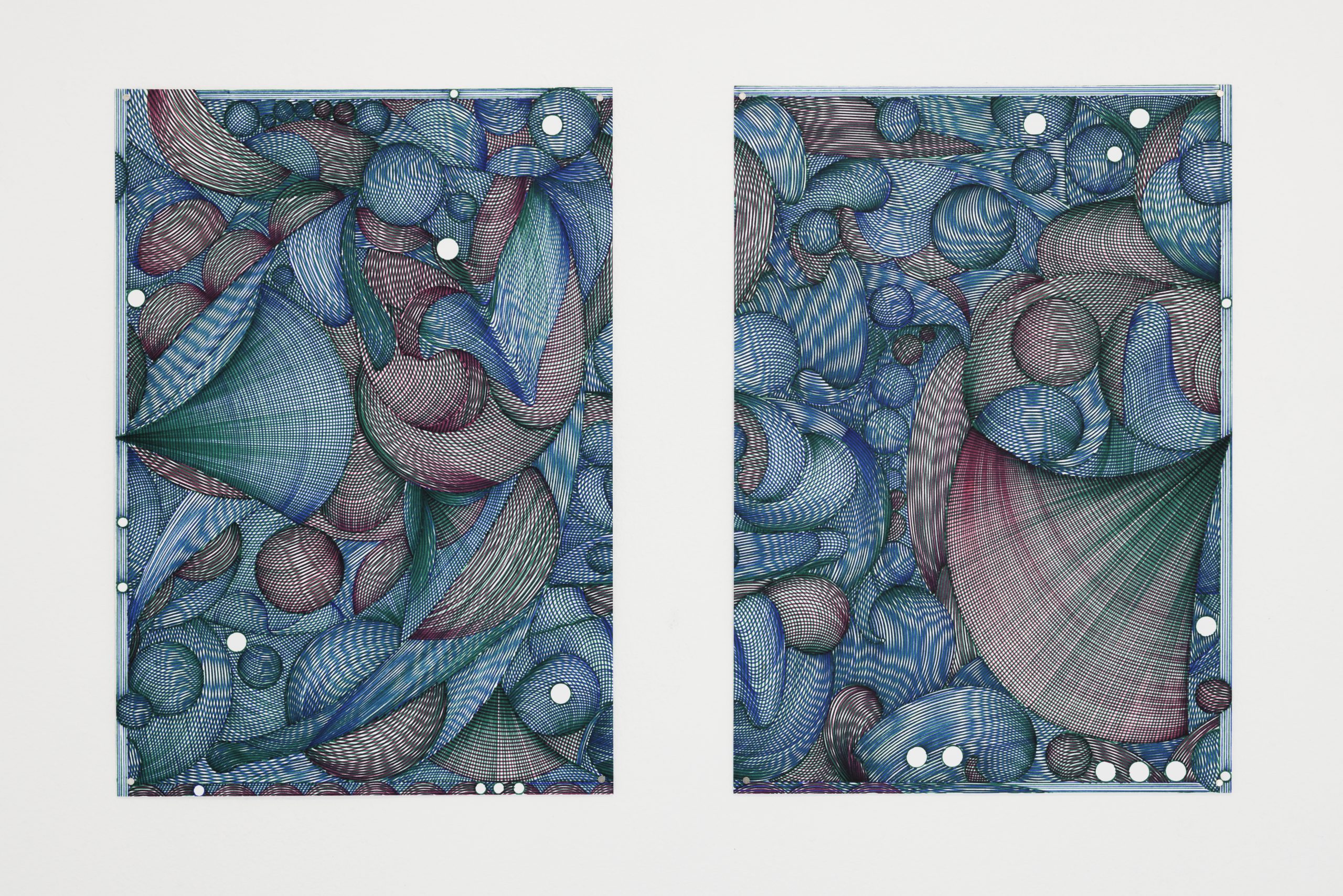
Drawing, permanent marker on paper 21 x 29,7 cm
Pinball superscore (2), 2025
Drawing, permanent marker on paper 21 x 29,7 cm
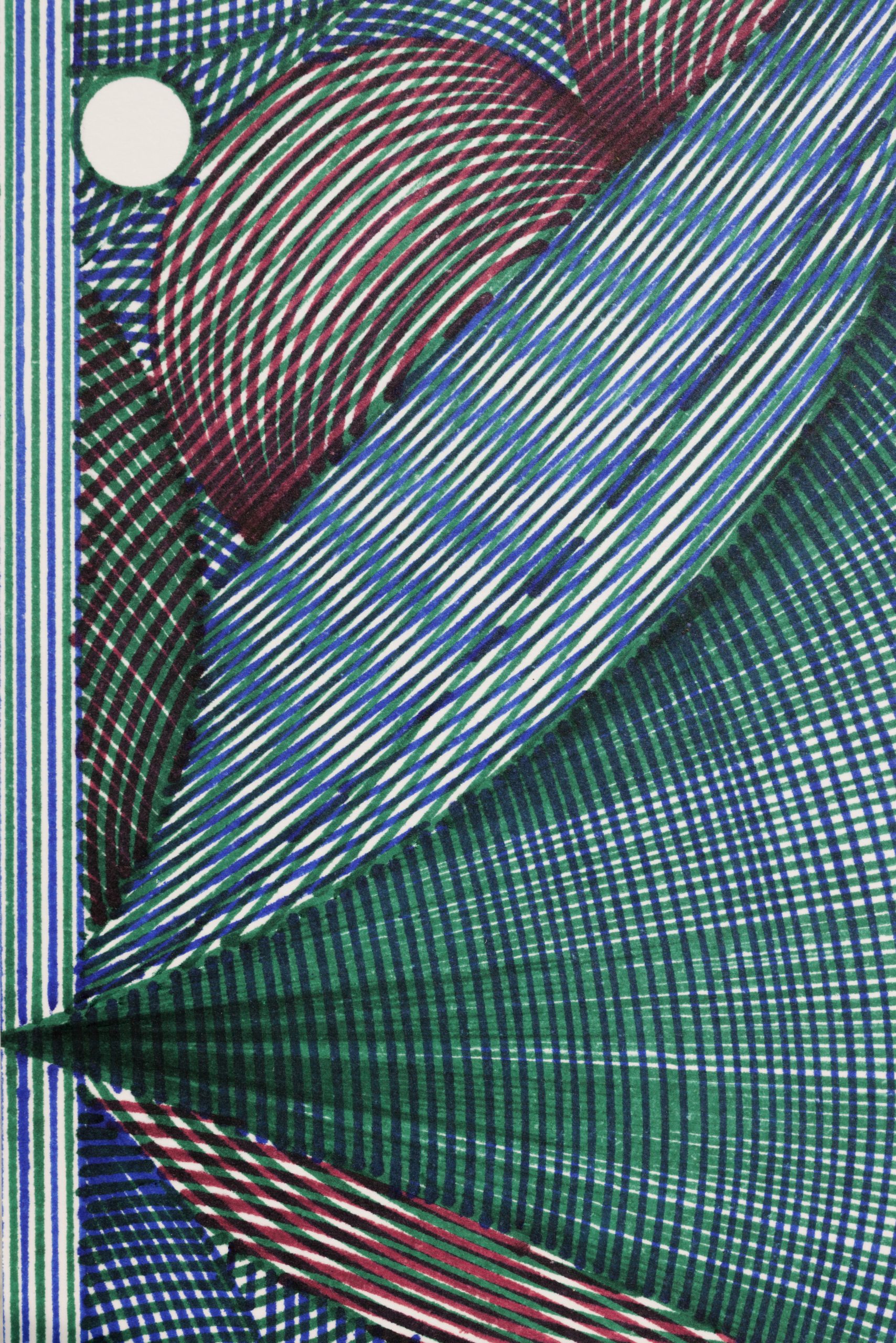
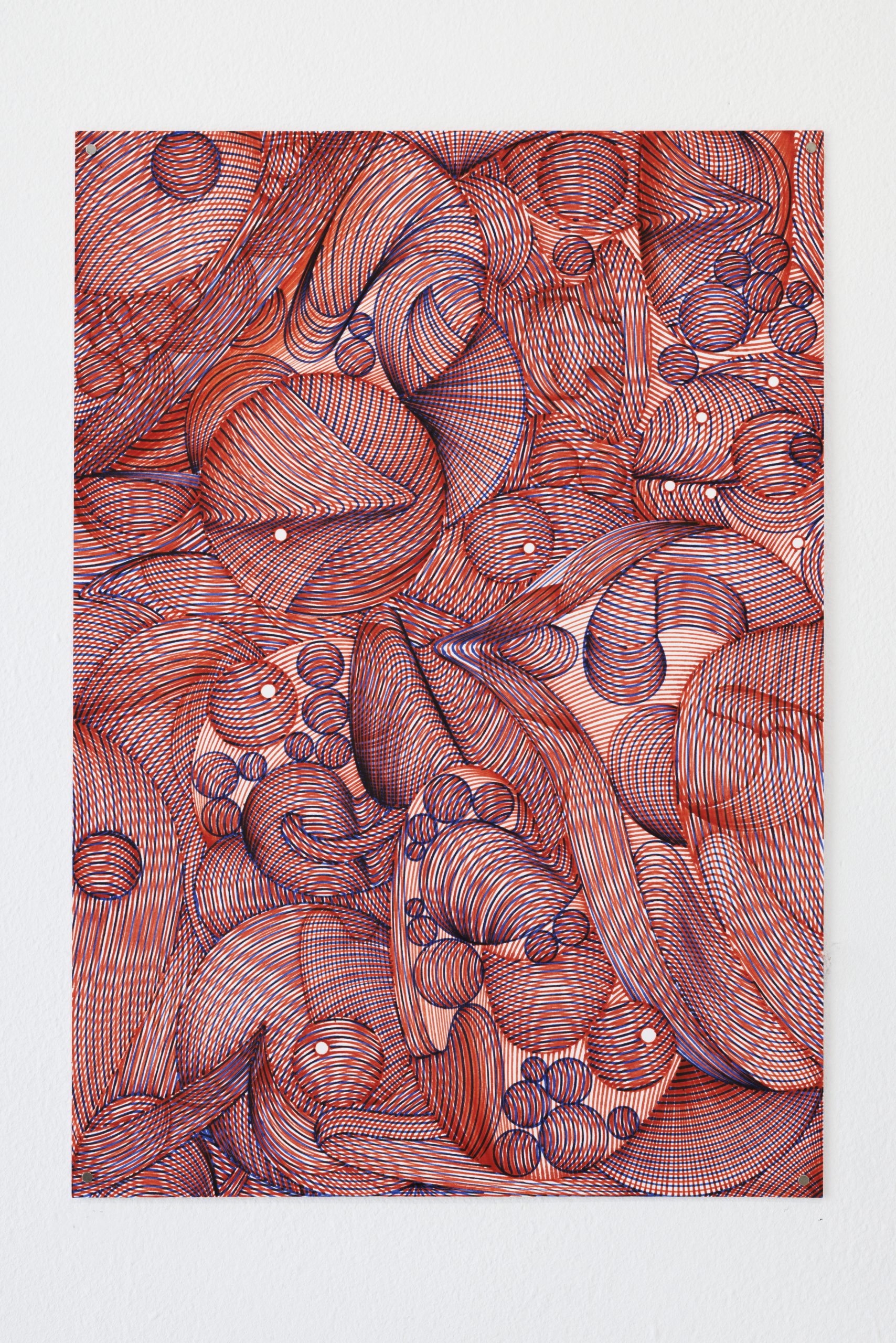
Drawing, permanent marker on paper 21 x 29,7 cm
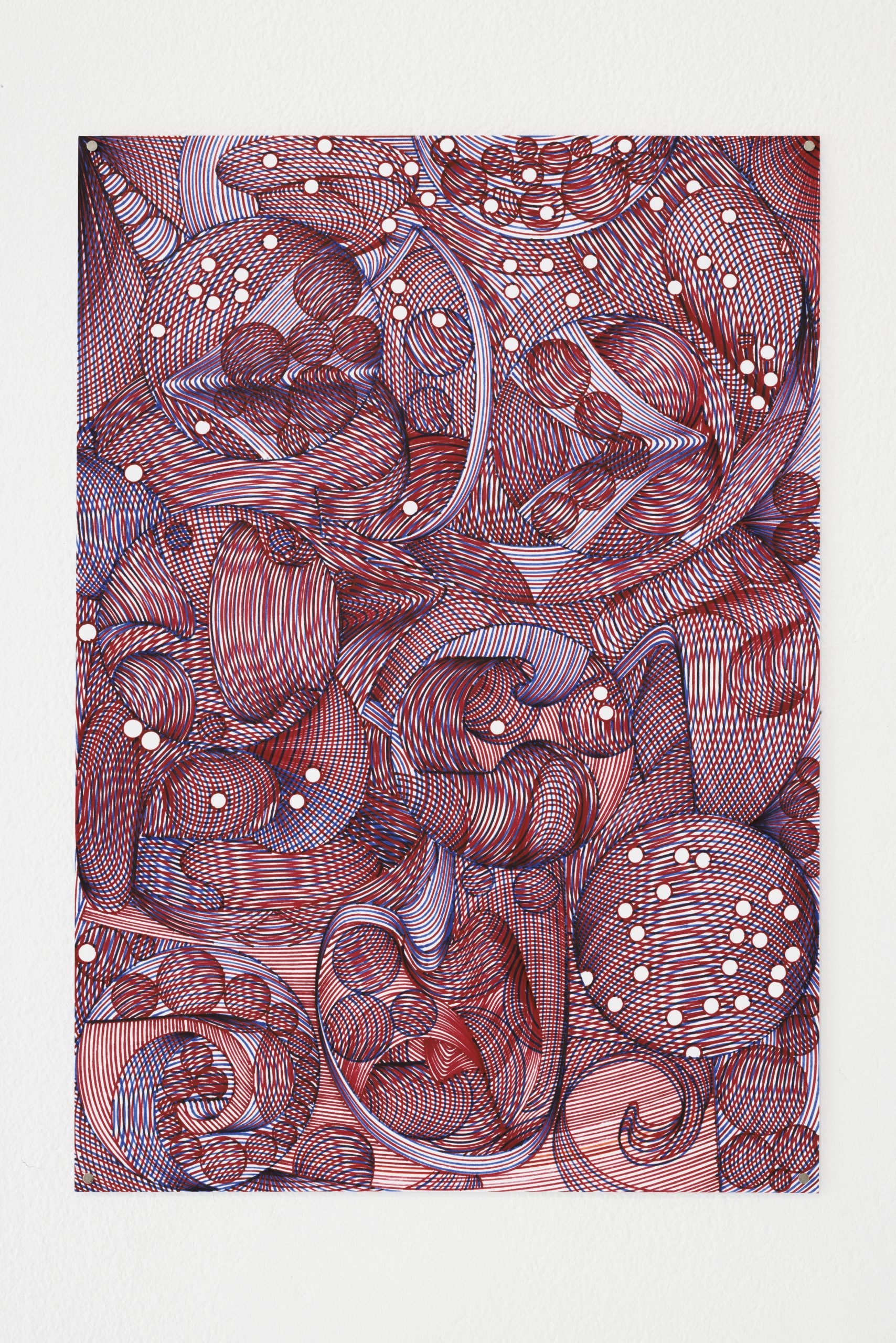
Drawing, permanent marker on paper 21 x 29,7 cm
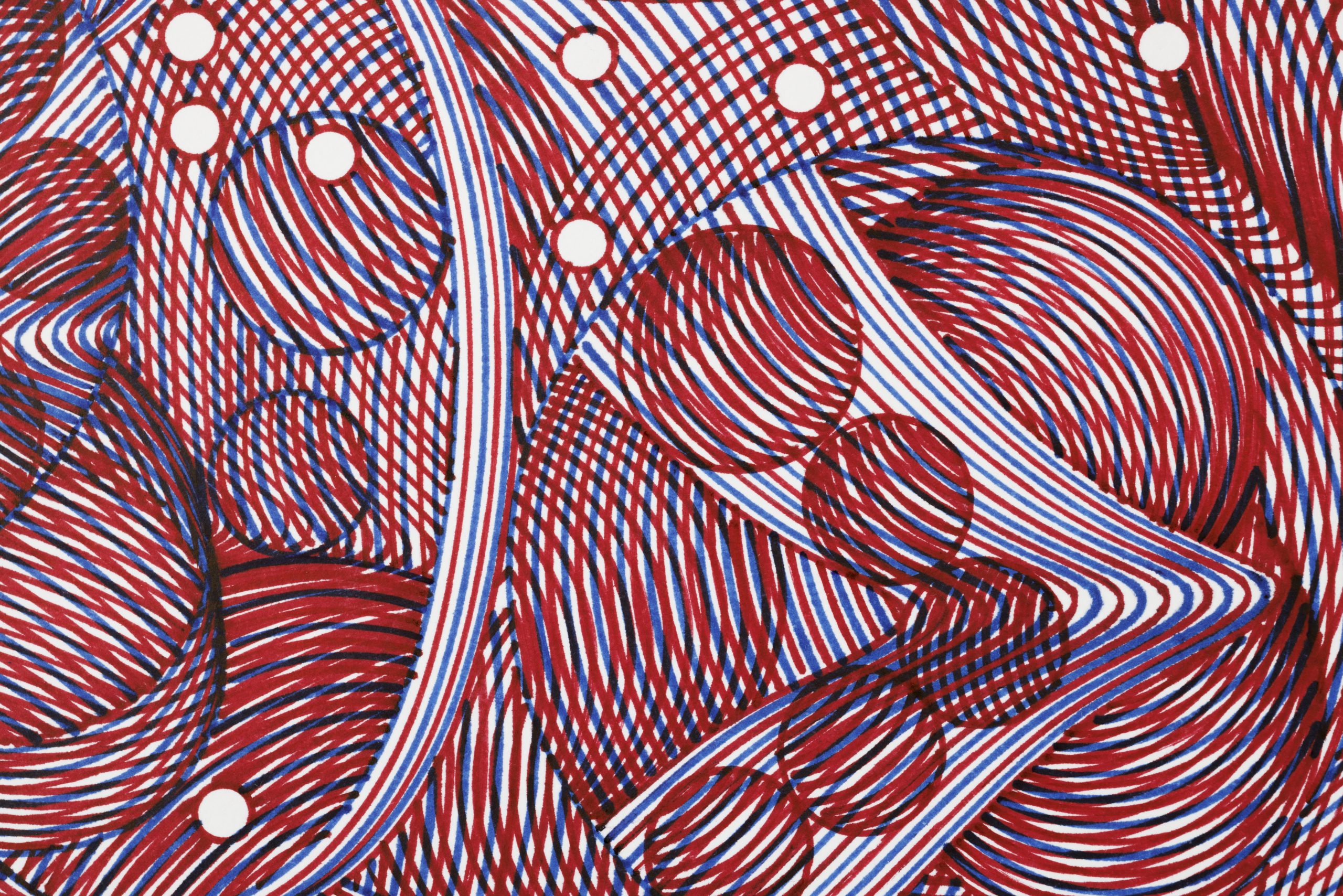
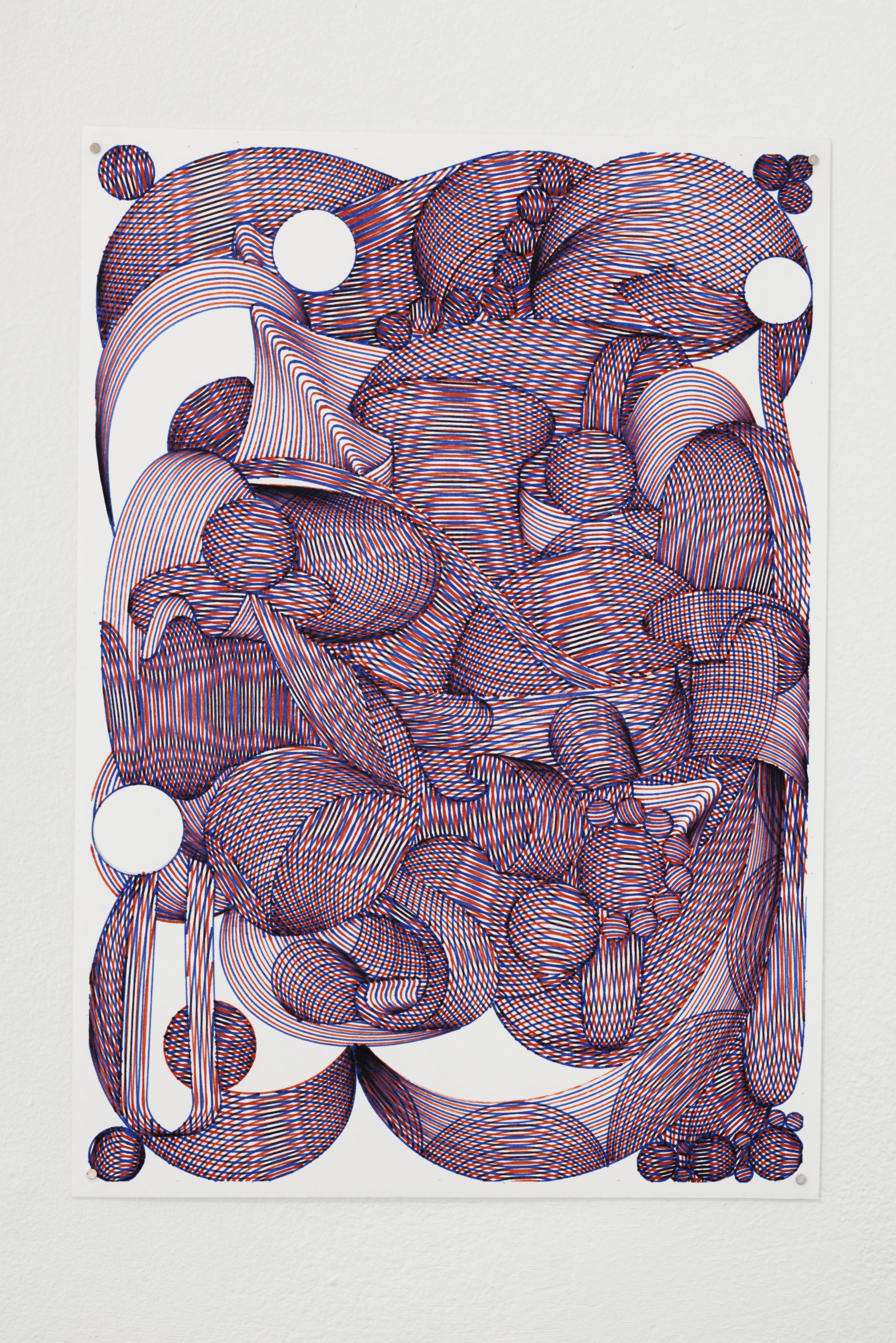
Drawing, permanent marker on paper 21 x 29,7 cm
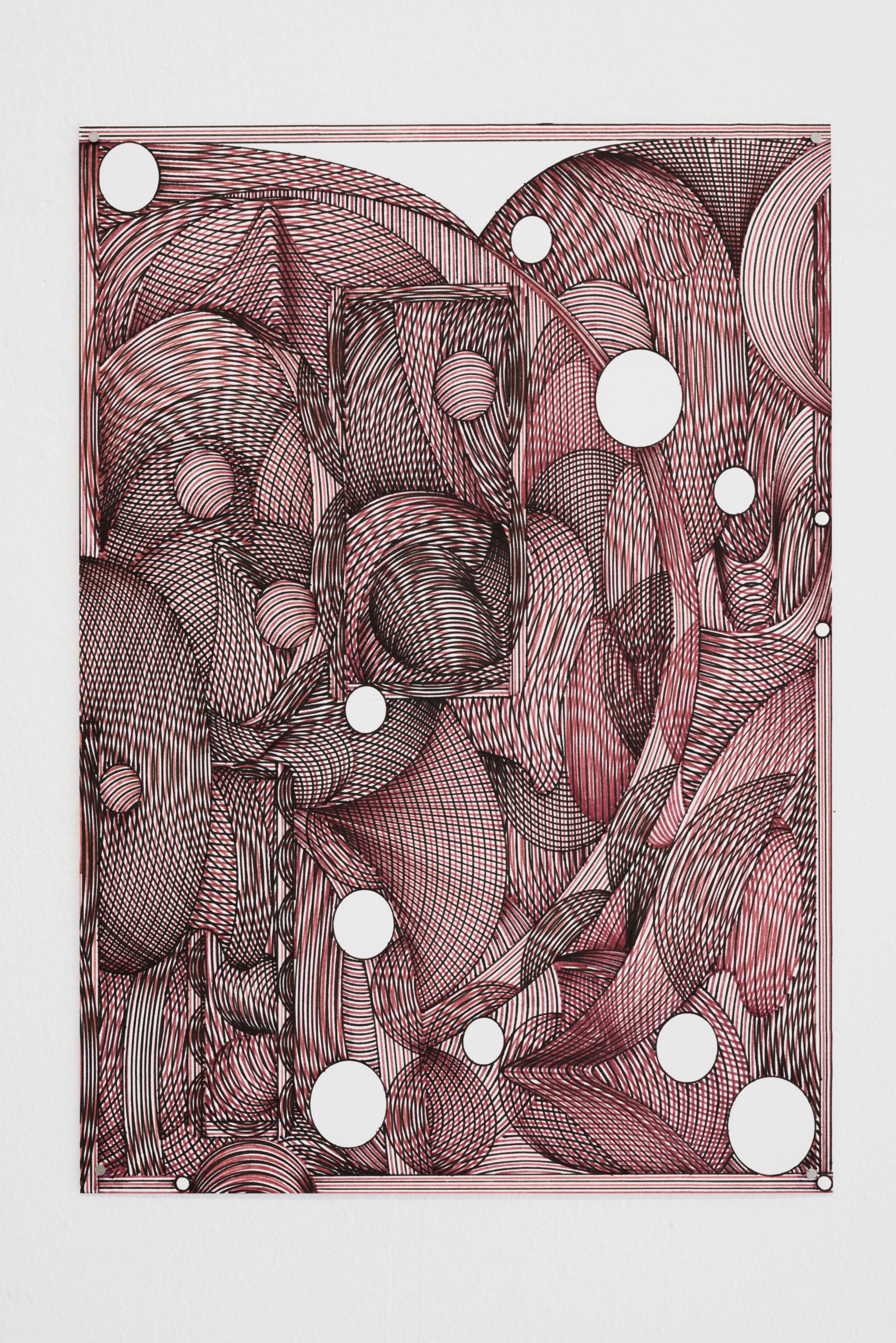
Drawing, permanent marker on paper 21 x 29,7 cm

Drawing, permanent marker on paper 21 x 29,7 cm
Photo: Ansis Starks
